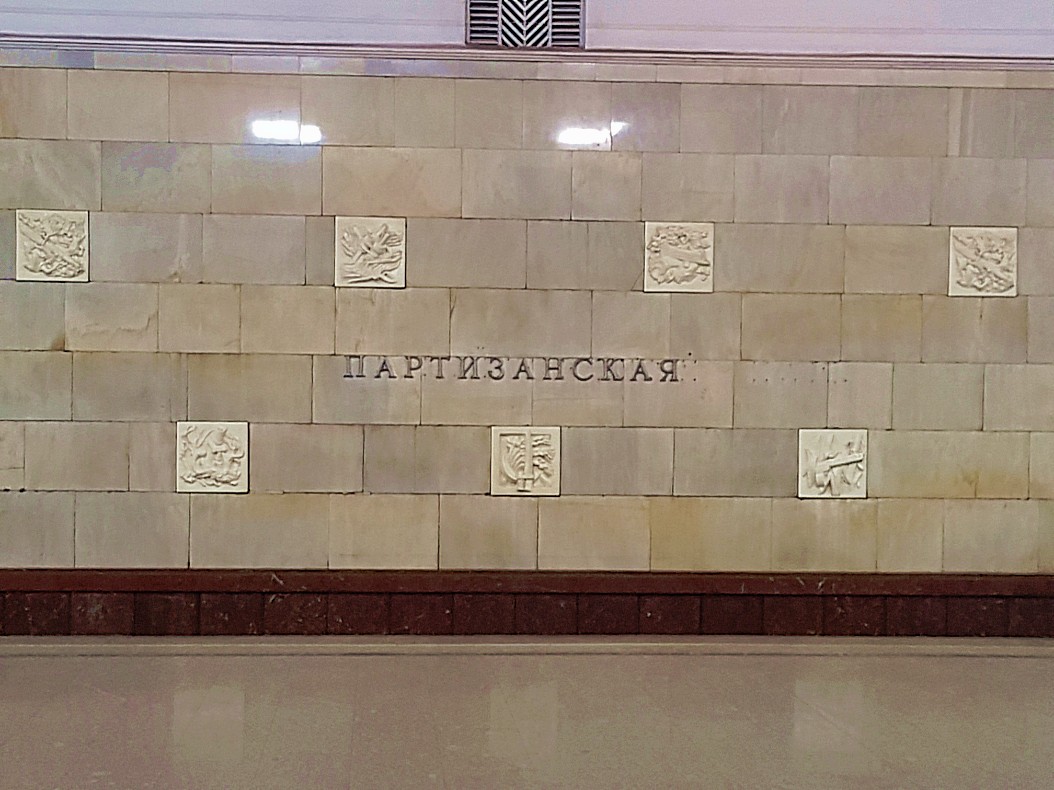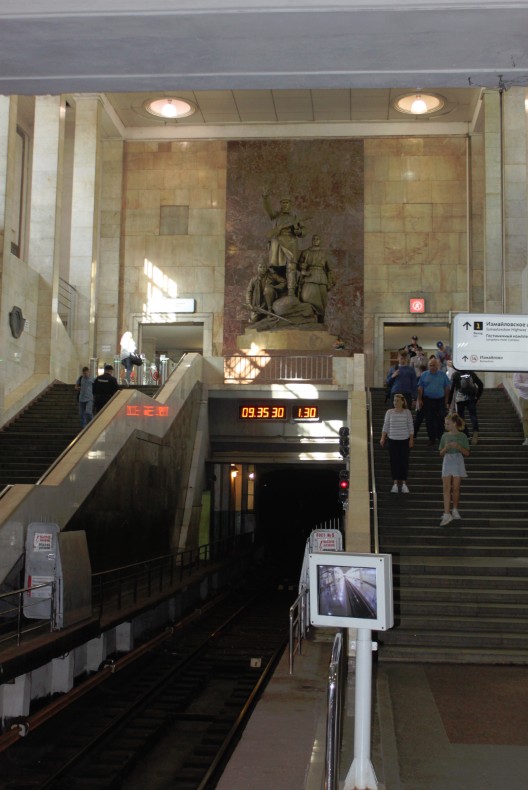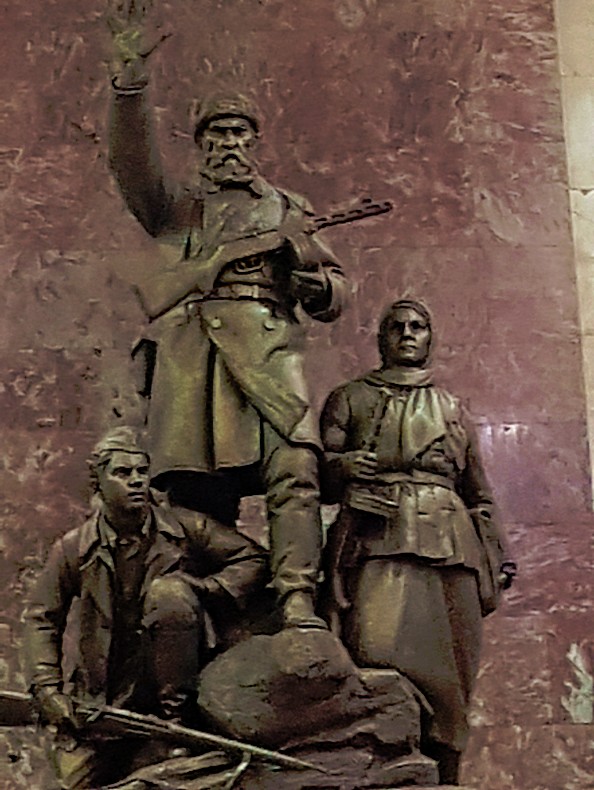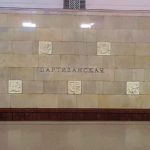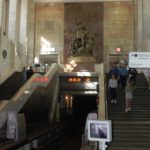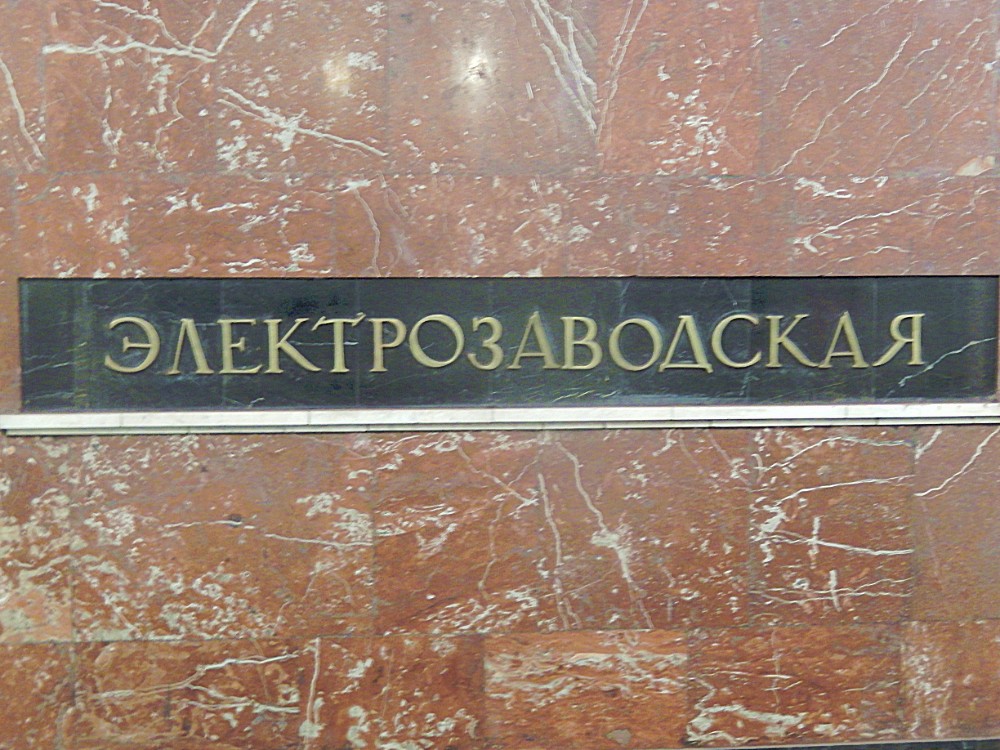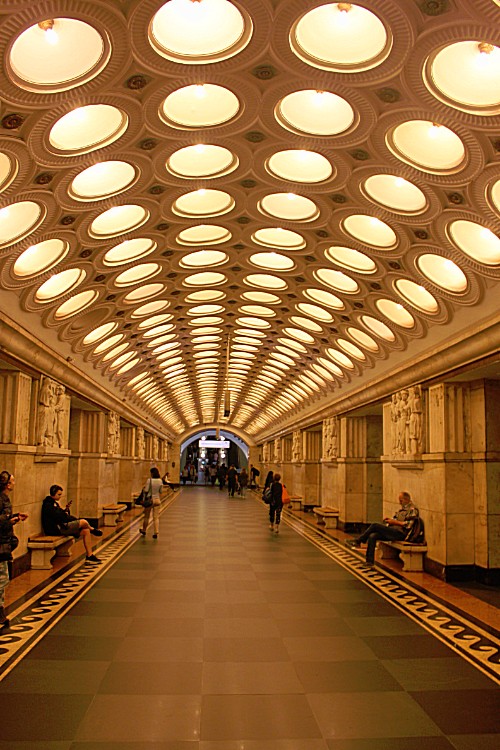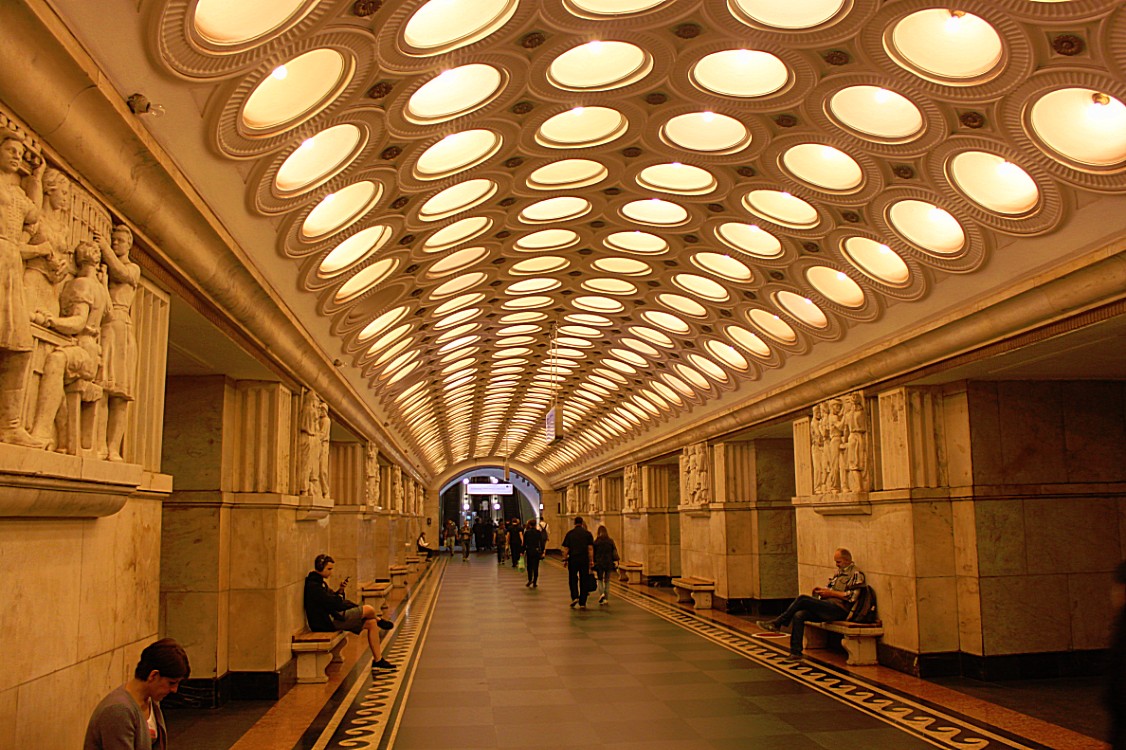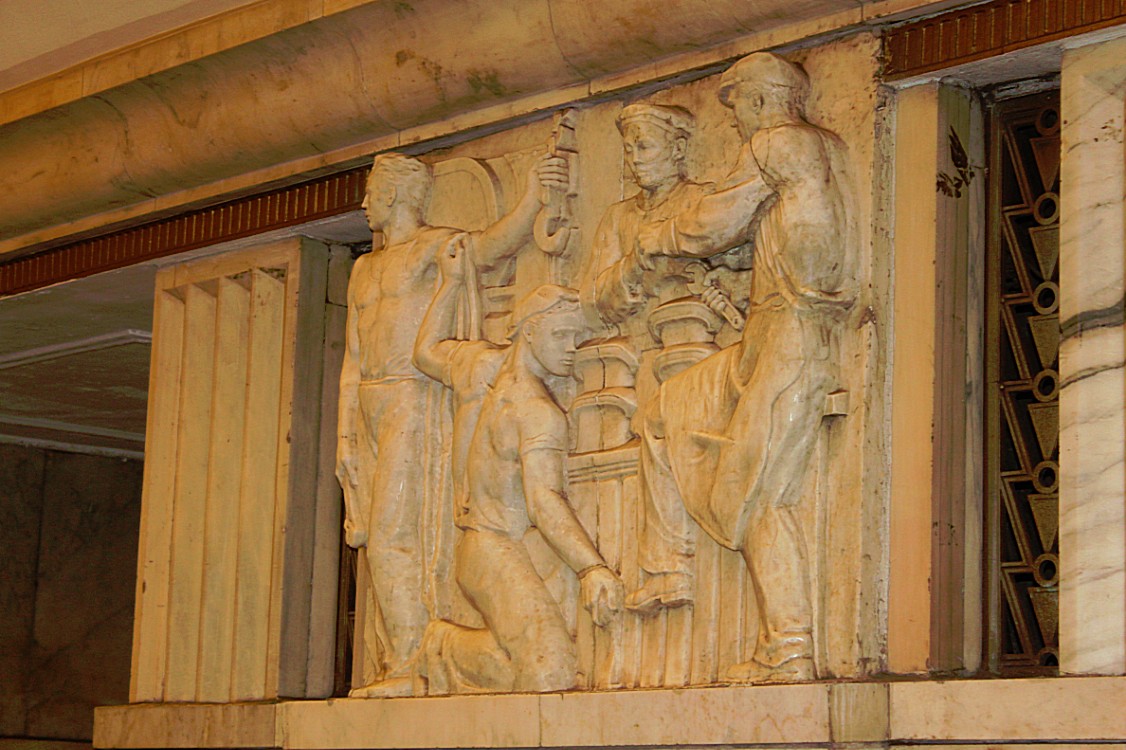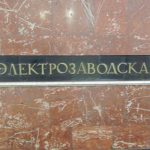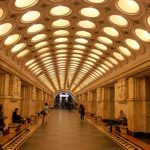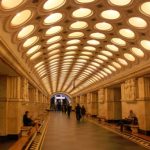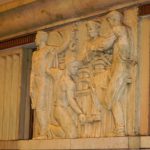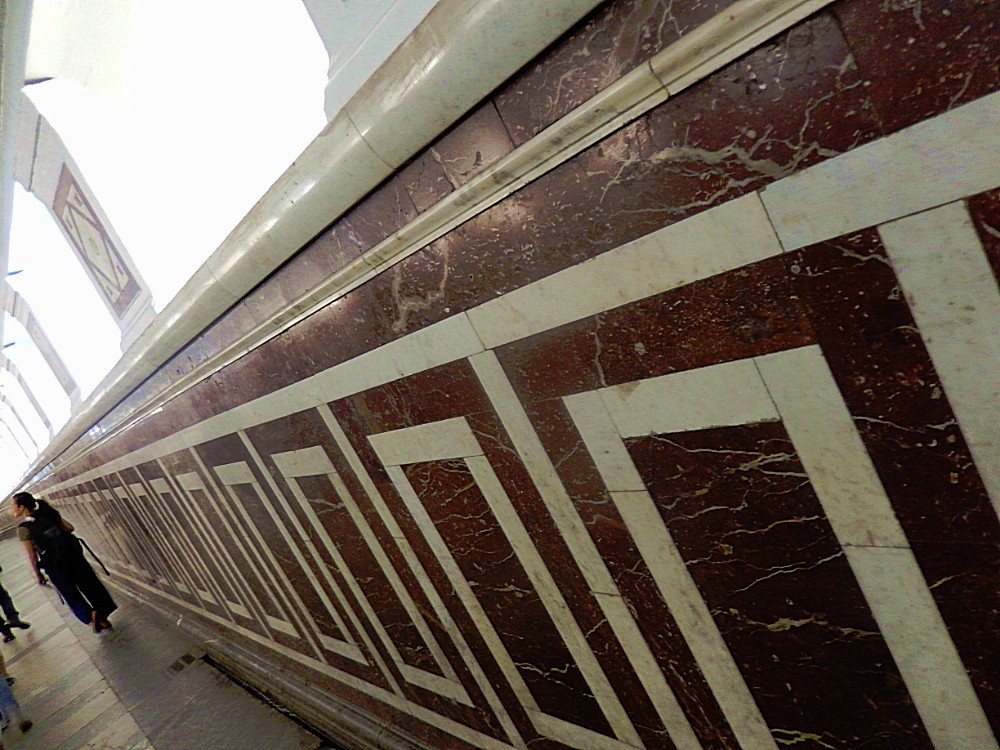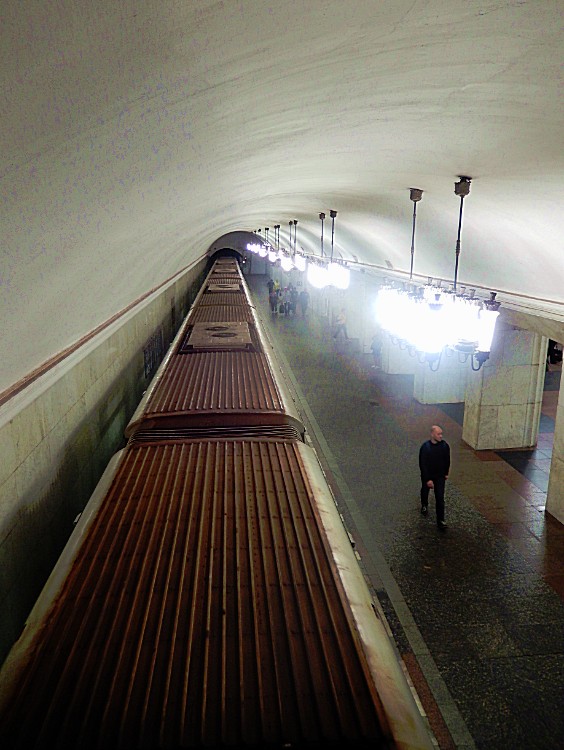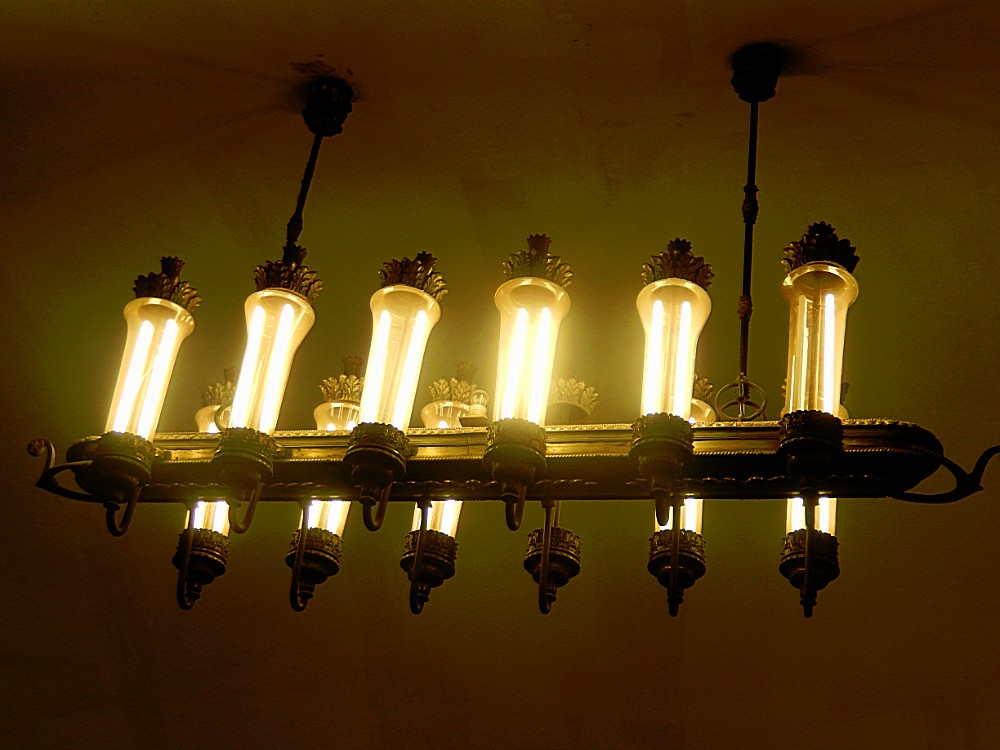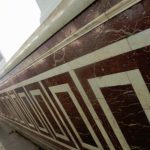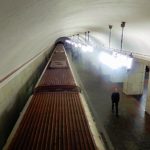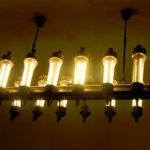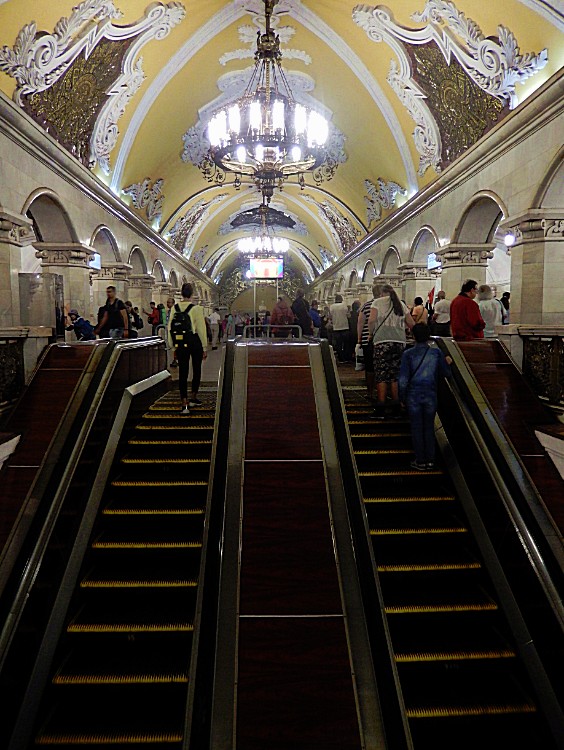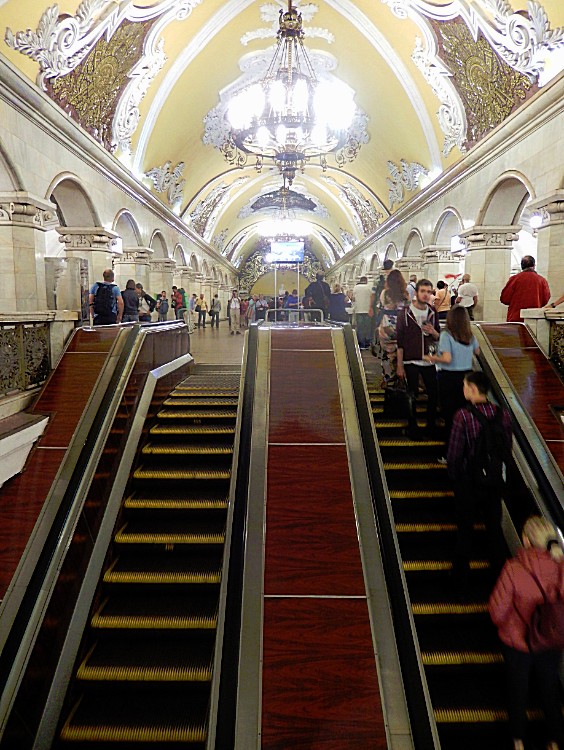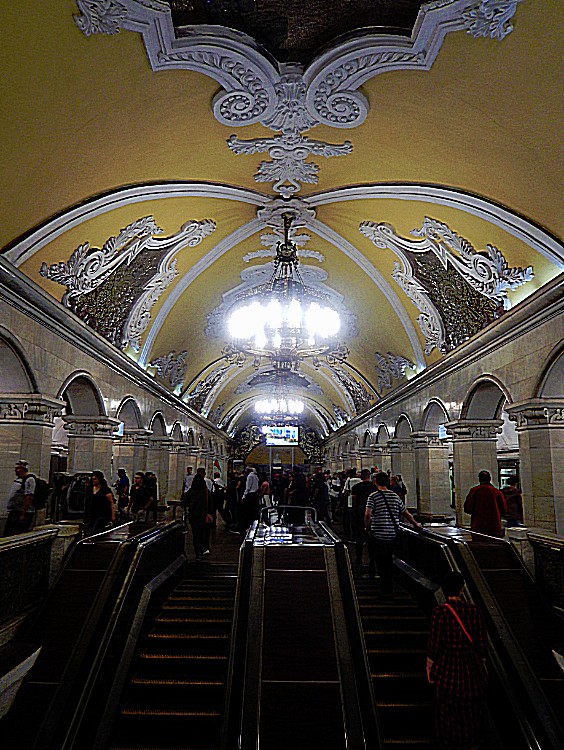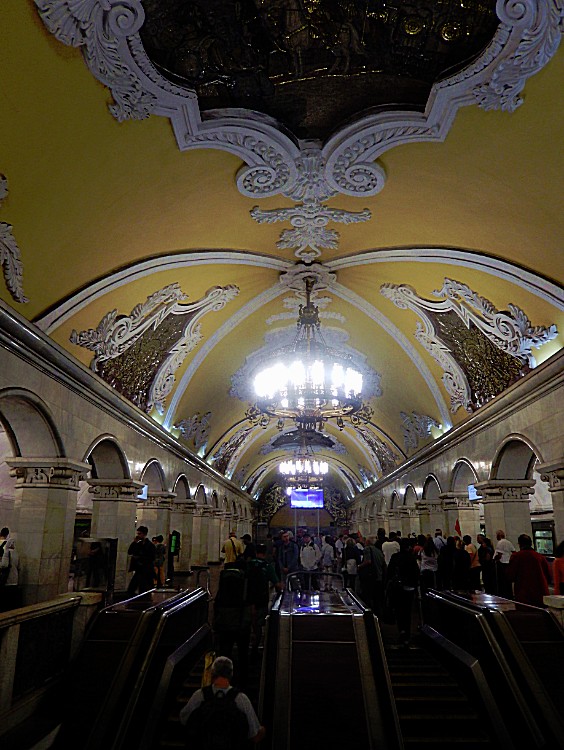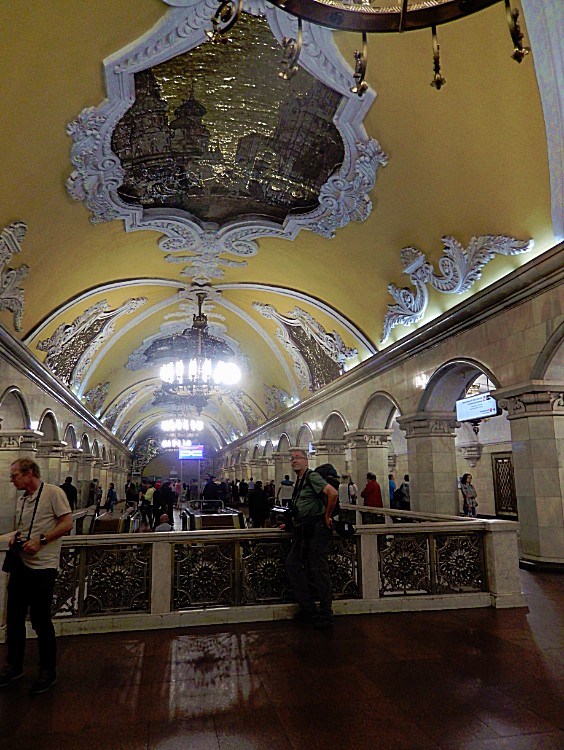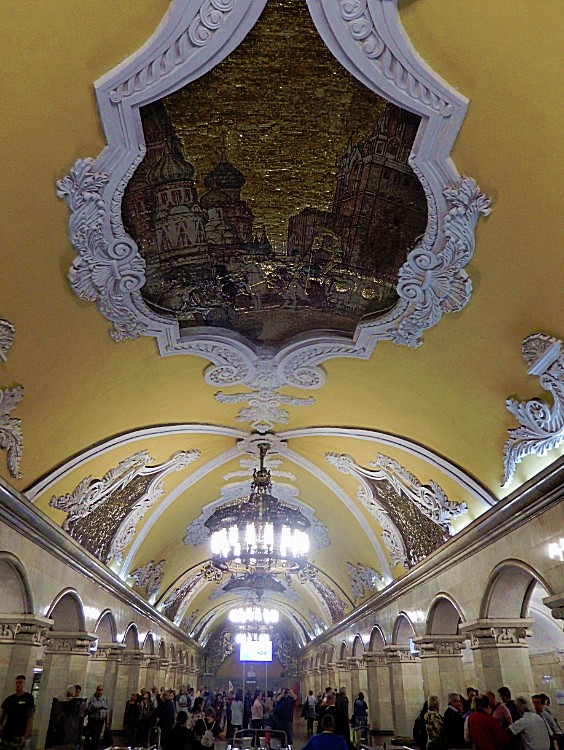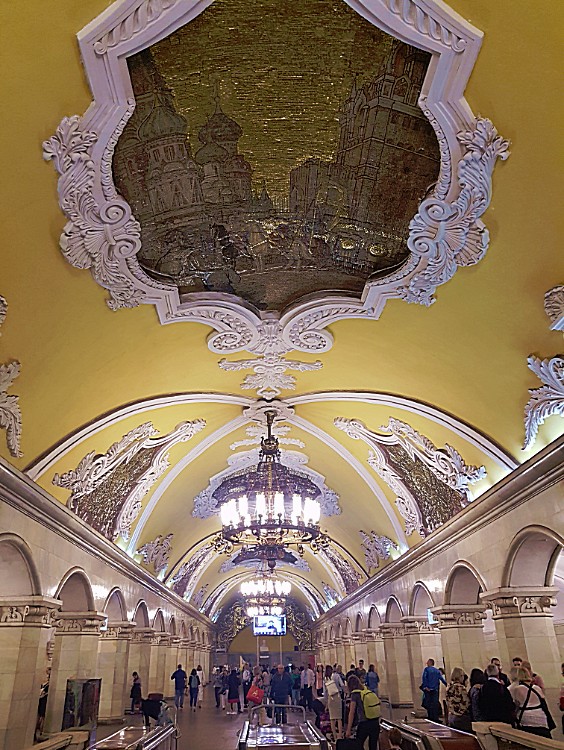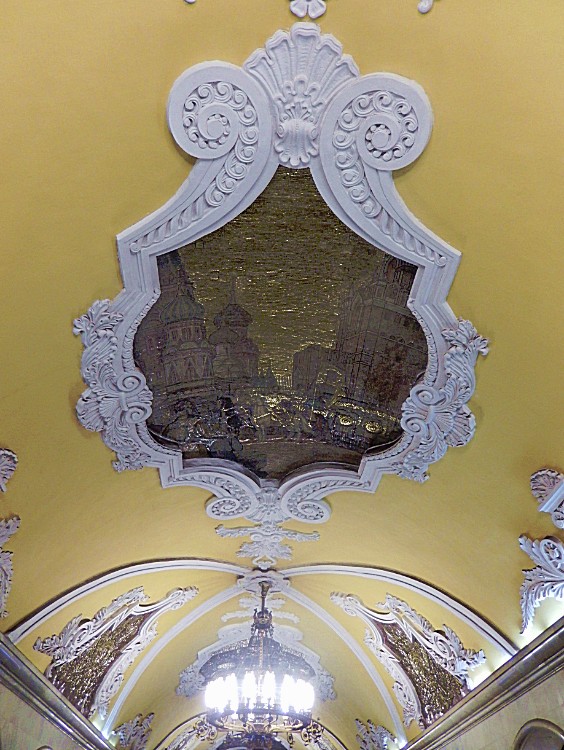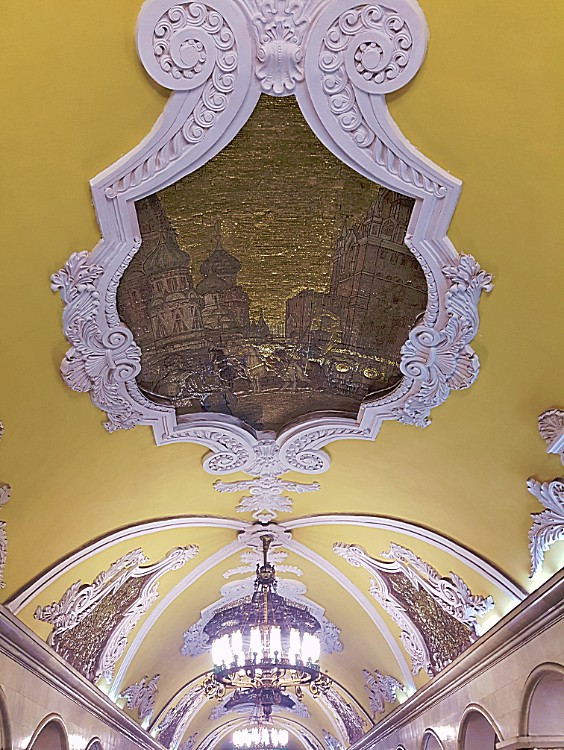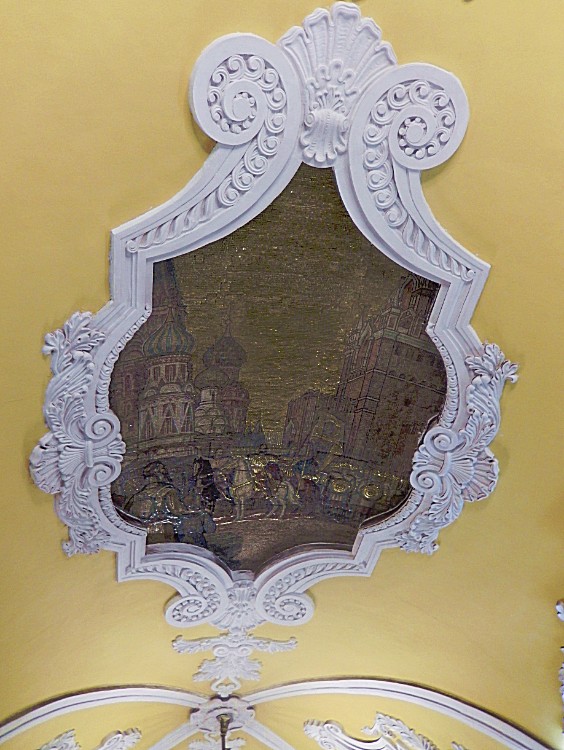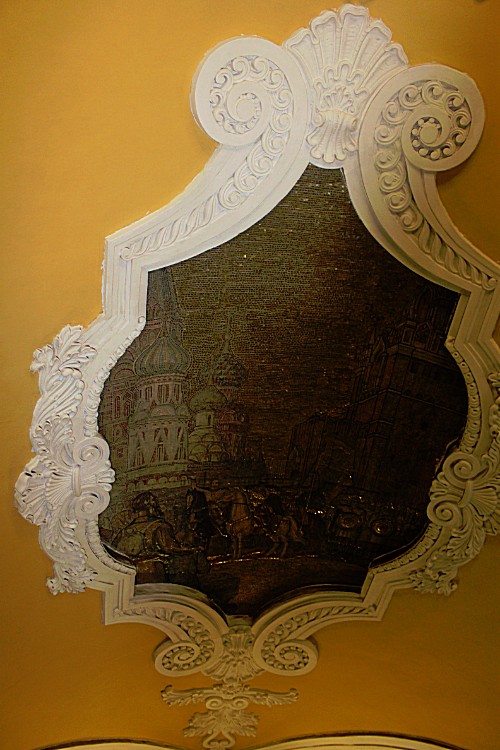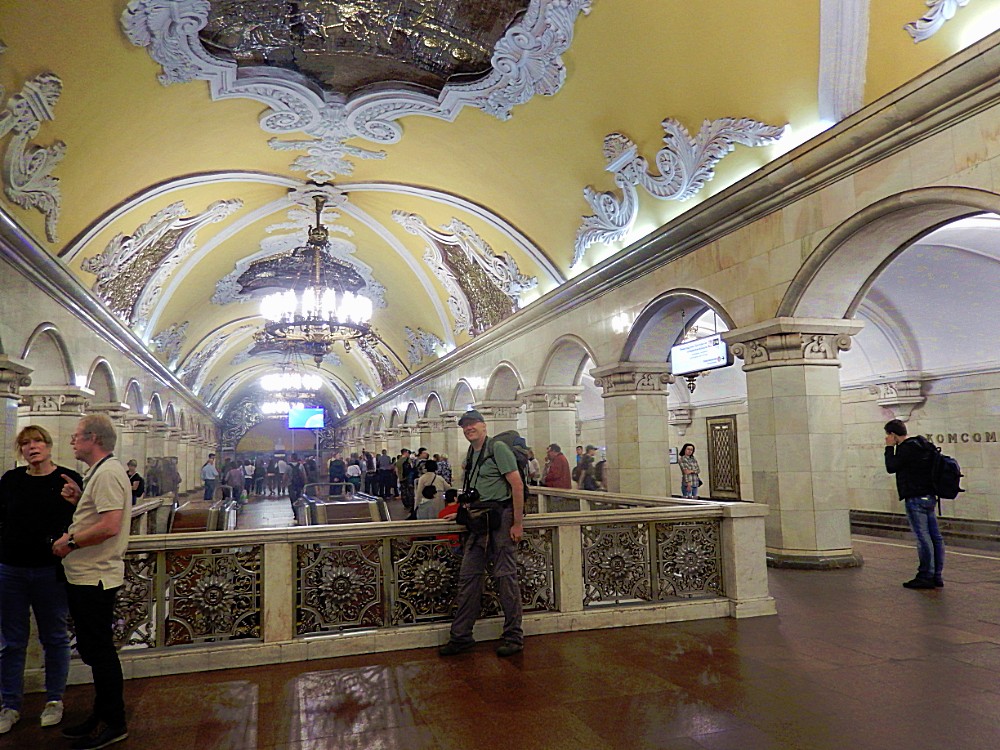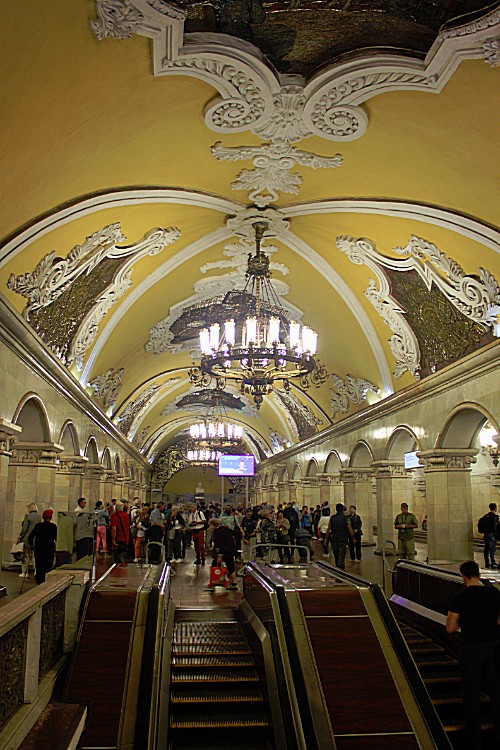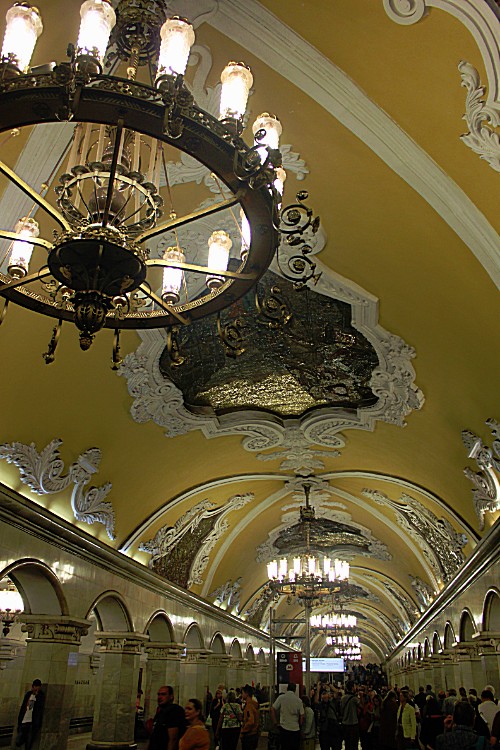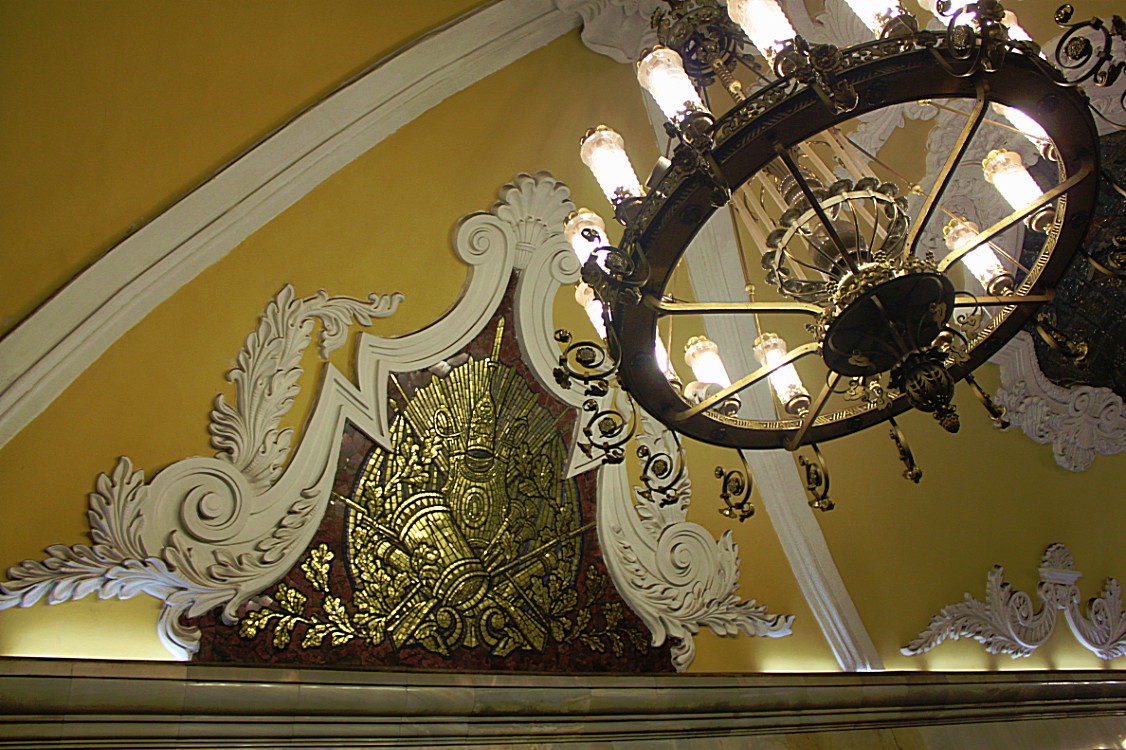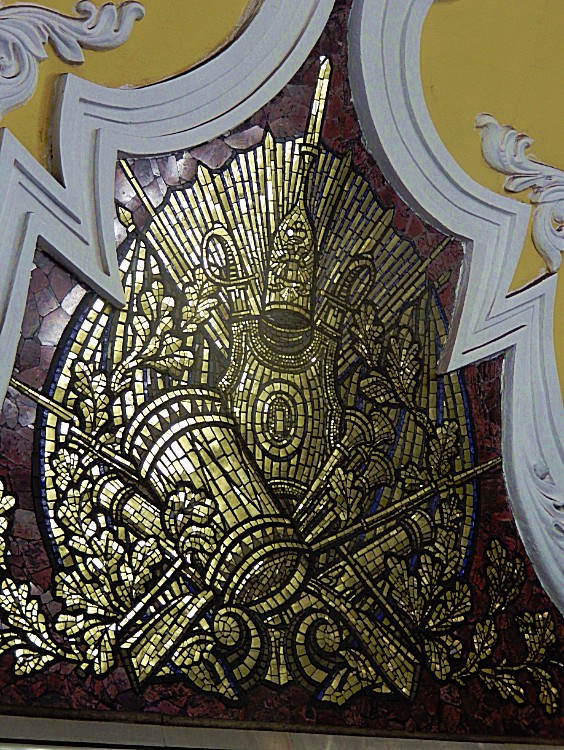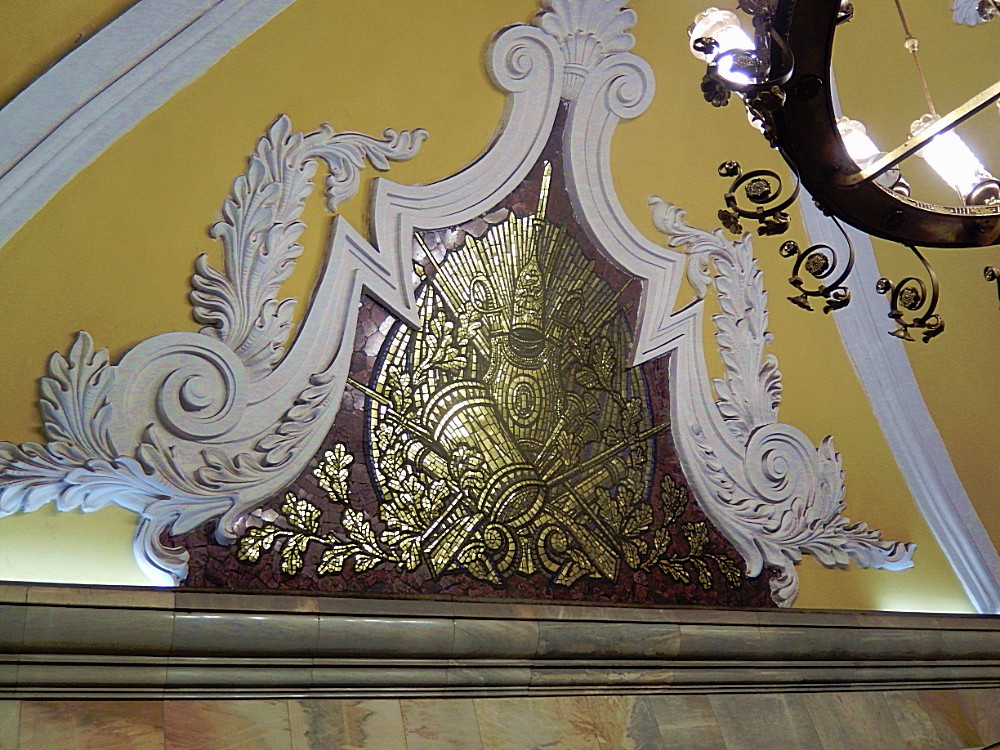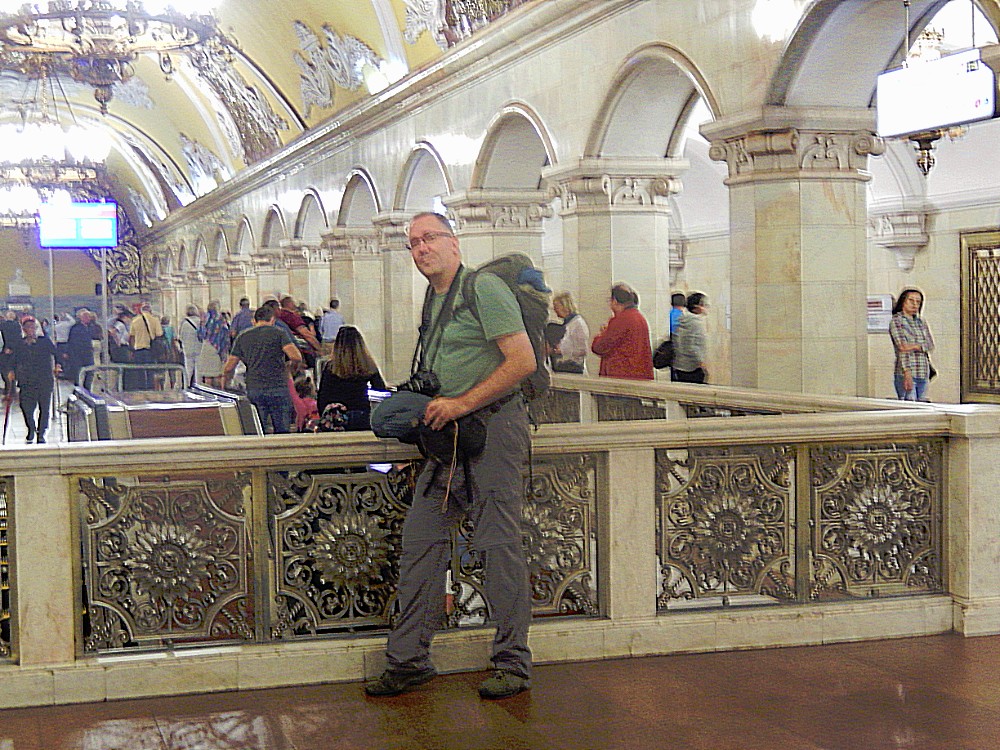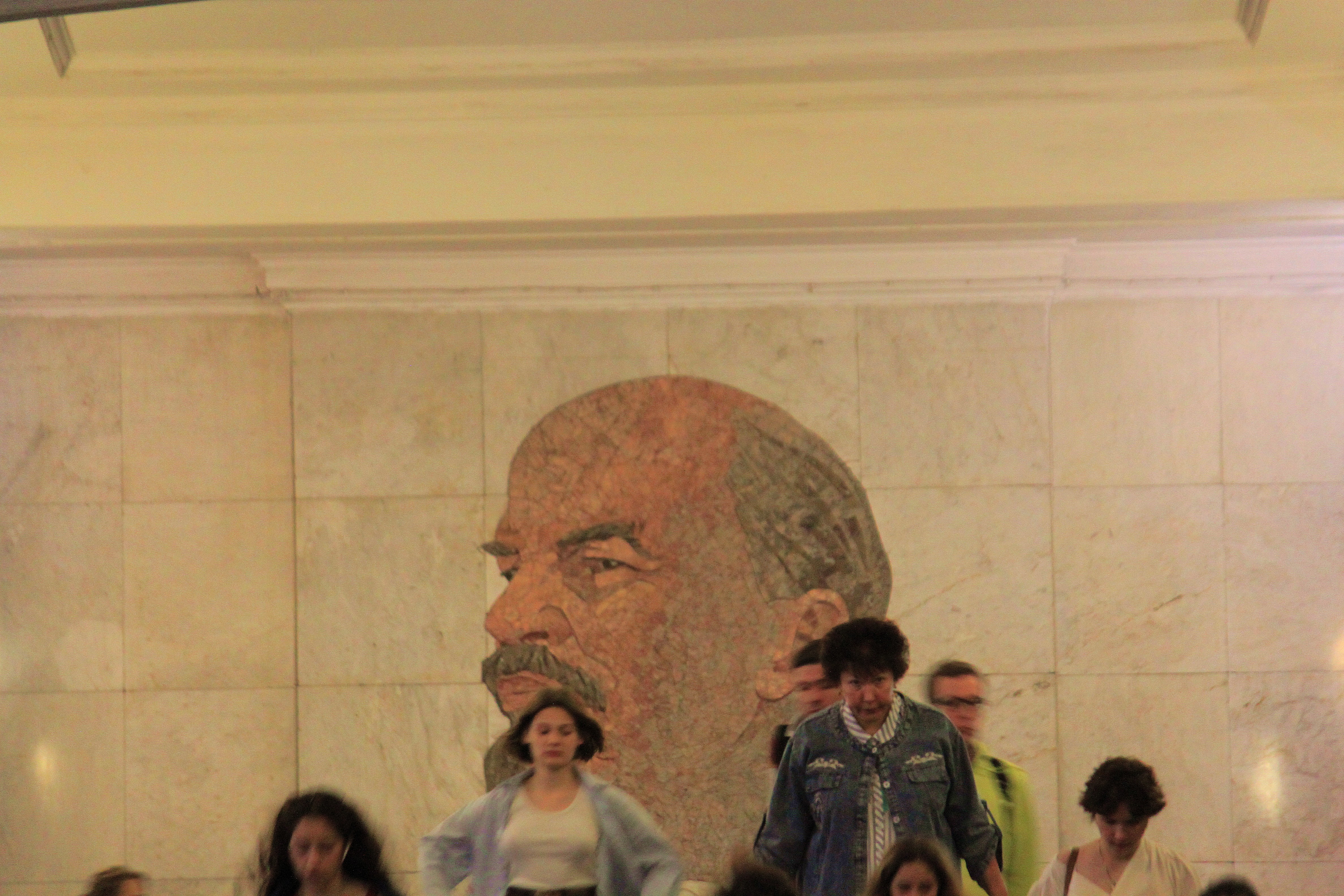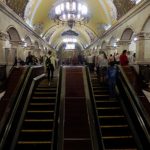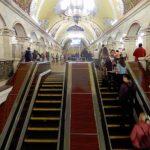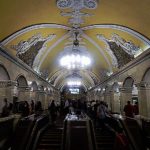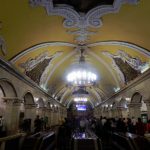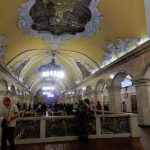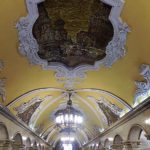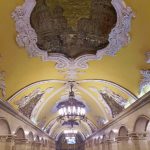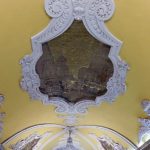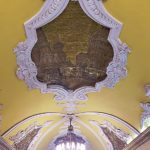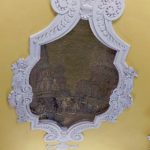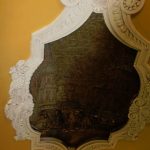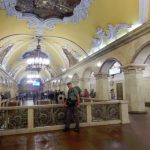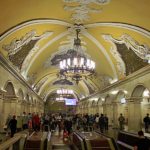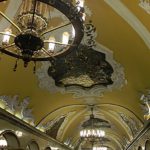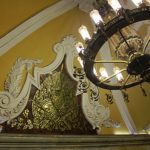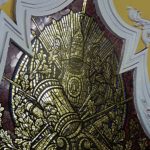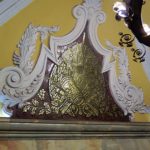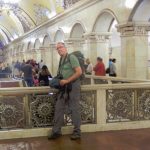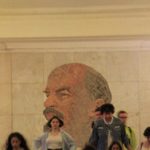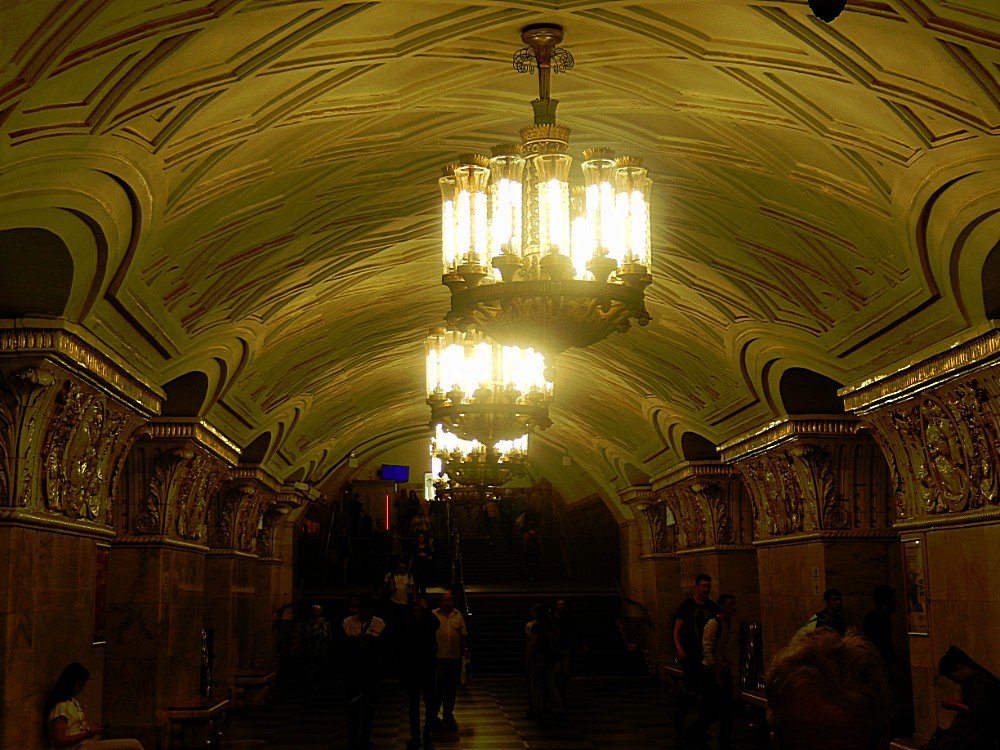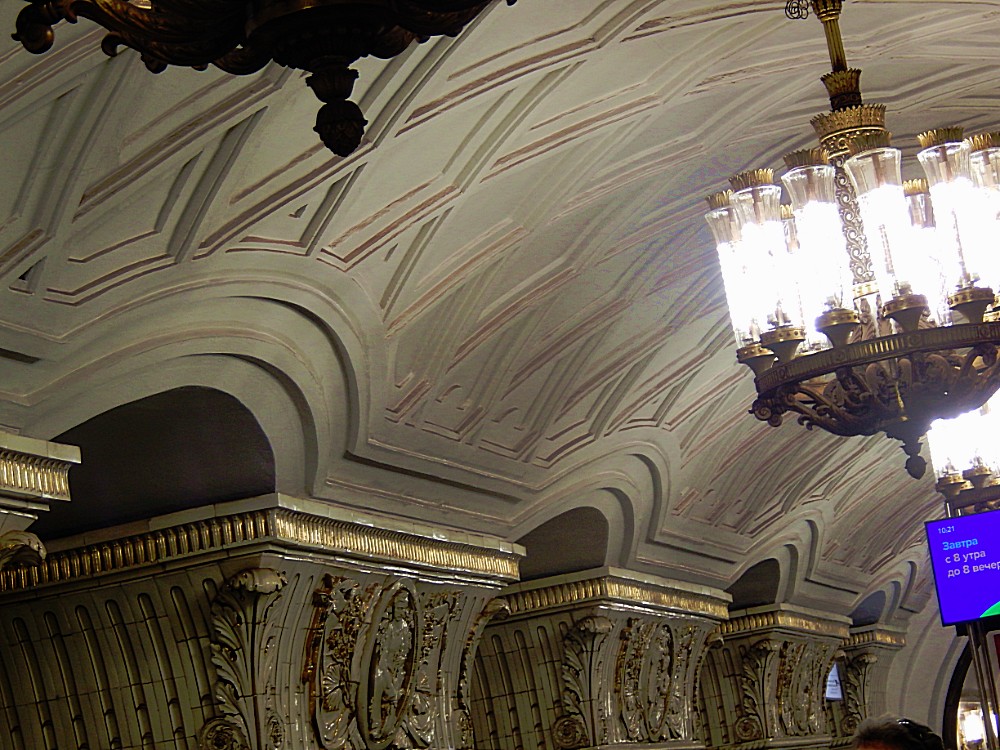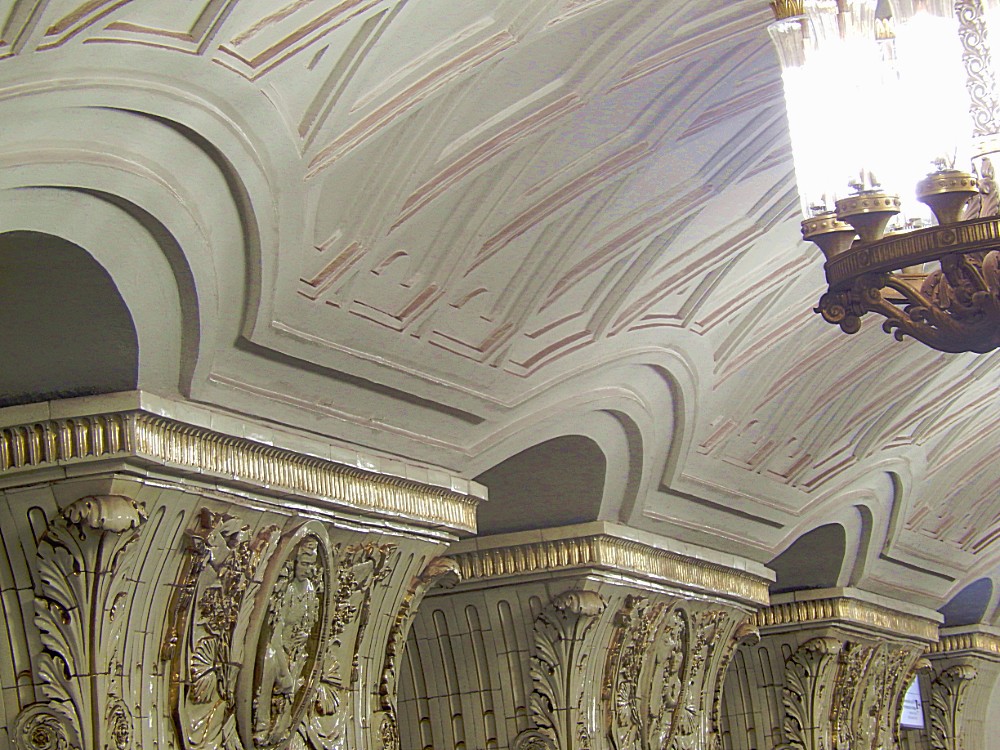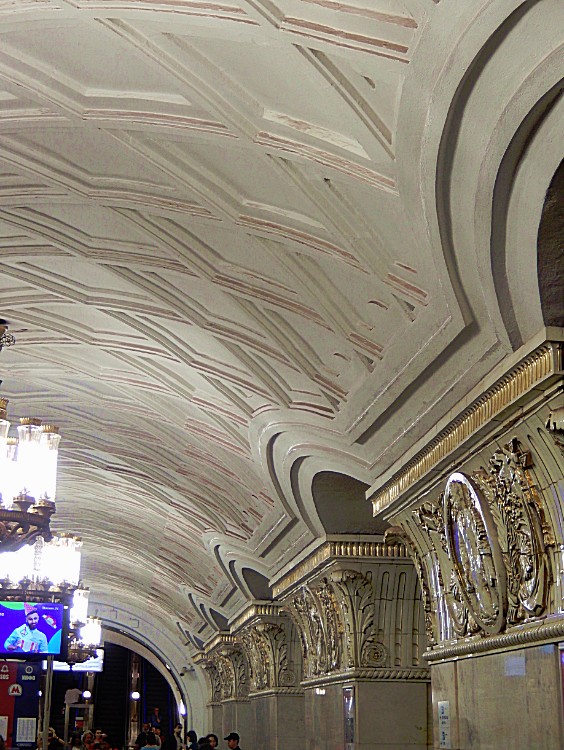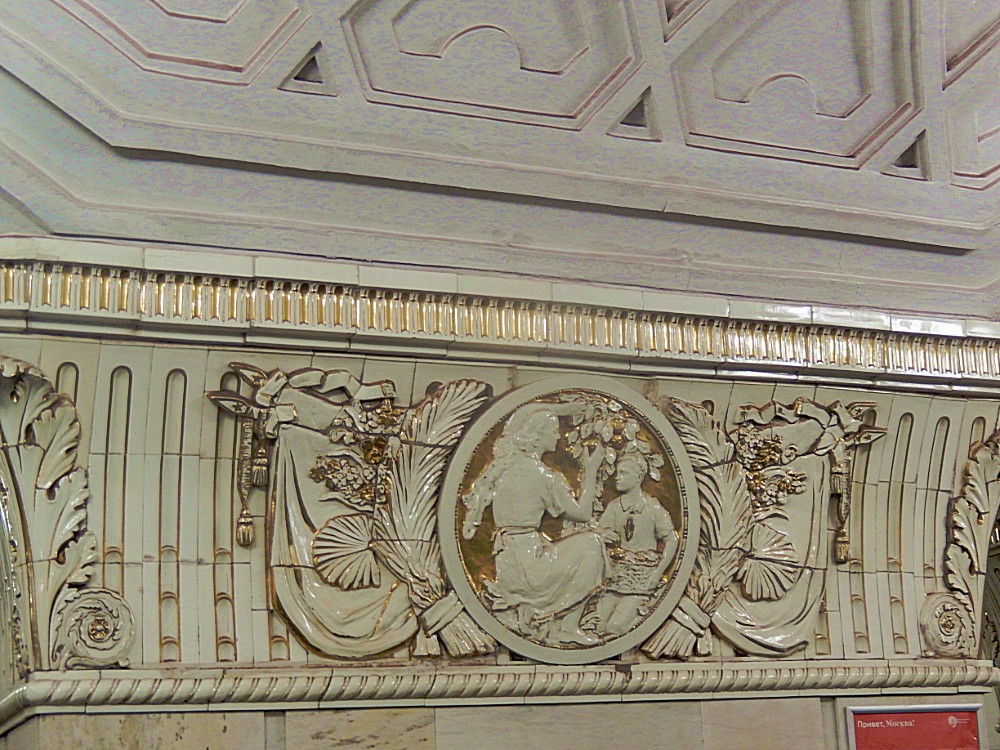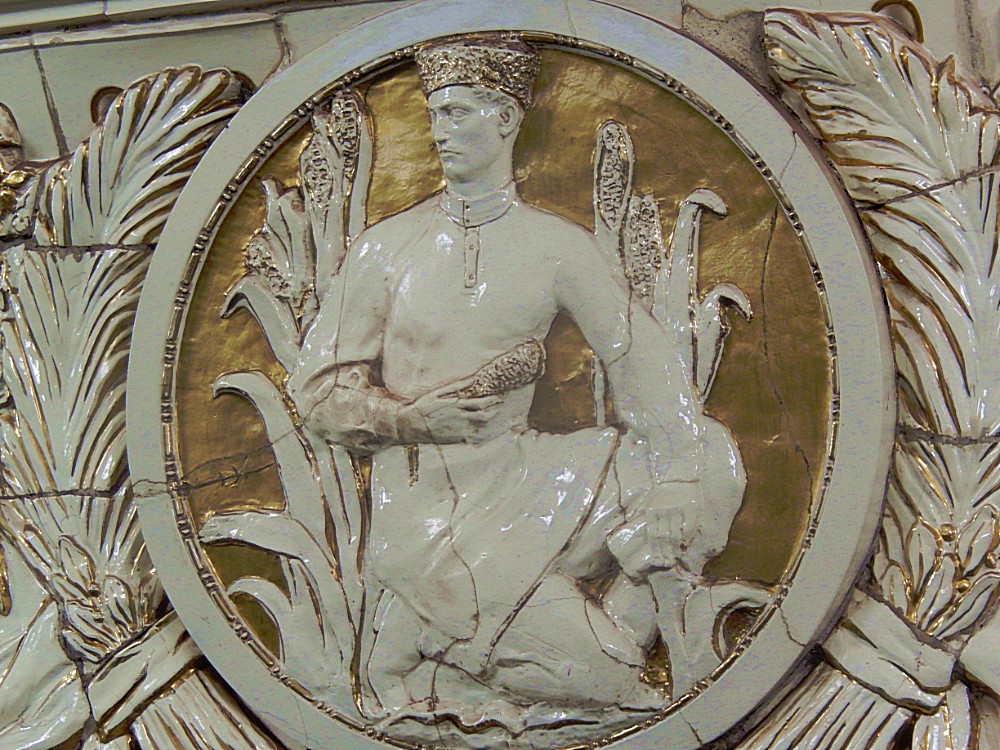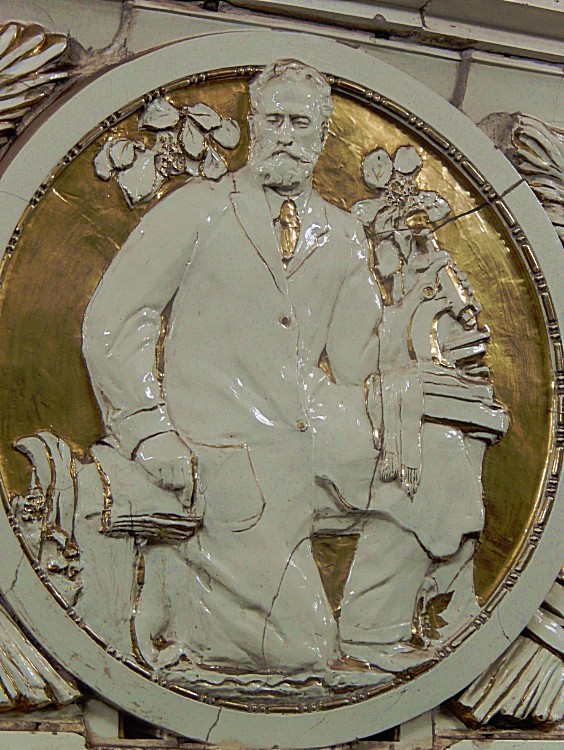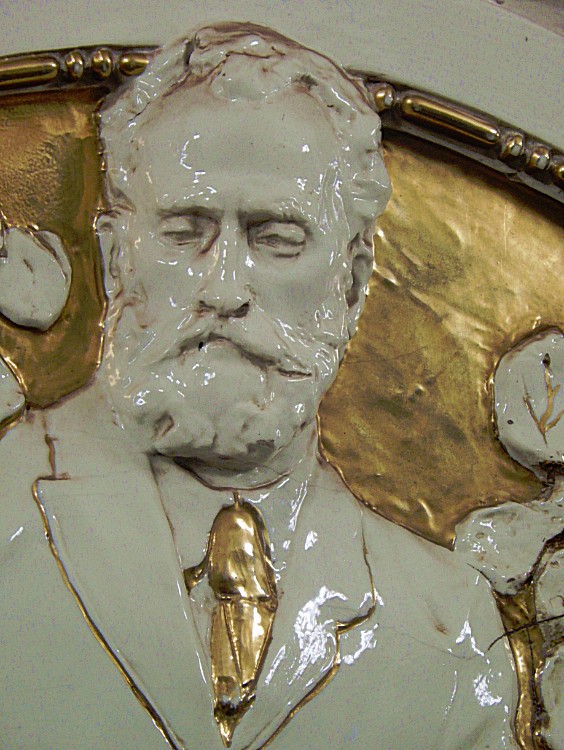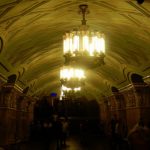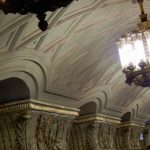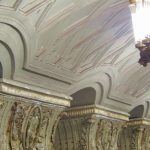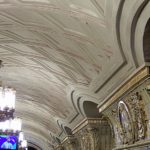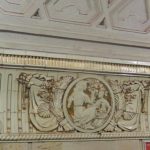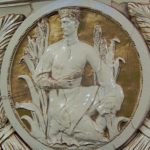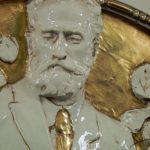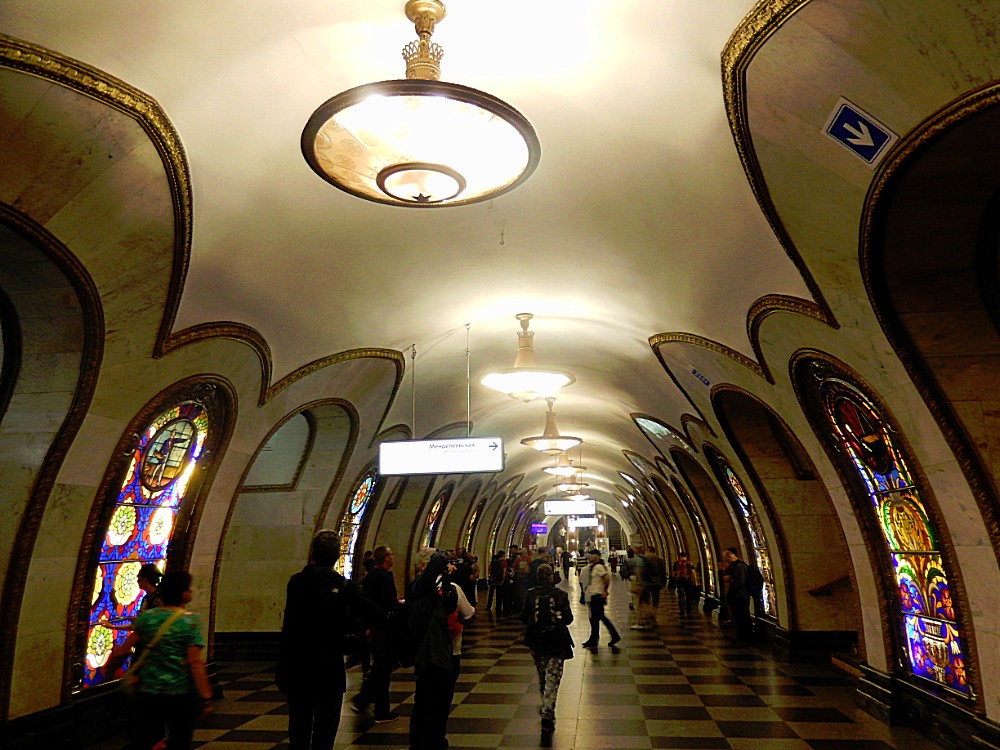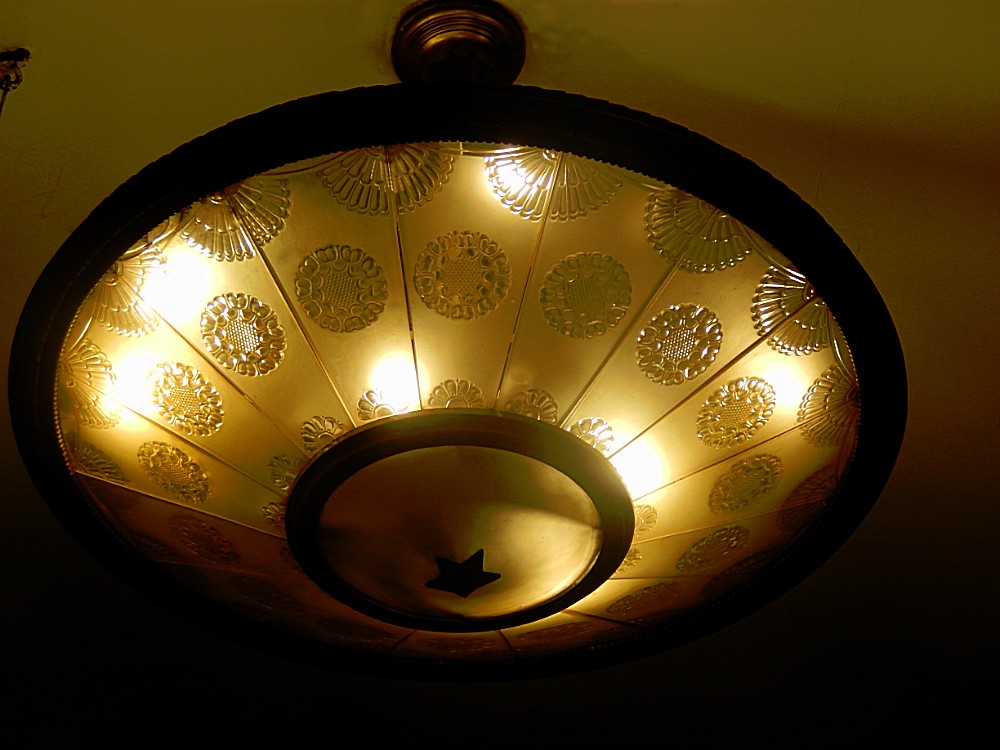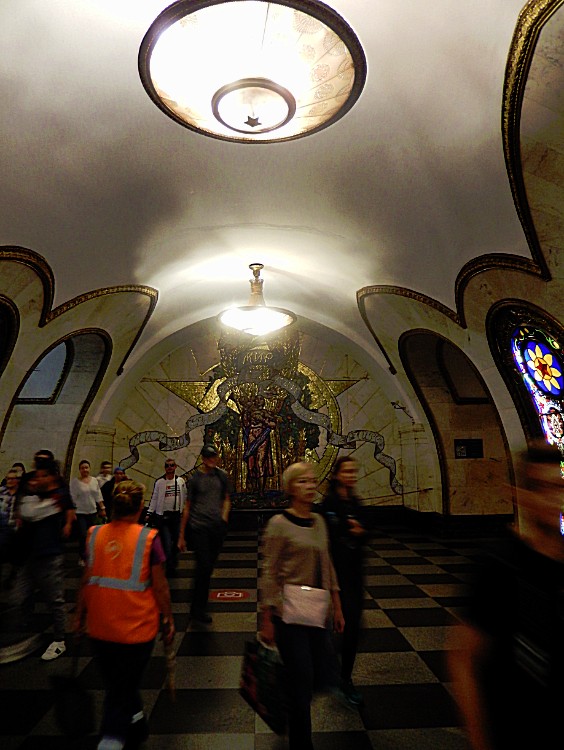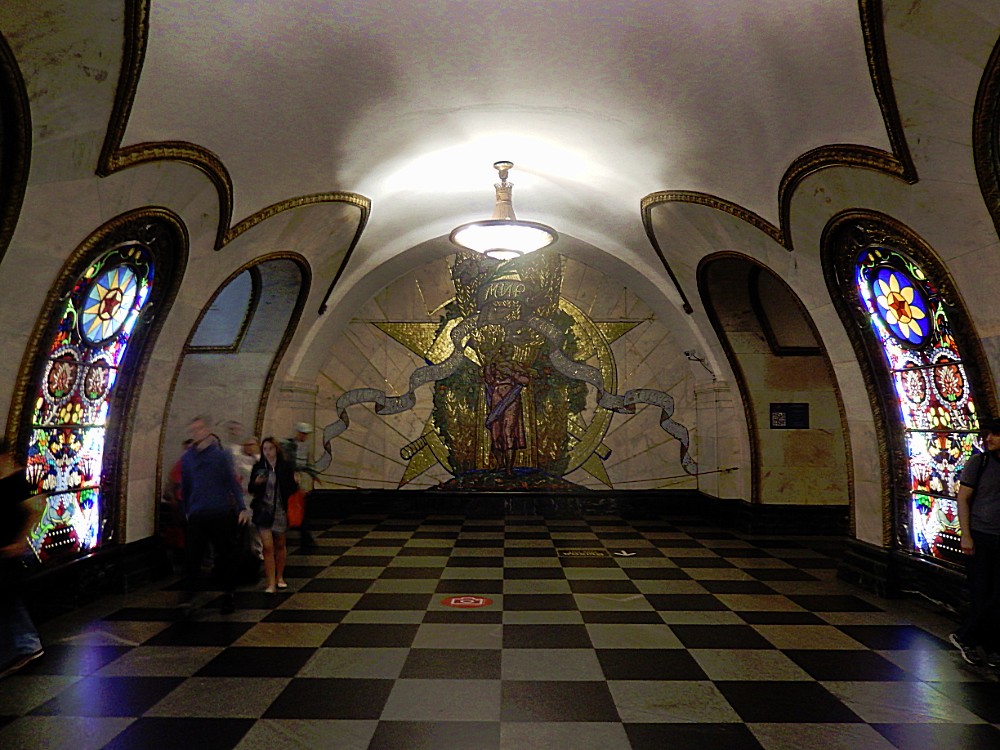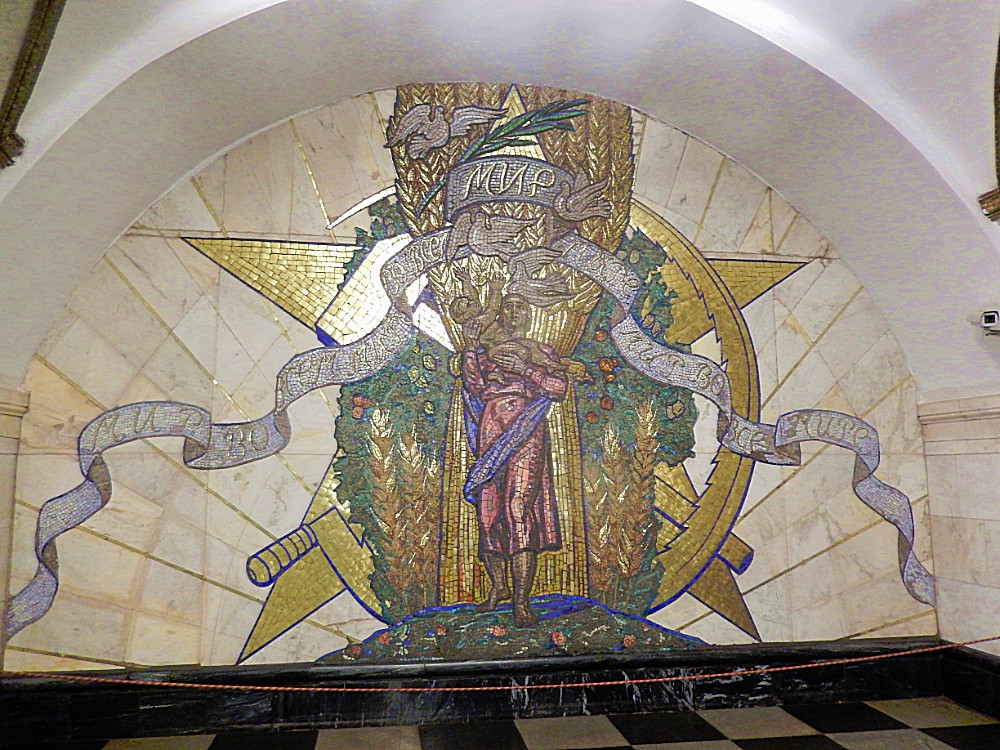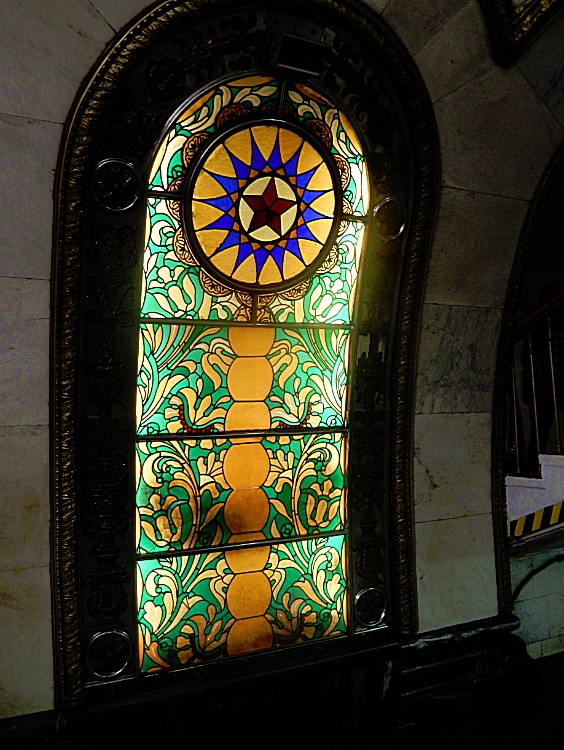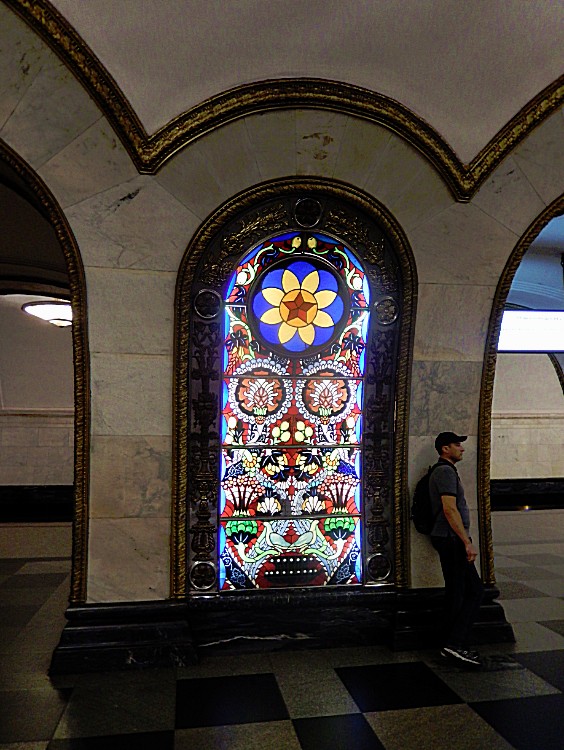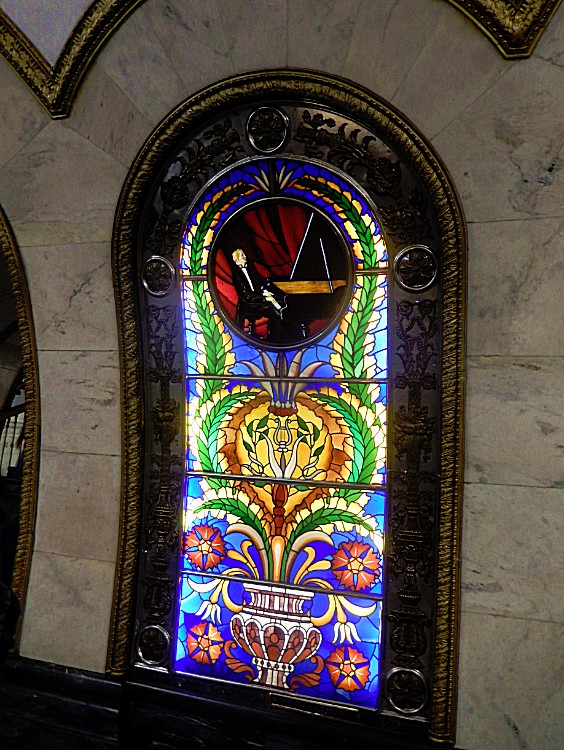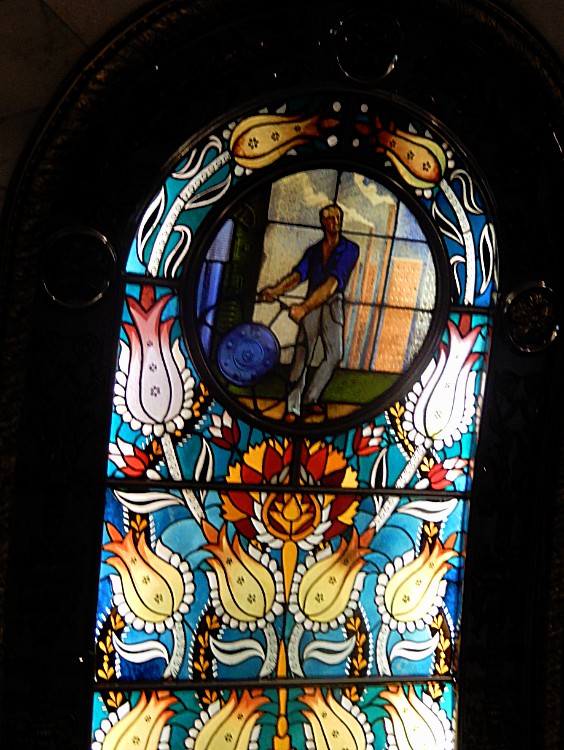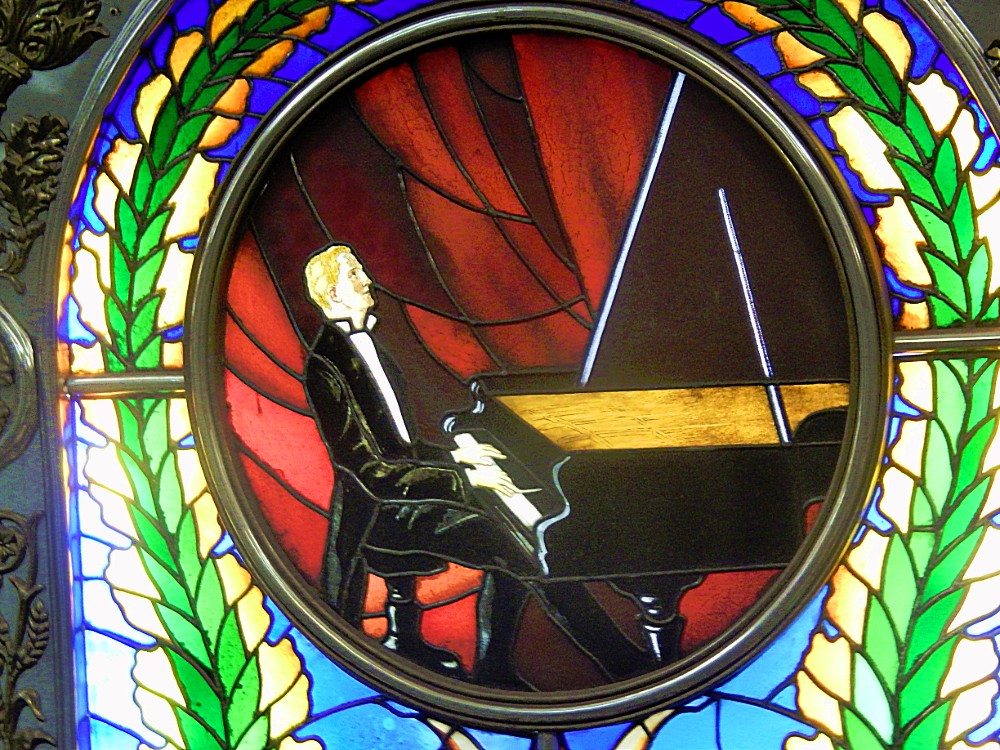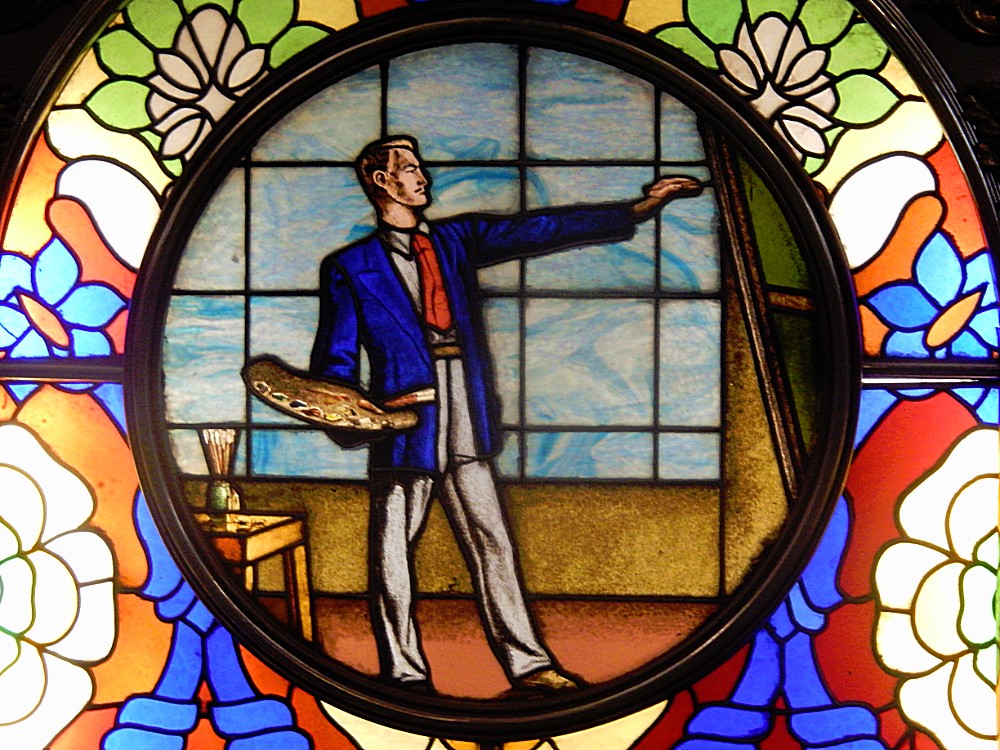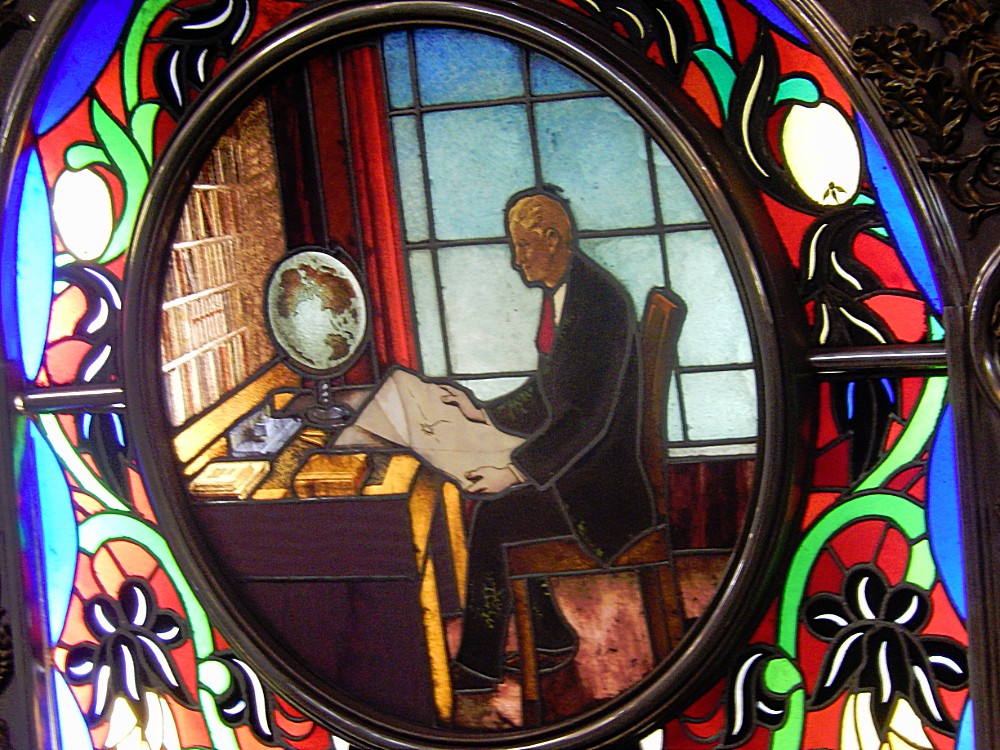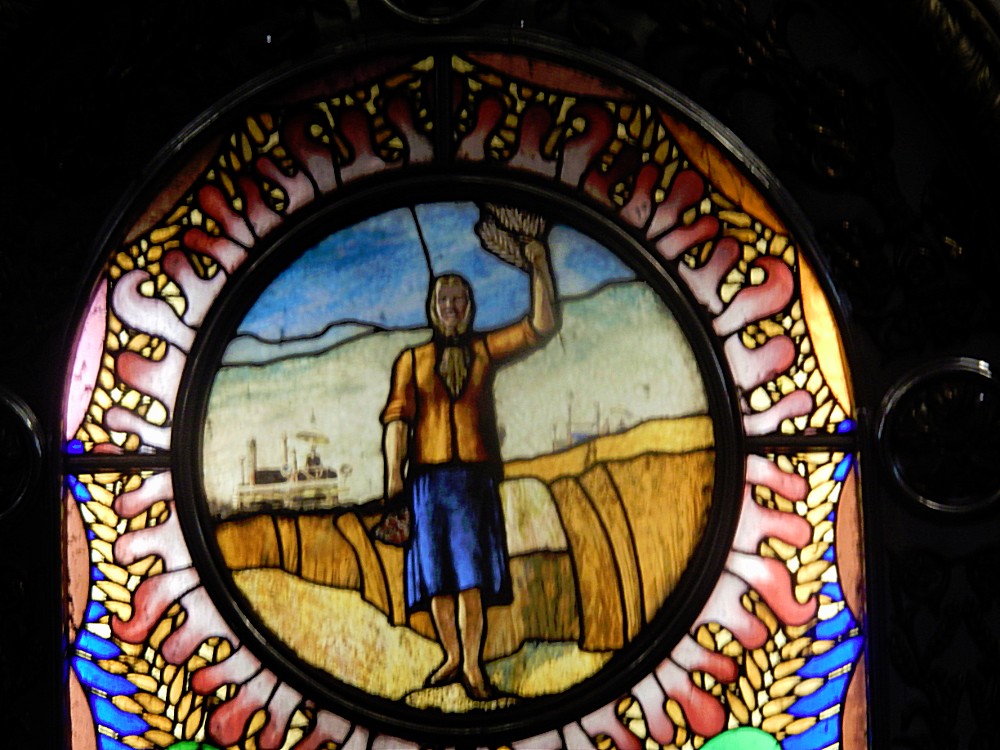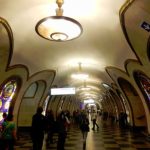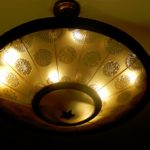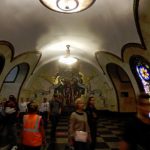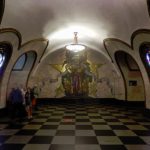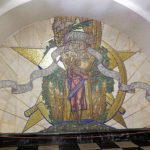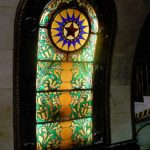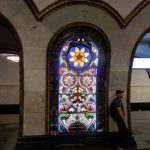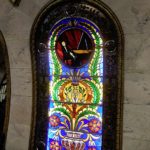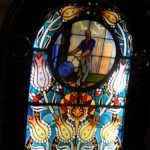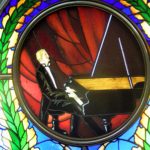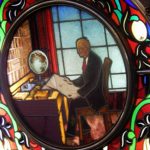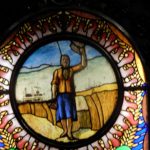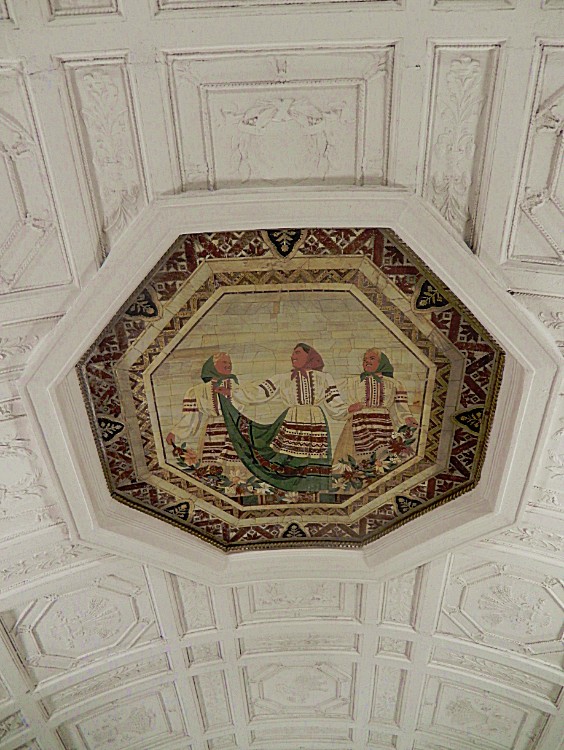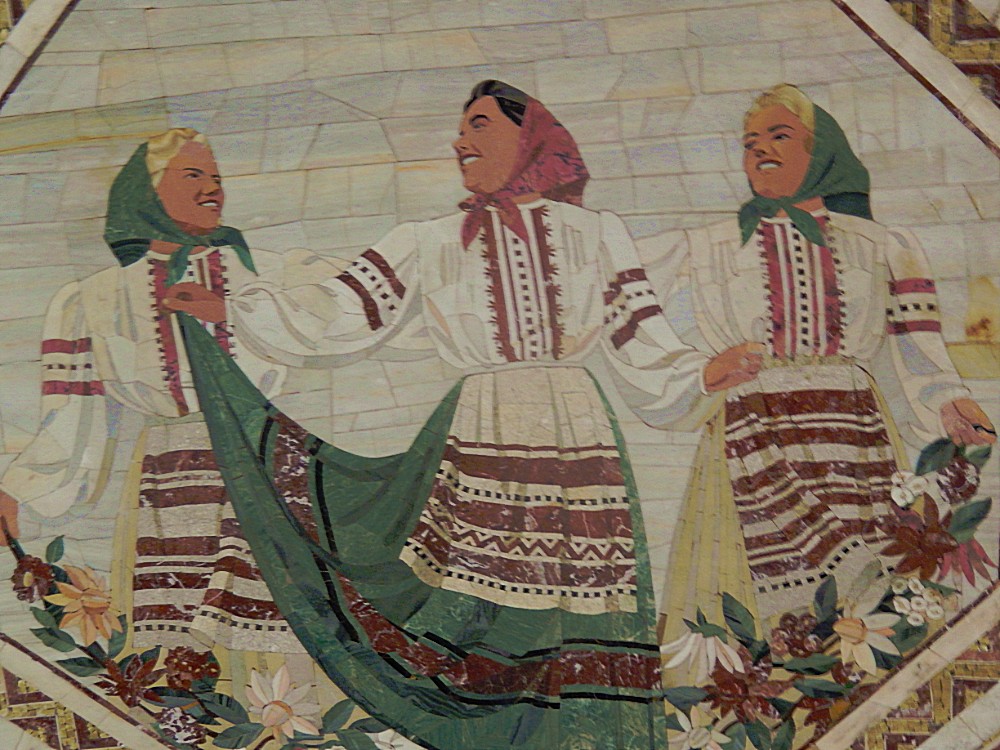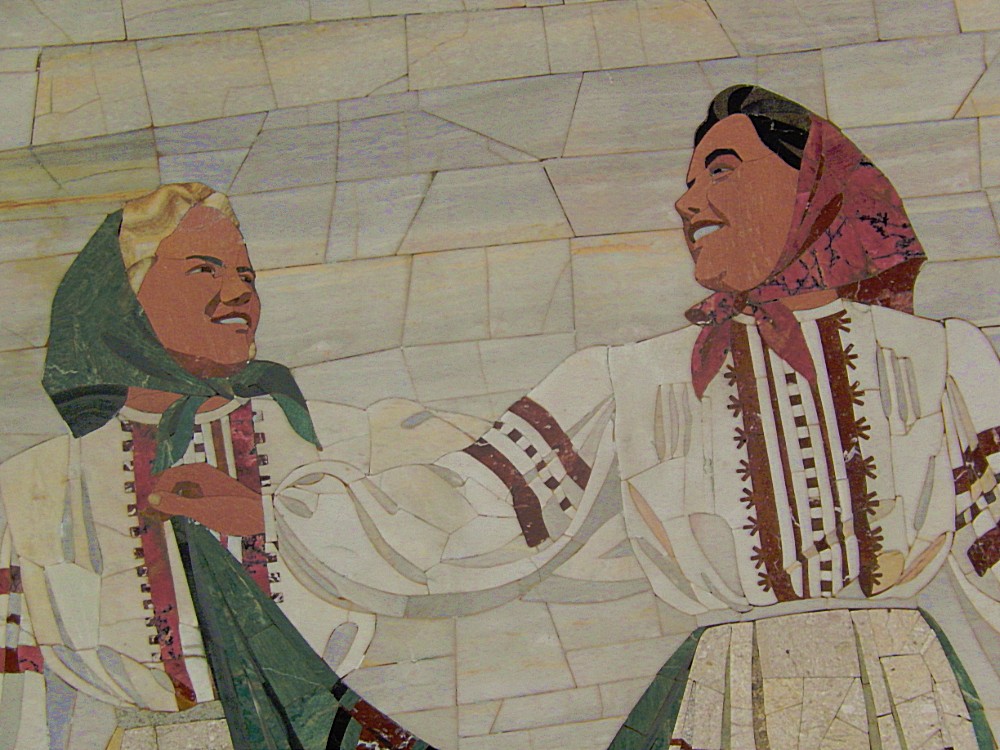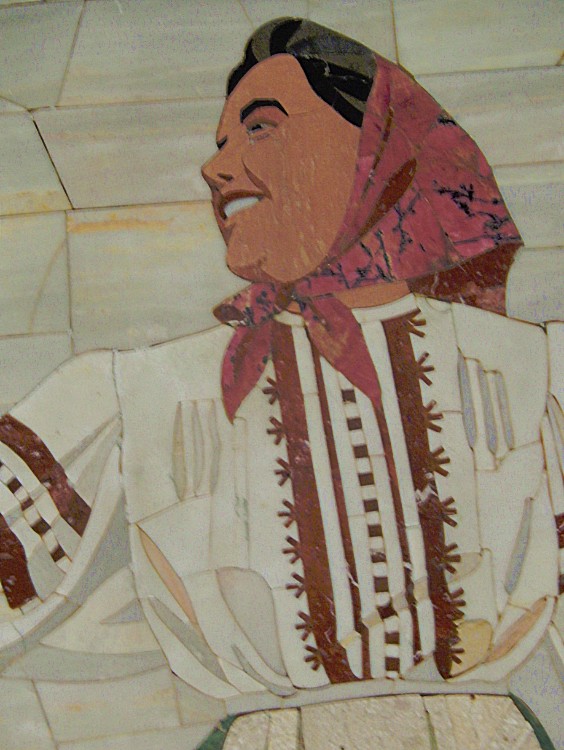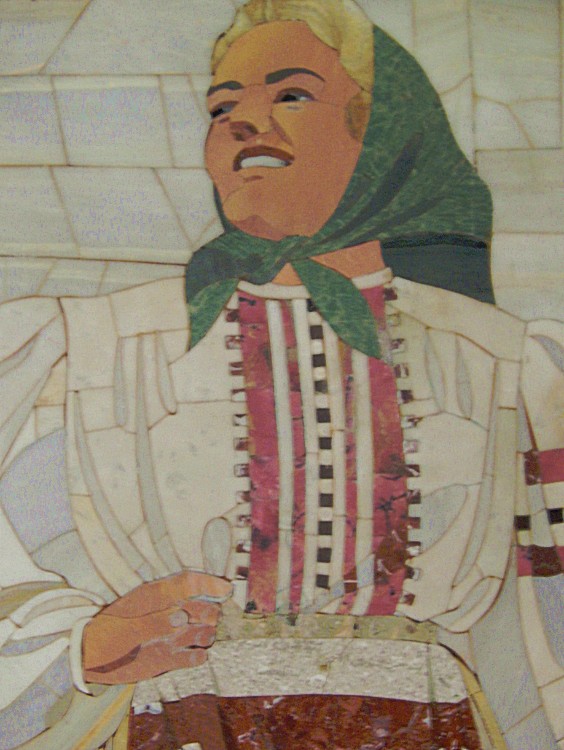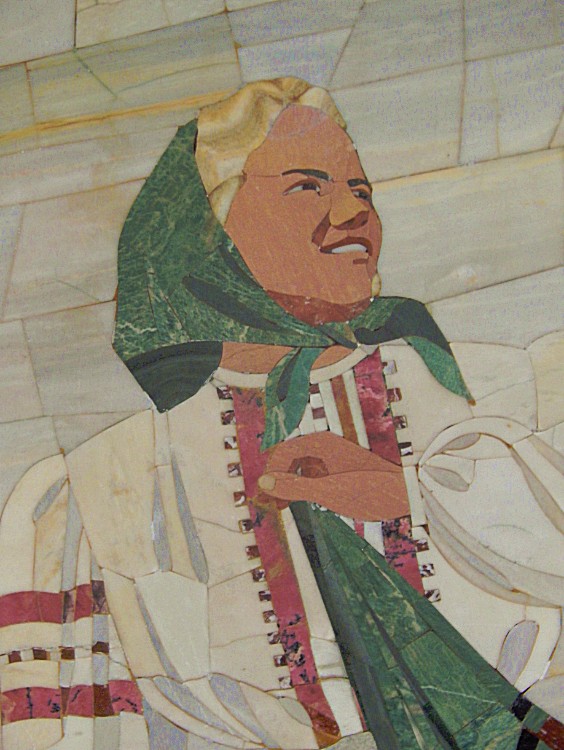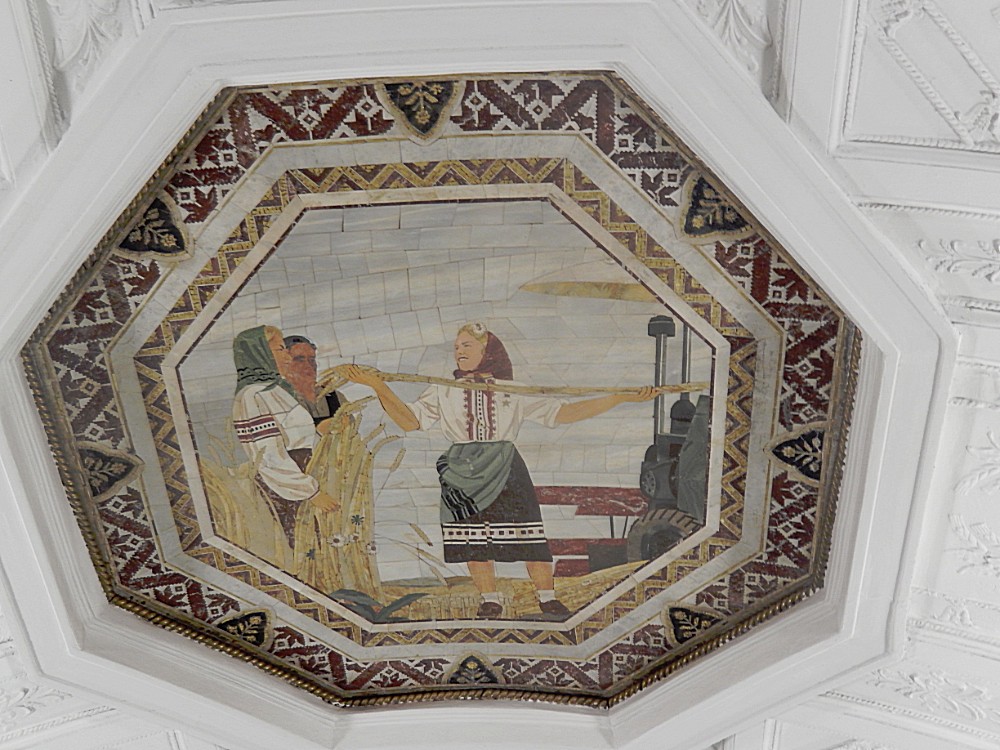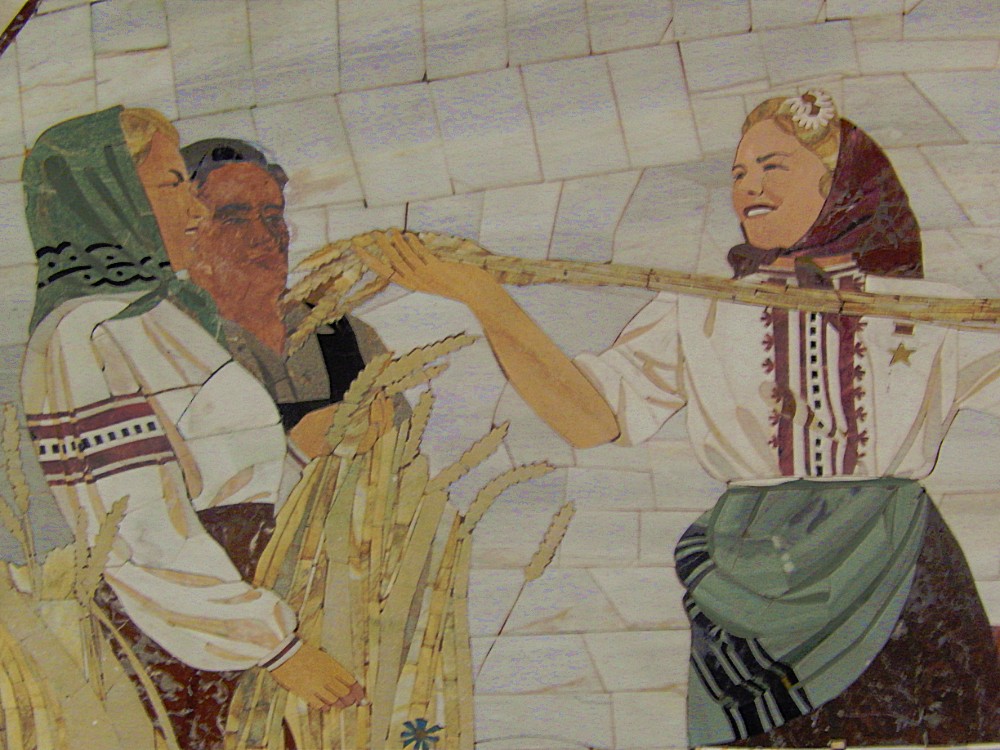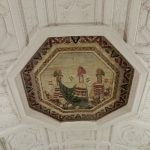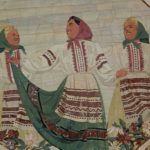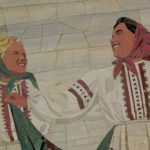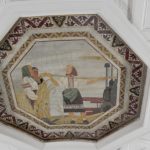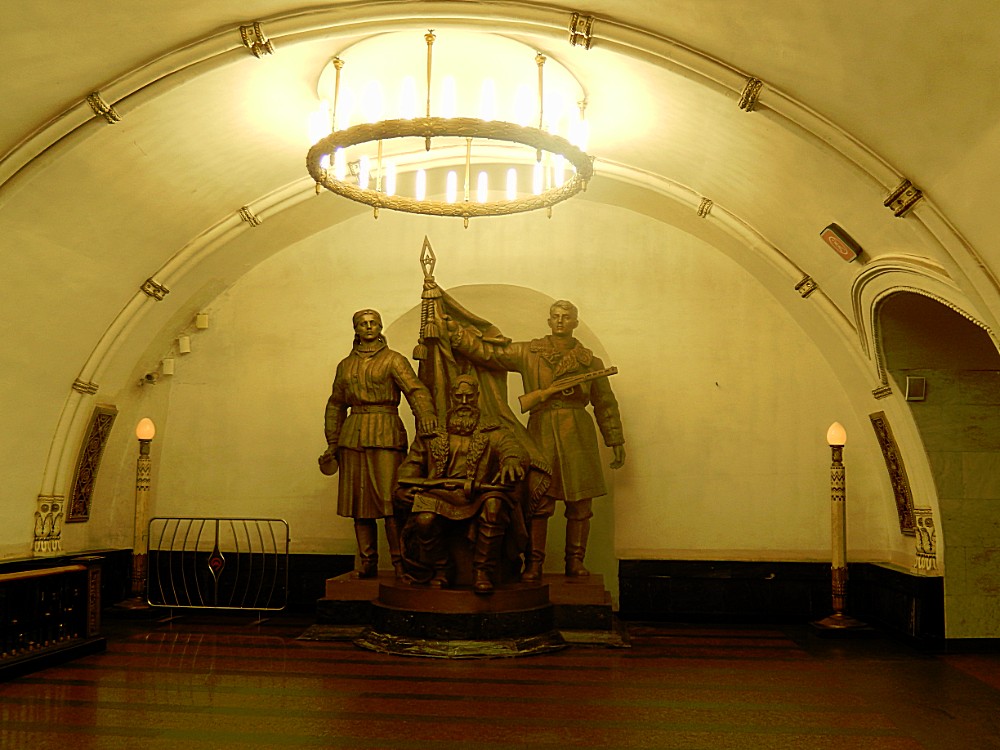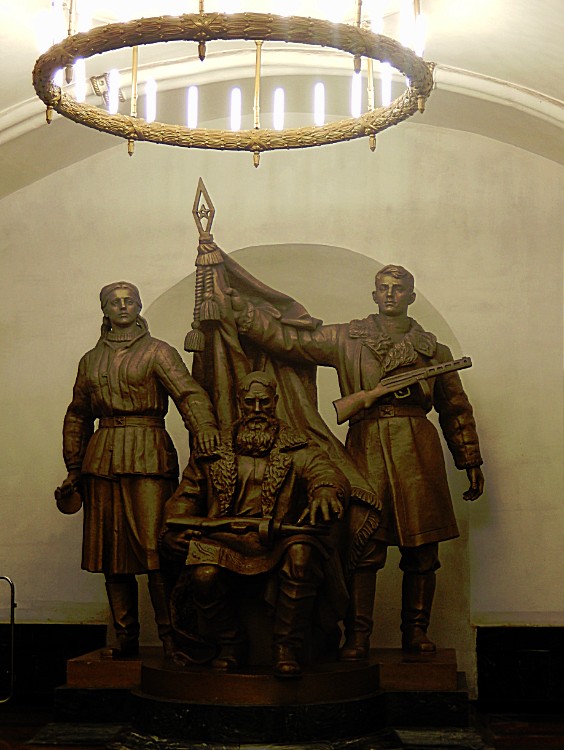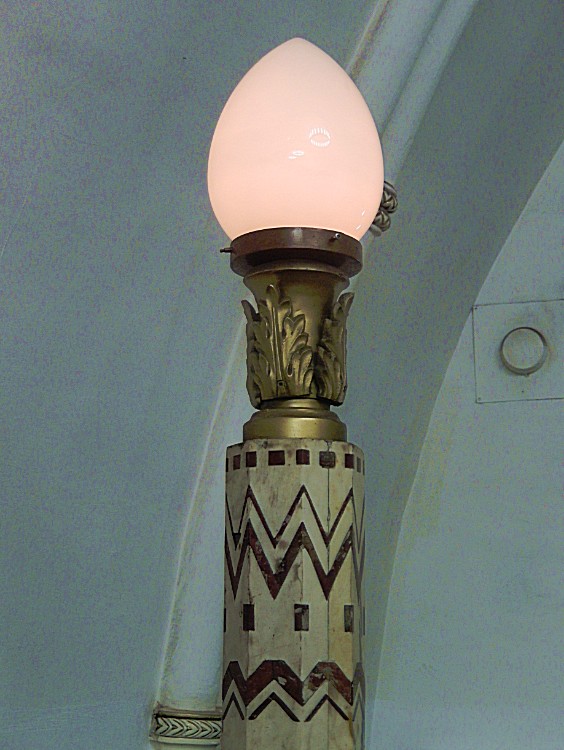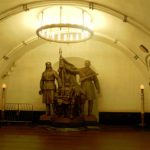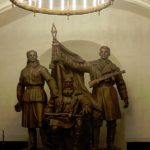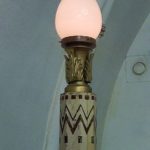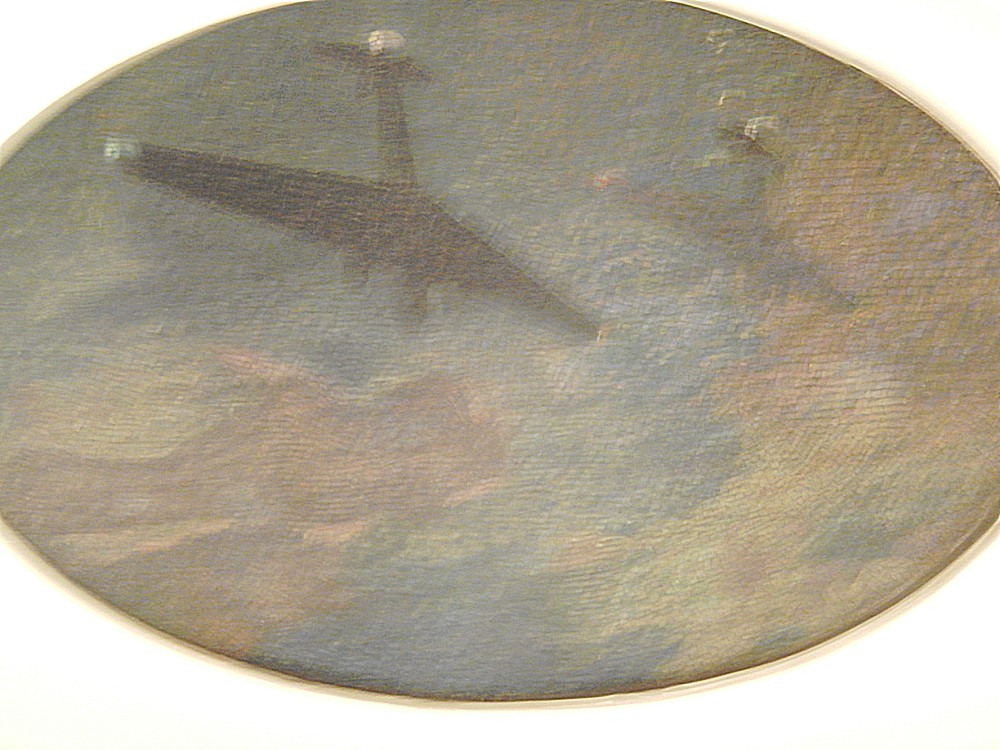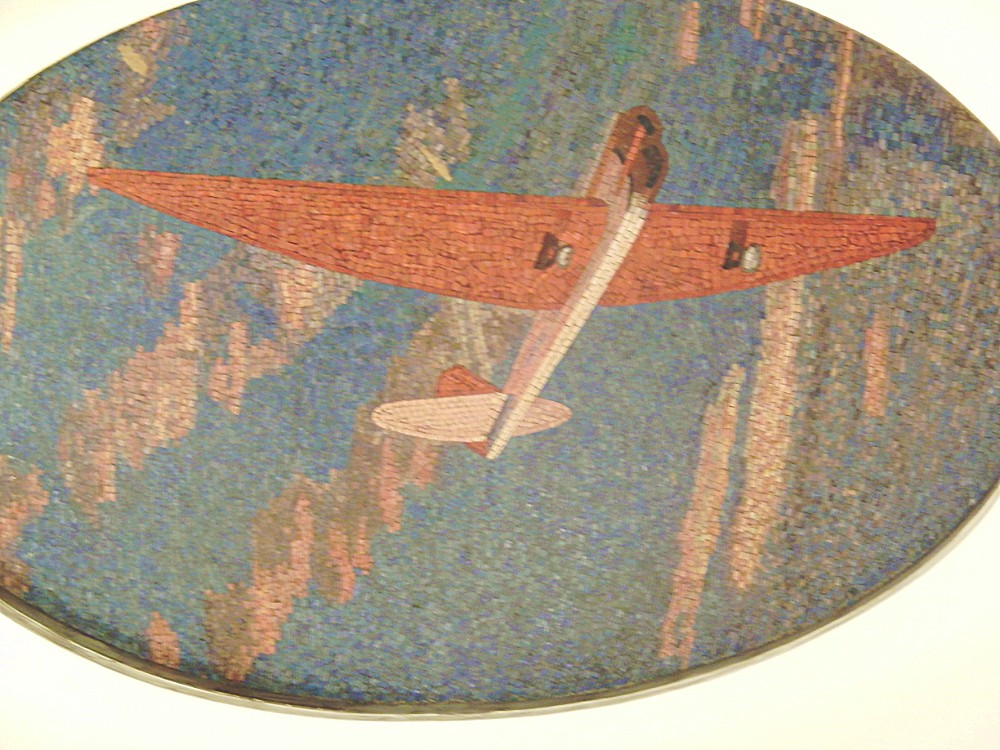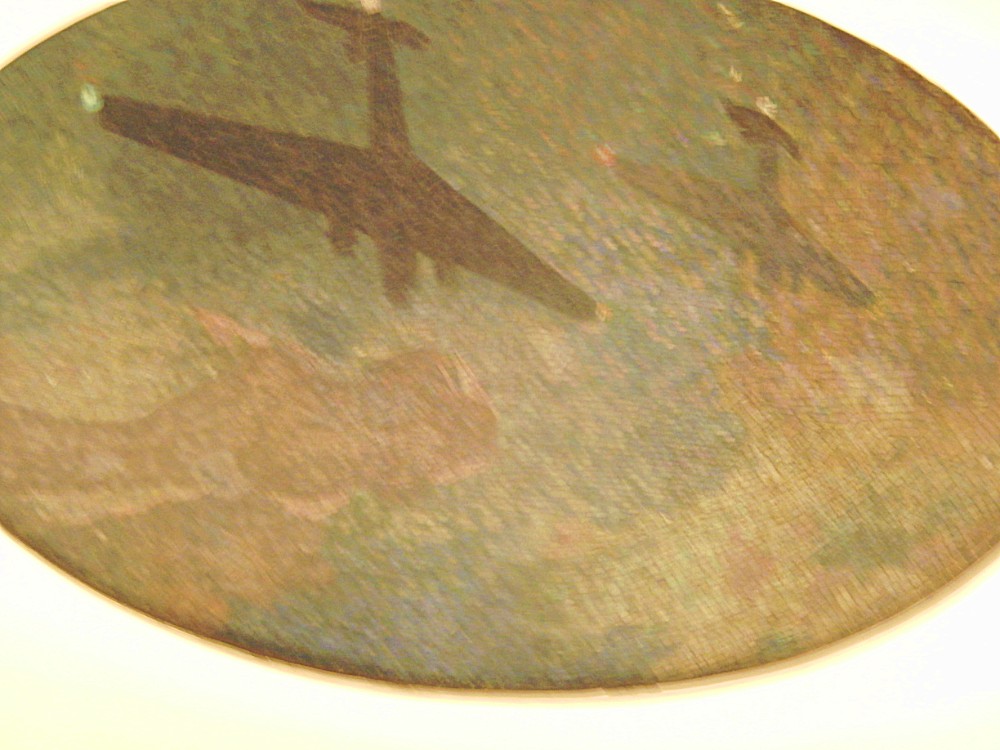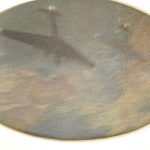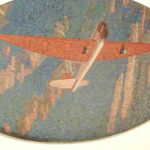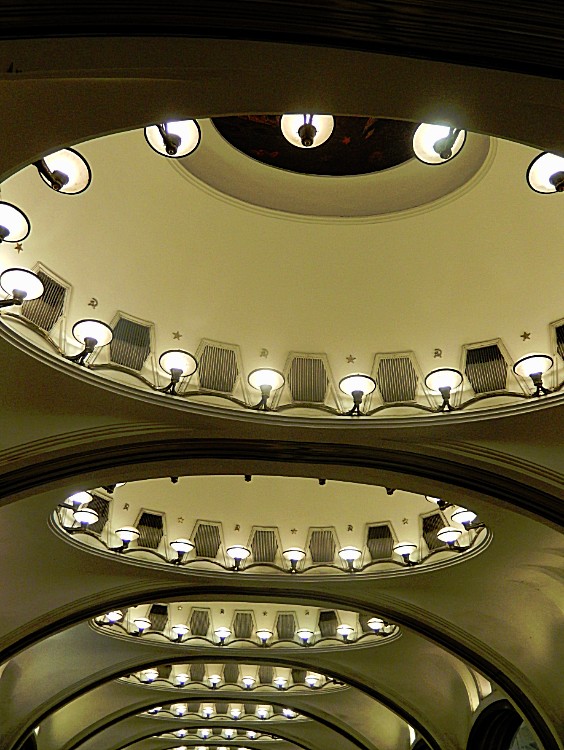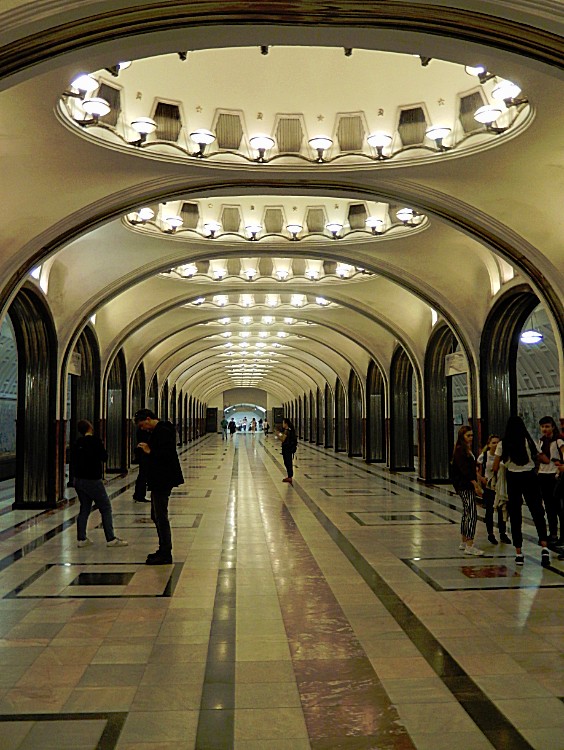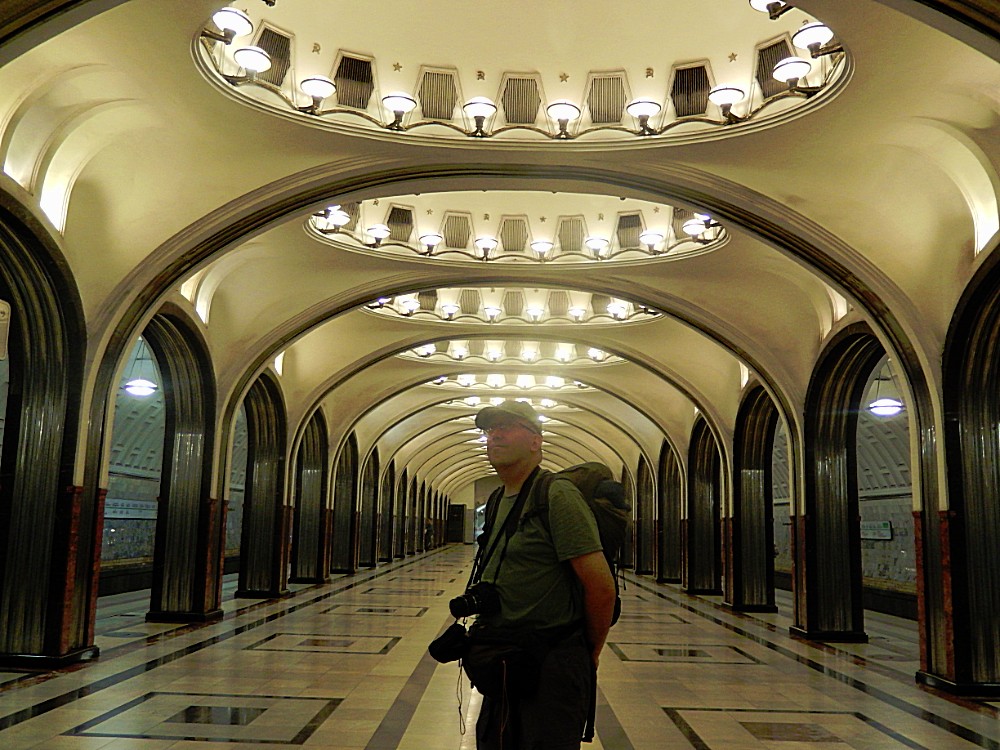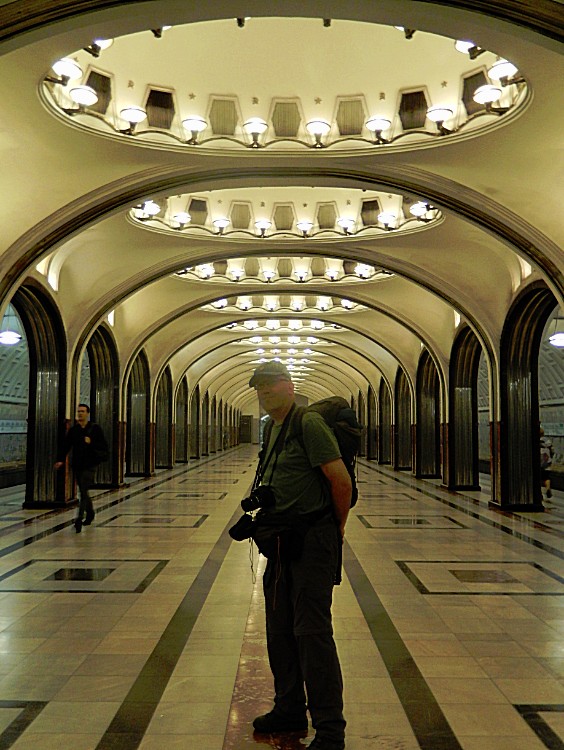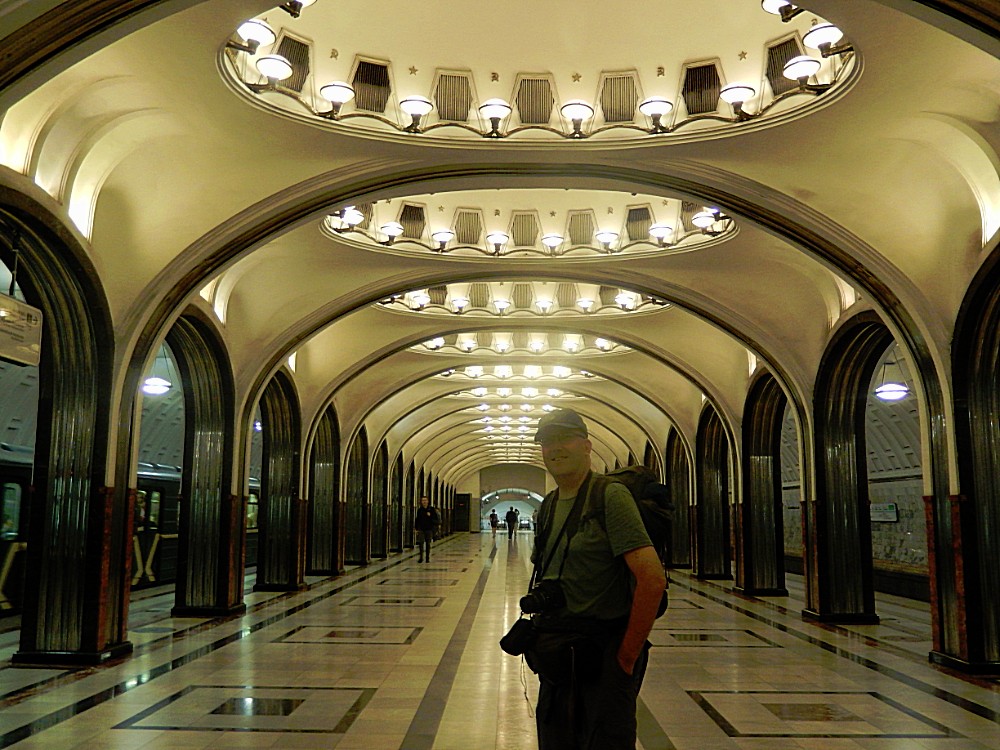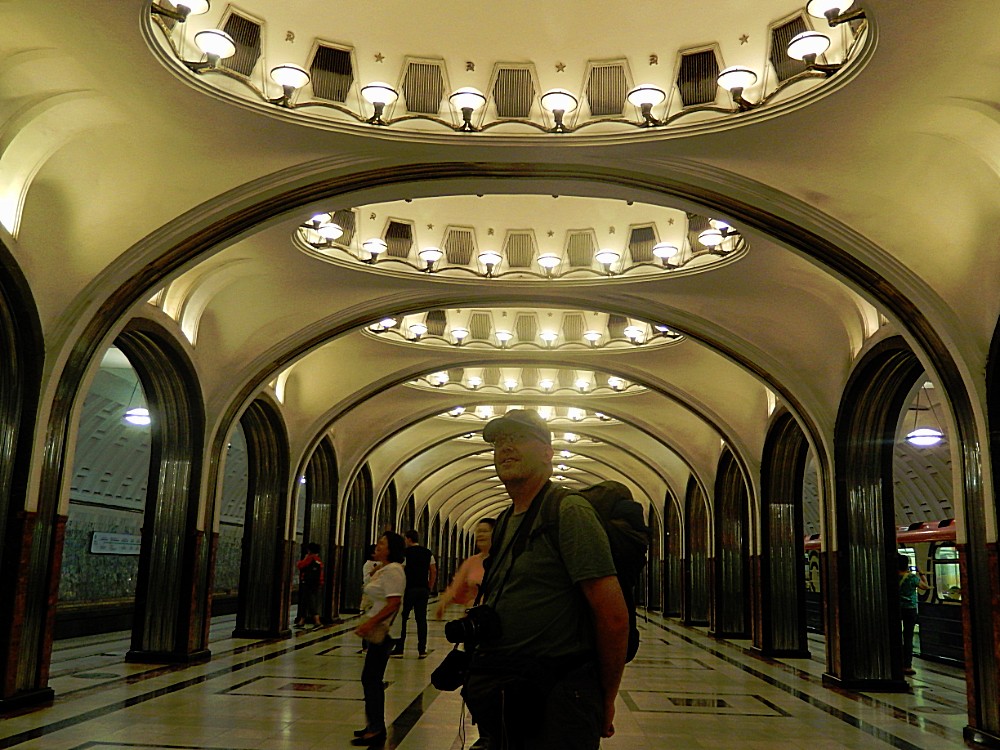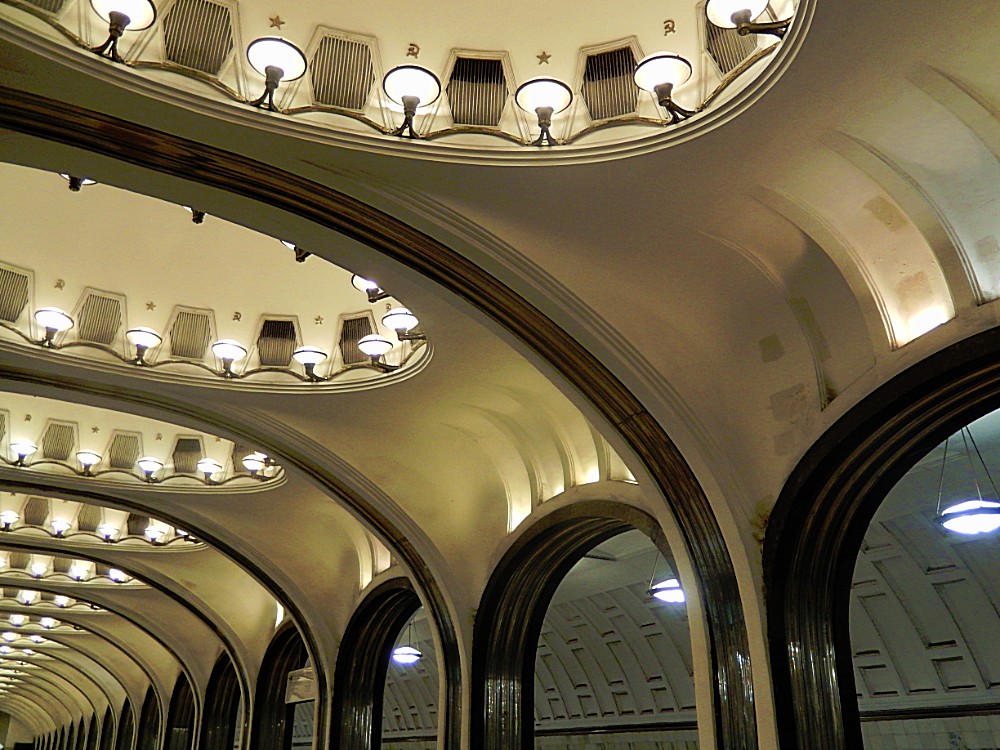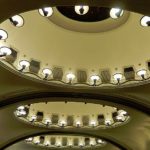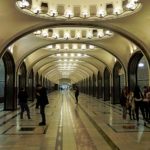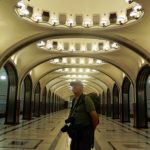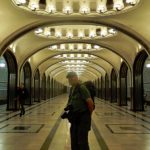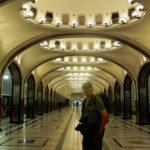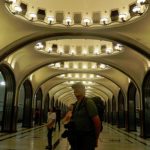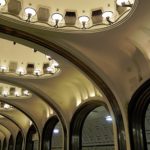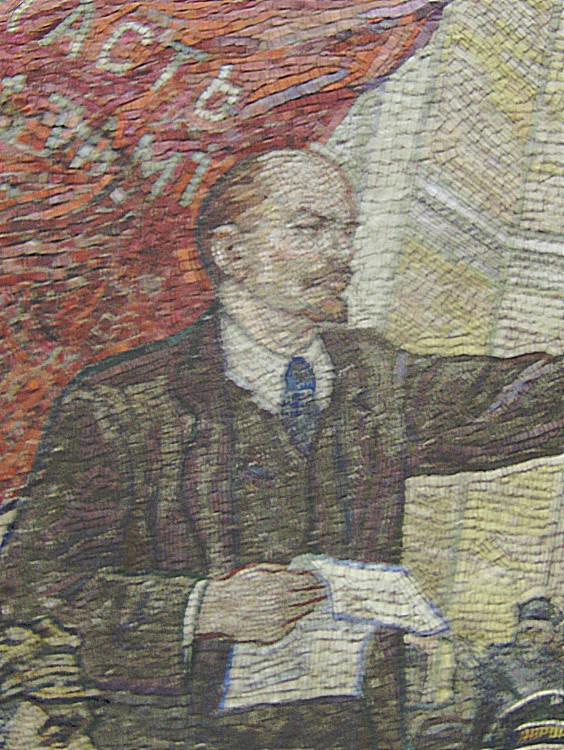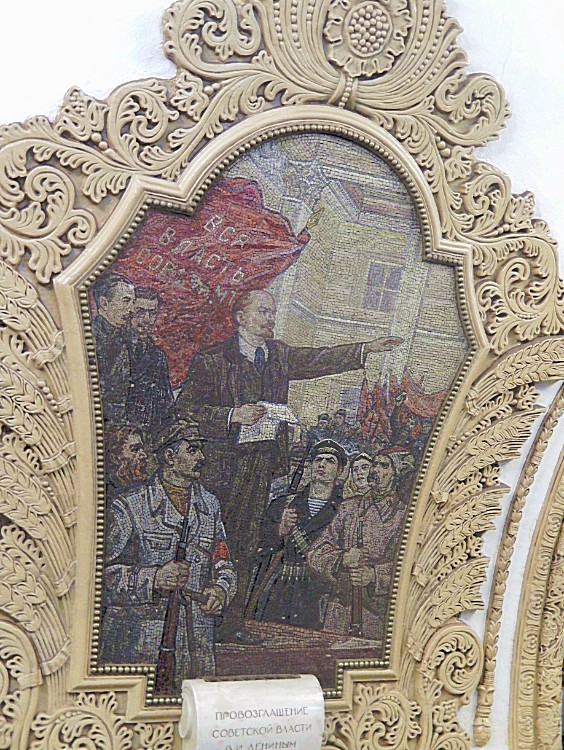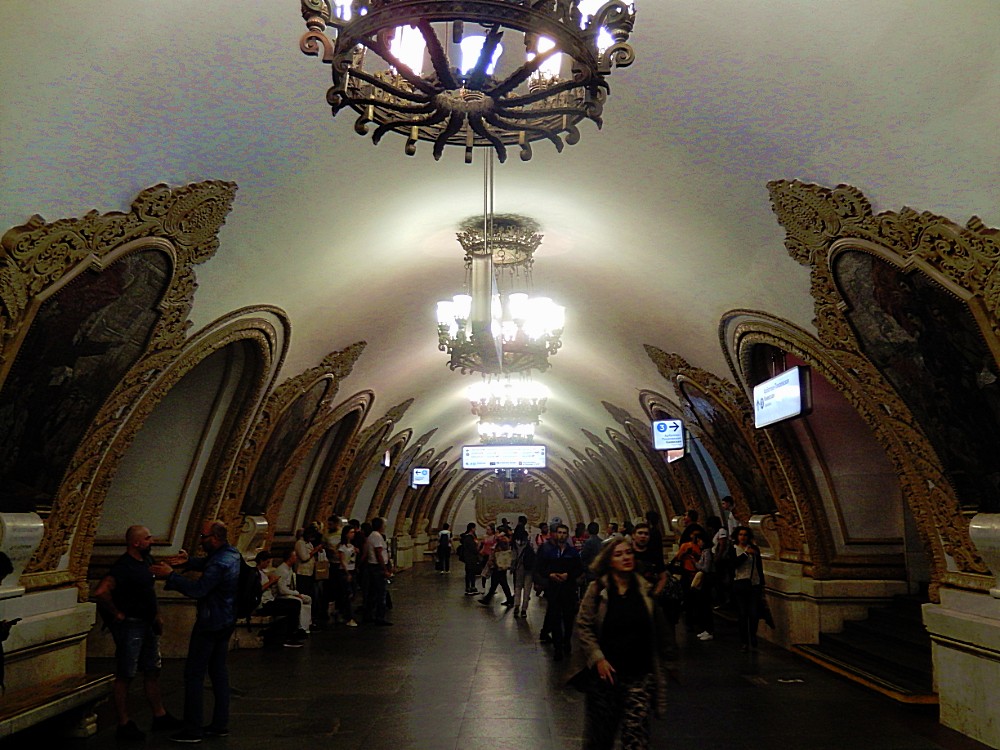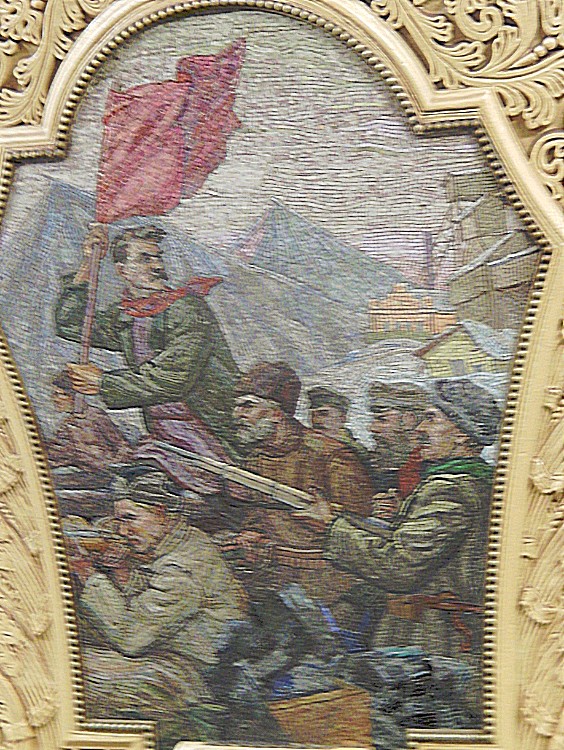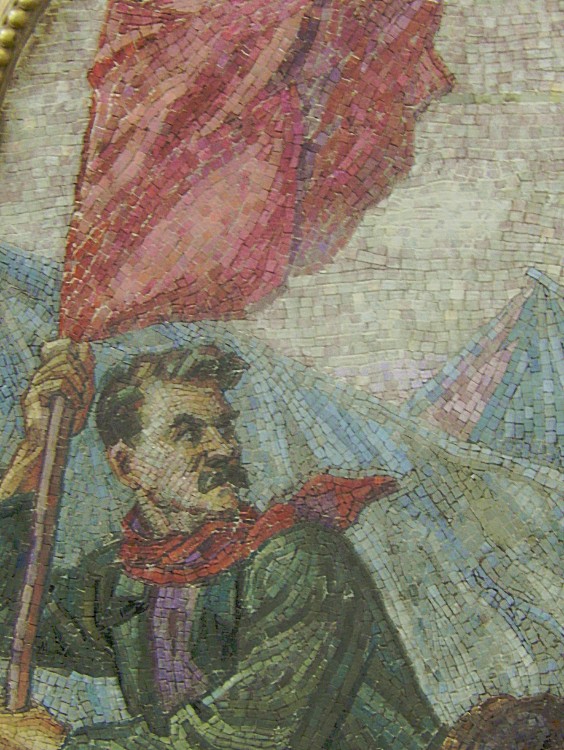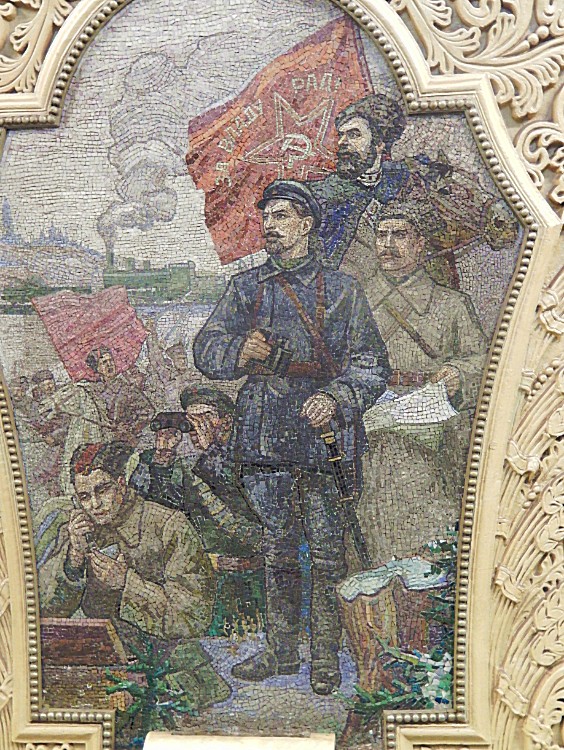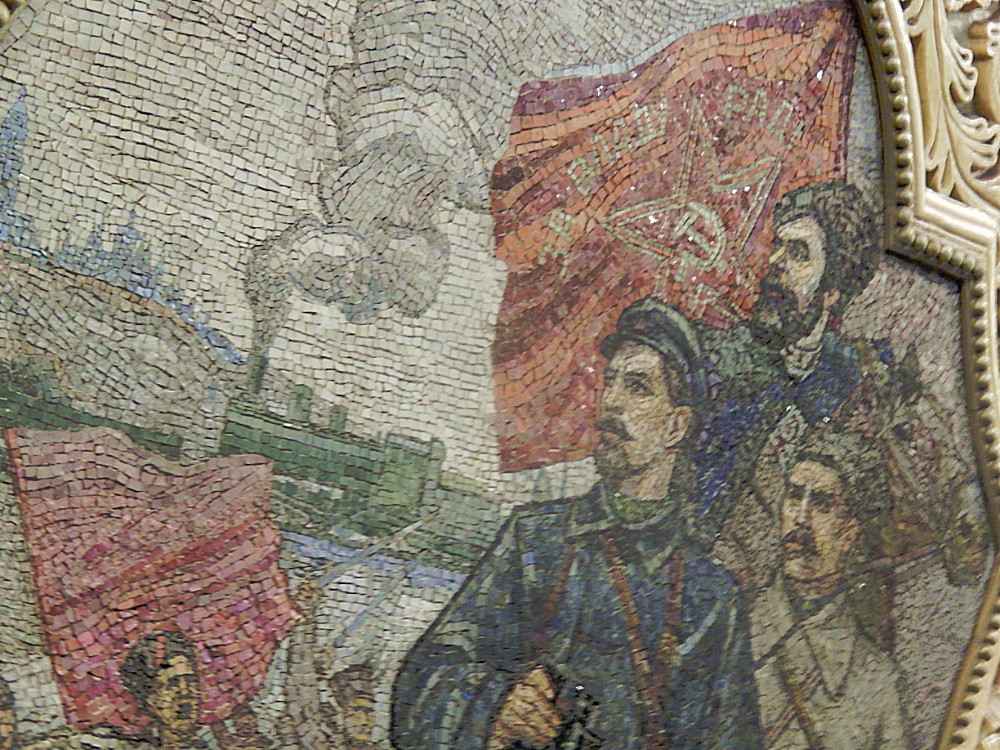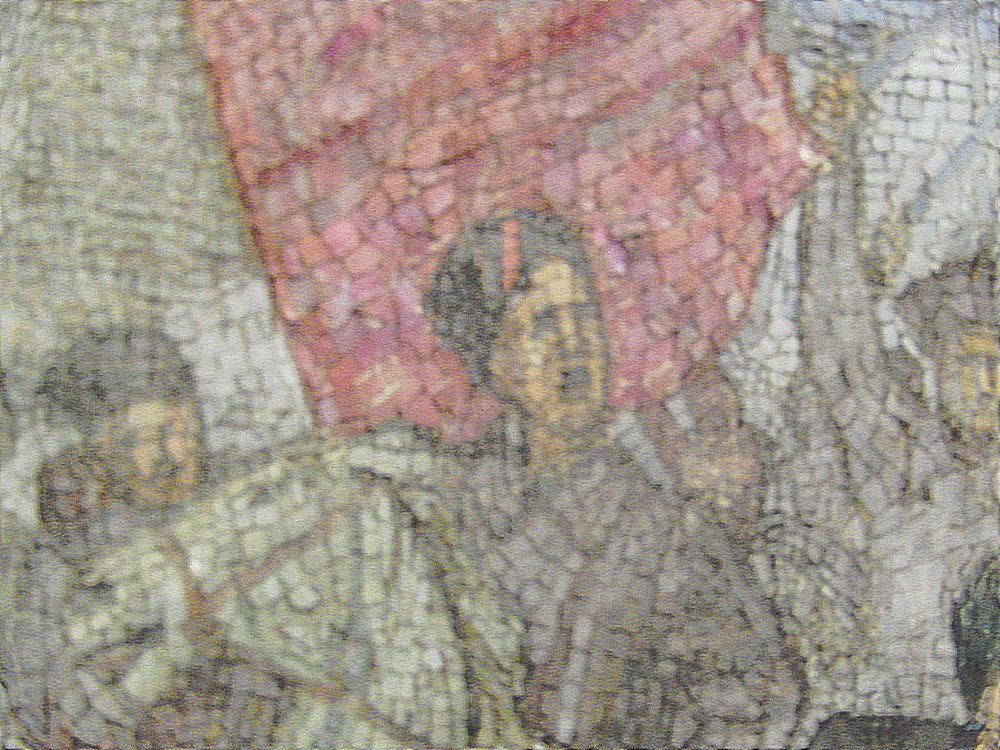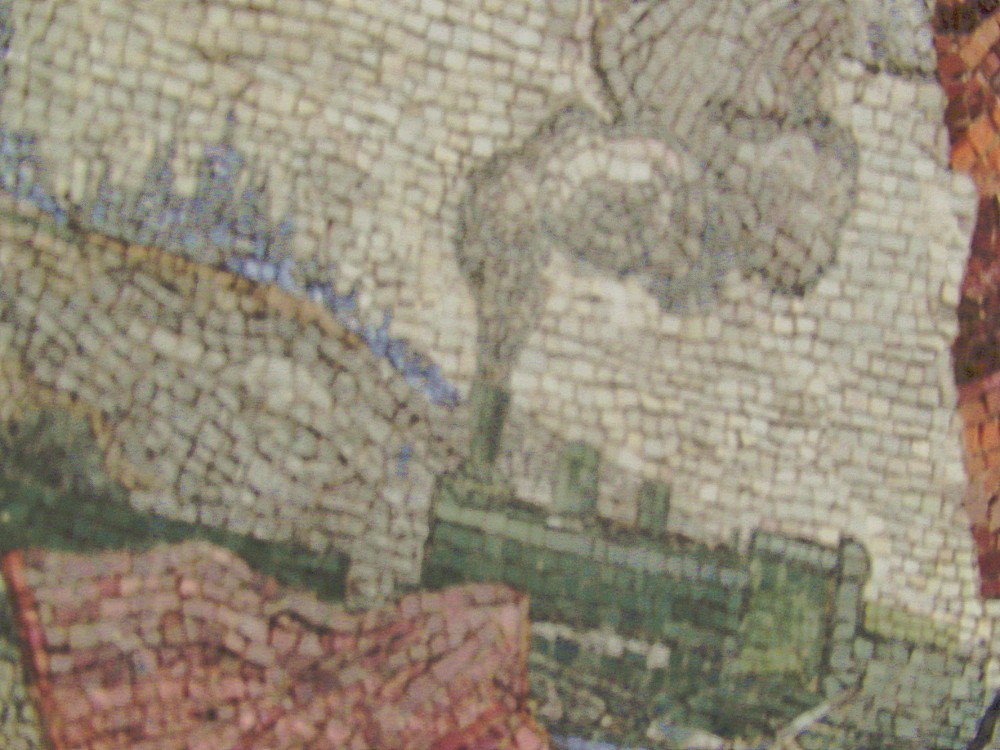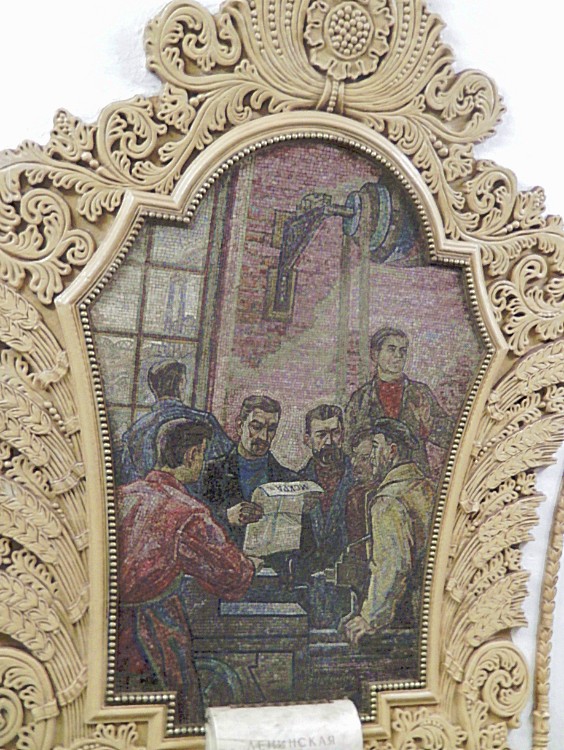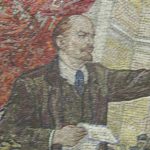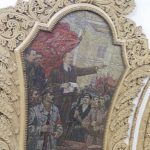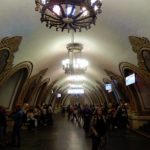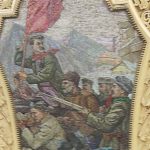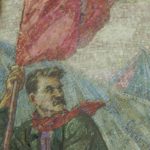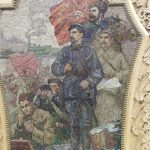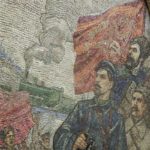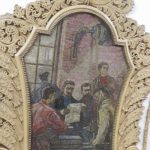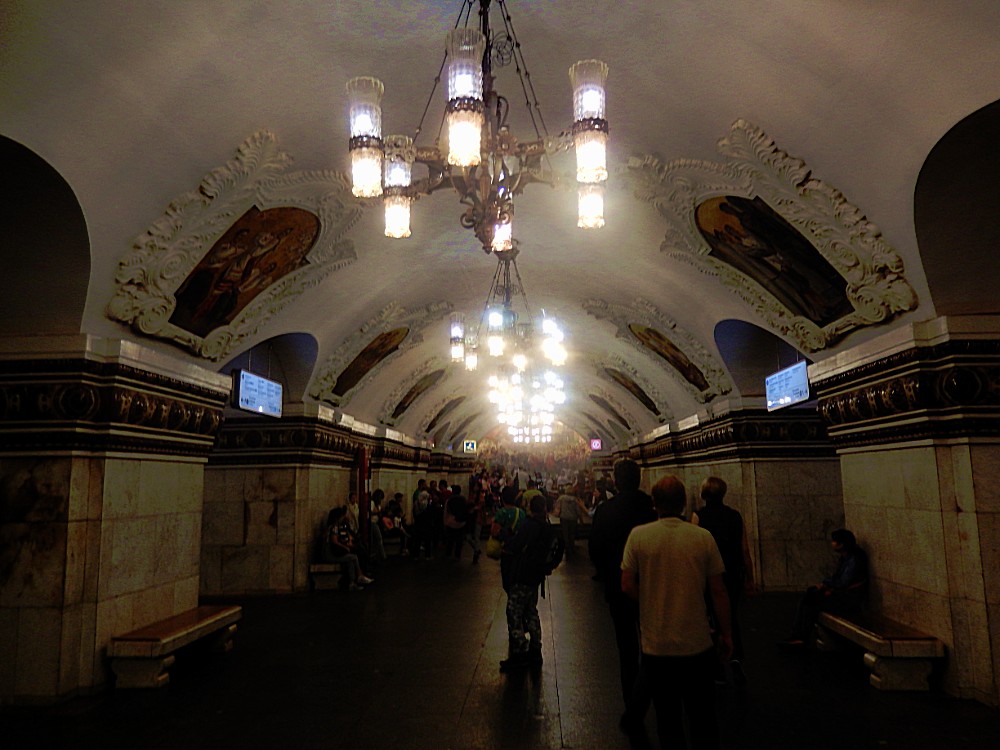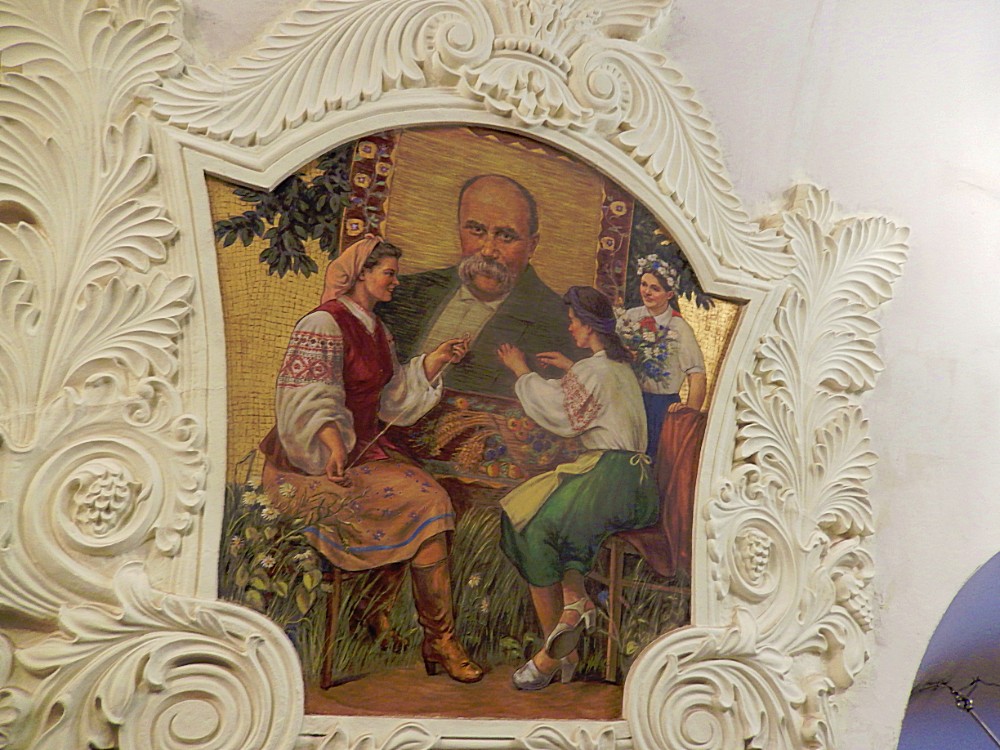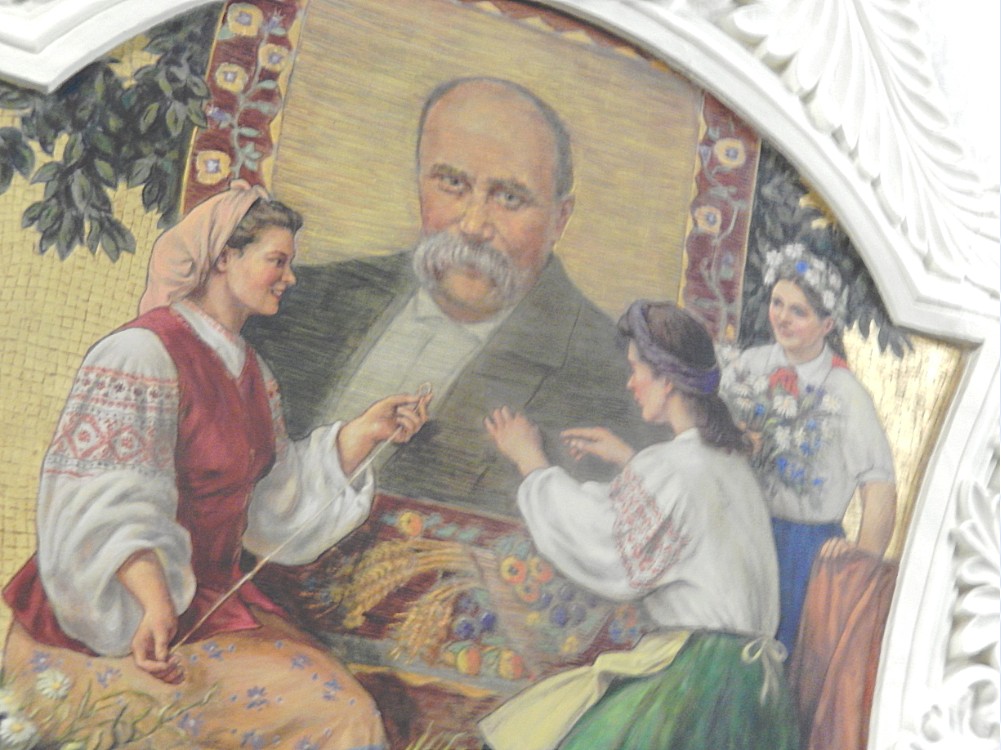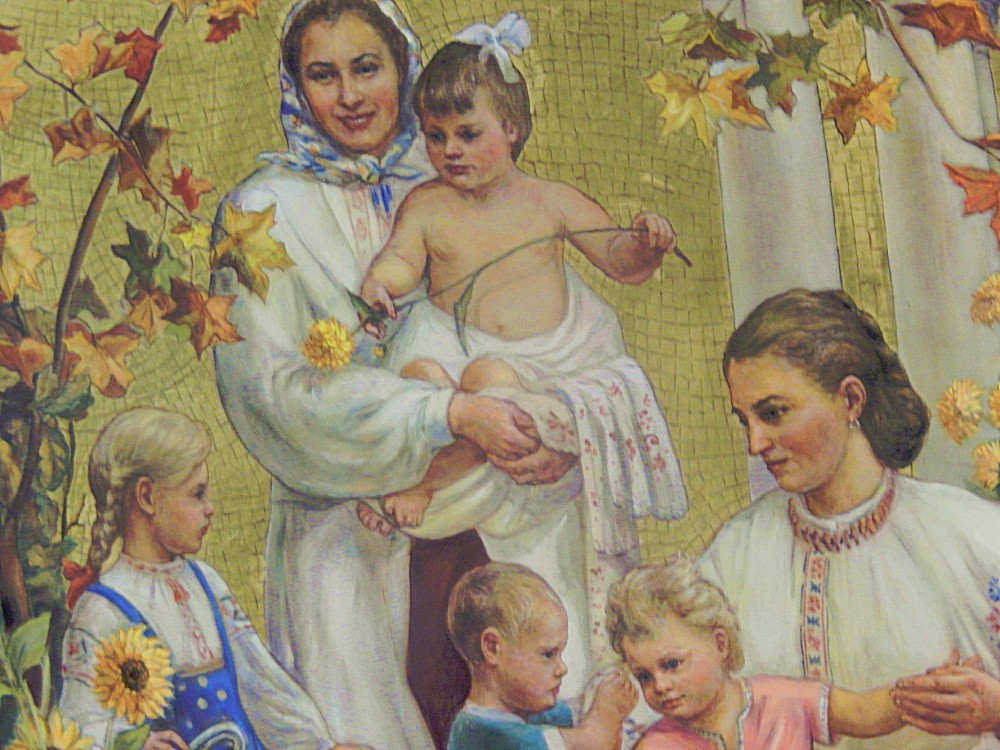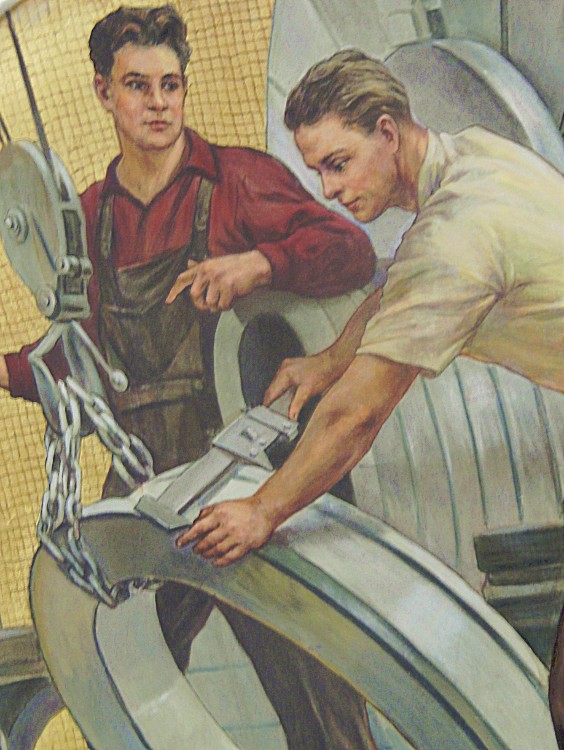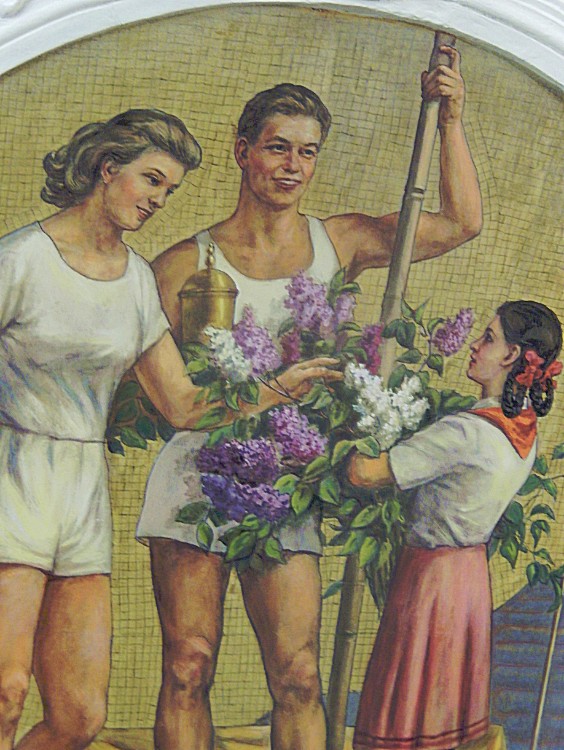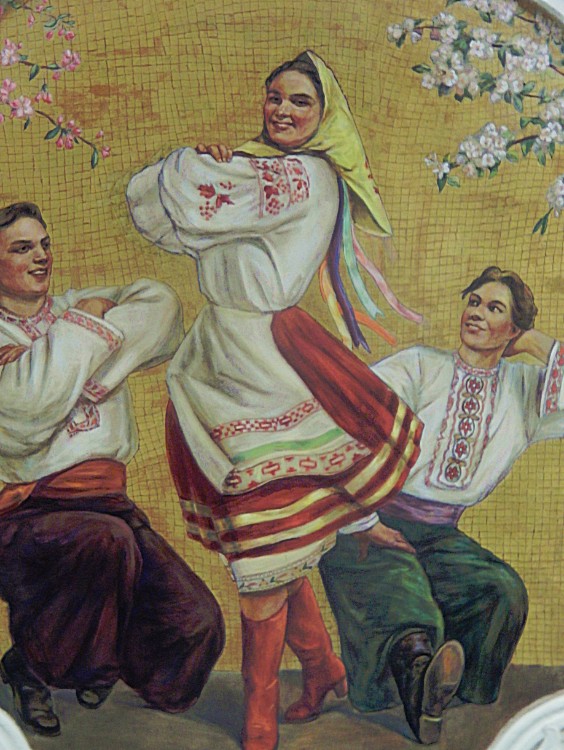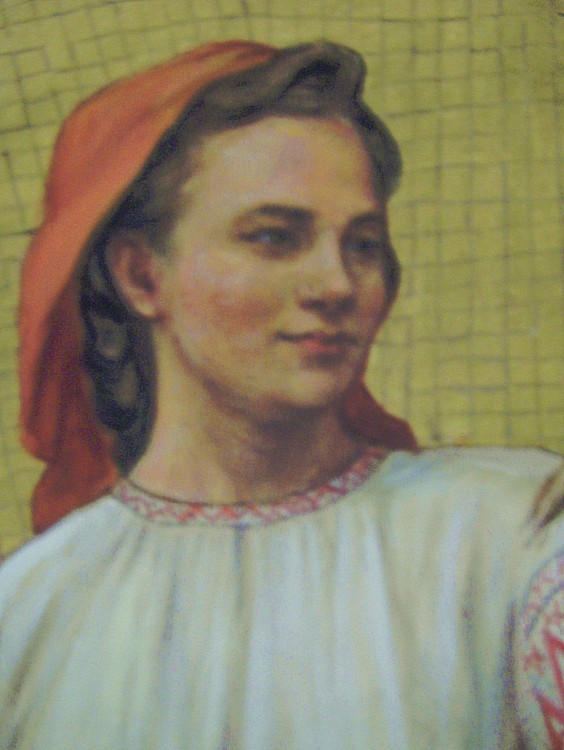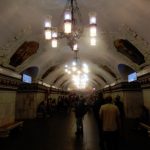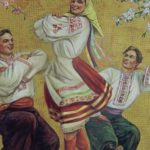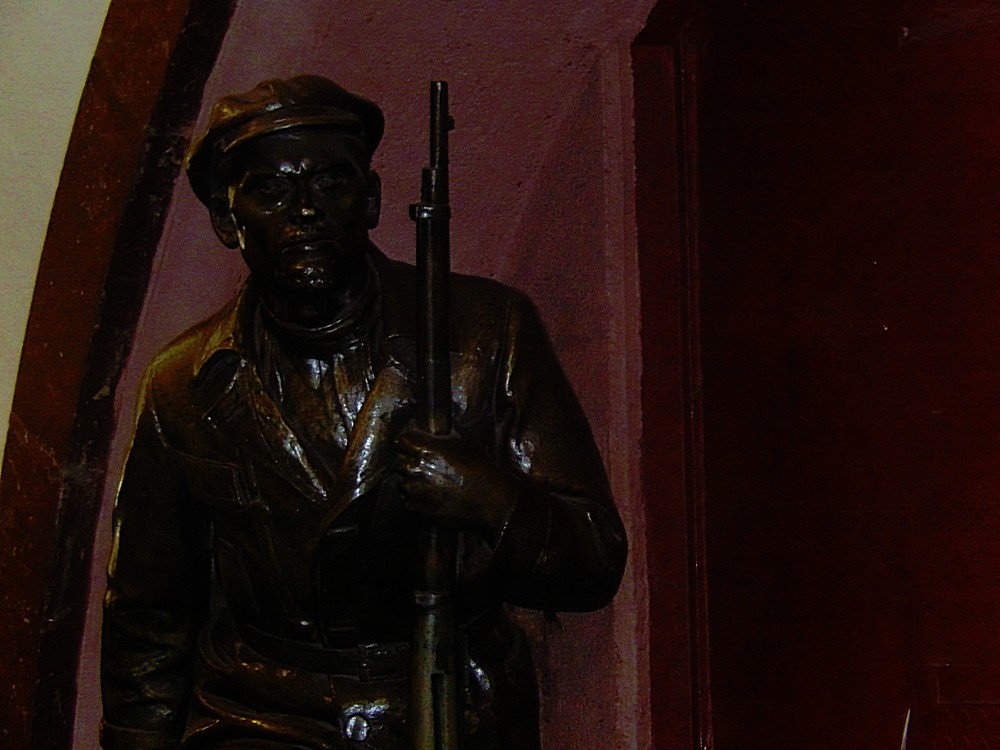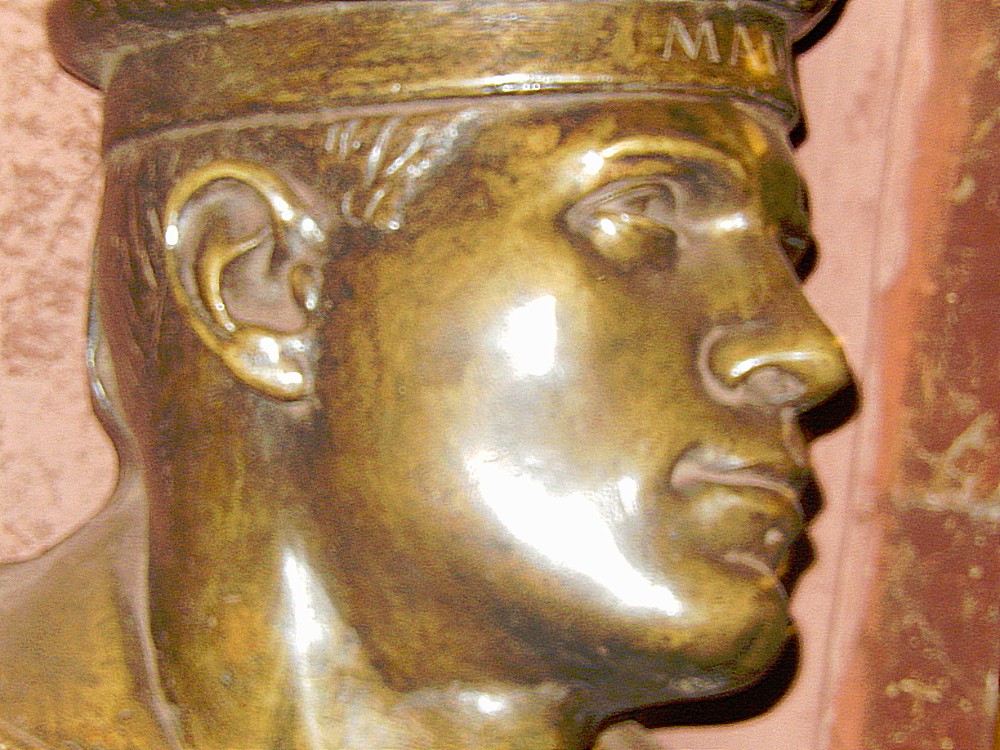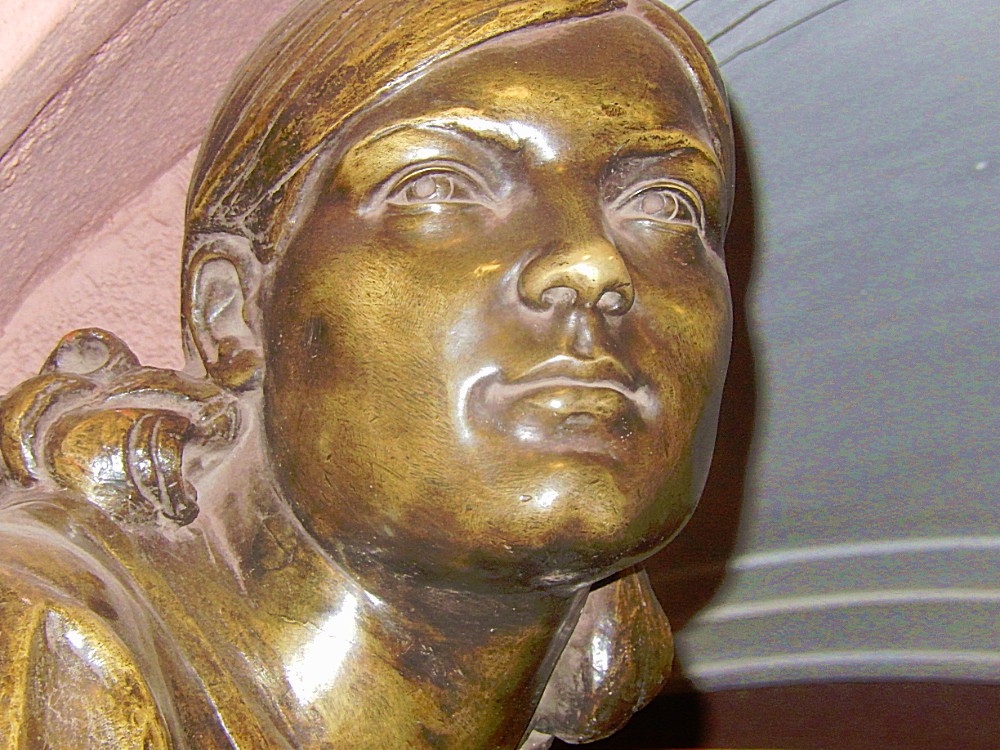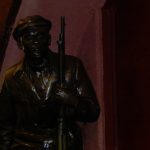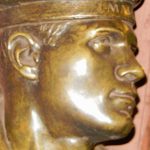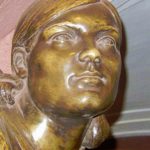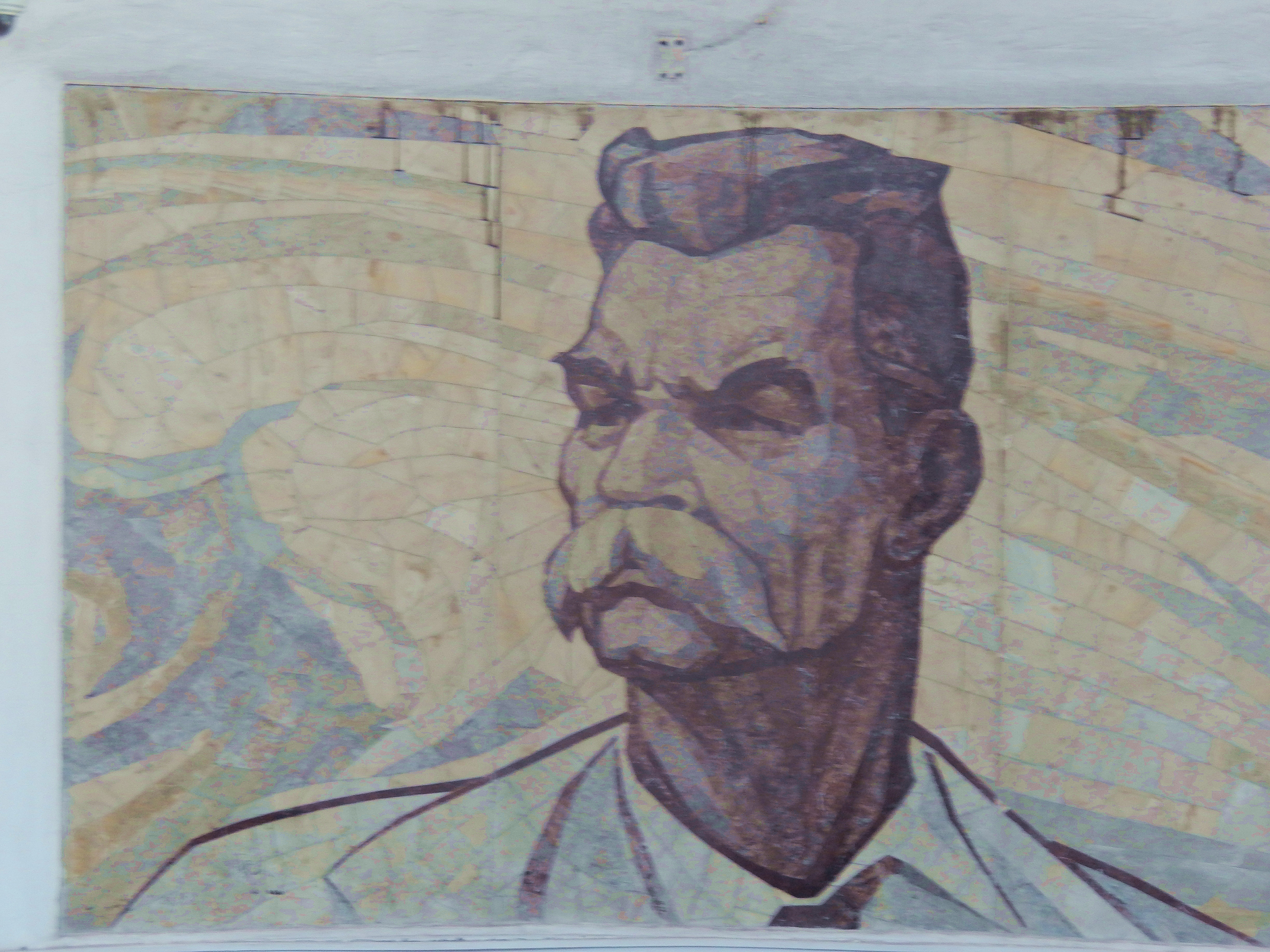Moscow’s splendorous Metro/Subway network
Major travel tip for the tiny budget traveller
For 55 Russian Ruble, you can buy a one way ticket which allows you to travel the Moscow Metro. No matter how long you ride or how many transfers you make, you pay no extra fee. The ticket is valid until you leave the metro network.
The golden tip:
Instead of buying a ticket, travelling to a specific metrostation and leave the network, it is wiser to calculate a route through the network from the initial station to the destination station which allows you to see as many metrostations as possible 🙂
The Moscow metro stations are the most beautiful ones in the world. They even surpass the beauty of those in Tashkent and in Saint Petersburg.
55 Ruble equals 0.77 Euro or 0.84 US Dollar!
Moscow Metro Network
Moscow metro system is famous for its art, murals, mosaics, and ornate chandeliers. It started operation in 1935 and immediately became the centrepiece of the transportation system. More than that it was a Stalinist device to awe and reward the populace, and give them an appreciation of Soviet realist art. It became the prototype for future Soviet large-scale technologies. Lazar Kaganovich was in charge; he designed the subway so that citizens would absorb the values and ethos of Stalinist civilisation as they rode. The artwork of the 13 original stations became nationally and internationally famous. For example, the Sverdlov Square subway station featured porcelain bas-reliefs depicting the daily life of the Soviet peoples, and the bas-reliefs at the Dynamo Stadium sports complex glorified sports and the physical prowess of the powerful new “Homo Sovieticus.” (Soviet man).
The metro was touted as the symbol of the new social order—a sort of Communist cathedral of engineering modernity. Soviet workers did the labour and the art work, but the main engineering designs, routes, and construction plans were handled by specialists recruited from the London Underground. The Britons called for tunnelling instead of the “cut-and-cover” technique, the use of escalators instead of lifts, and designed the routes and the rolling stock. The paranoia of Stalin and the NKVD was evident when the secret police arrested numerous British engineers for espionage—that is for gaining an in-depth knowledge of the city’s physical layout. Engineers for the Metropolitan Vickers Electrical Company were given a show trial and deported in 1933, ending the role of British business in the USSR.
Today, the Moscow Metro comprises twelve lines, mostly underground with a total of 203 stations. The Metro is one of the deepest subway systems in the world; for instance the Park Pobedy station, completed in 2003, at 84 metres (276 ft) underground, has the longest escalators in Europe. The Moscow Metro is one of the world’s busiest metro systems, serving about ten million passengers daily (300,000,000 people every month). Facing serious transportation problems, Moscow has plans for expanding its Metro. In 2016, the authorities launched a new circle metro railway that contributed to solving transportation issues, namely daily congestion at Koltsevaya Line.
The network map
The metro stations
The Wandelgek bought a 55 ruble one way ticket at Partizanskaya Metro station which was near to his hotel and started to visit several metro stations:
My tour de metro
1. Partizanskaya
 Partizanskaya (Russian: Партизанская), known until 2005 as Izmailovsky Park (Измайловский парк), is a station on the Arbatsko-Pokrovskaya Line of the Moscow Metro. It was built during World War II (it opened in 1944) and is dedicated to the Soviet partisans who resisted the Nazis. The name was changed on the 60th anniversary of Soviet victory to better reflect the theme of the station. The station’s design was the work of architect Vilenskiy.
Partizanskaya (Russian: Партизанская), known until 2005 as Izmailovsky Park (Измайловский парк), is a station on the Arbatsko-Pokrovskaya Line of the Moscow Metro. It was built during World War II (it opened in 1944) and is dedicated to the Soviet partisans who resisted the Nazis. The name was changed on the 60th anniversary of Soviet victory to better reflect the theme of the station. The station’s design was the work of architect Vilenskiy.
Partizanskaya is an unusual three-track layout with two island platforms. The centre track was built to handle crowds from a nearby stadium that was planned but never built because of the war. The centre track is still used during peak hours and for the trains heading to the Izmailovo depot. There is one row of pillars per platform. Both the walls and pillars of the station are faced with white marble and decorated with bas-reliefs honouring the partisans. The two pillars closest to the exit stairs are adorned with statues: Zoya Kosmodemyanskaya on the left and Matvey Kuzmin on the right.
The circular ceiling niche at the foot of the stairs originally contained a fresco by A.D. Goncharov, though this has since been painted over. At the top of the stairs is a sculptural group by Matvey Manizer entitled “Partisans” and bearing the inscription “To partisans and partisan glory!”.
Station’s original name was “Izmailovsky park kul’tury i otdyha imeni Stalina” (English: Stalin Ismailovsky Park of Culture and Leisure). It was changed to “Izmailovskaya” in 1948. In 1961, new station, named “Izmailovsky Park” at the time of its opening, was introduced. And in 1963, names of stations “Izmailovskaya” and “Izmailovsky Park” were switched, reason being which station was closer to the actual park’s main entrance.
The 2005’s rename to “Partizanskaya” has been mentioned in the open letter of a resigning Moscow’s toponymy commission member, as one of a number of then-recent renames with political causes rather than the historical toponymy upholding ones.
2. Elektrozavodskaya
 Elektrozavodskaya (Russian: Электрозаво́дская) is a Moscow Metro station on the Arbatsko-Pokrovskaya Line. It is one of the most spectacular and better-known stations of the system. Built as part of the third stage of the Moscow Metro and opened on 15 May 1944 during World War II, the station is one of the iconic symbols of the system, famous for its architectural decoration which is work of architects Vladimir Shchuko (who died whilst working on the station’s project in 1939) and Vladimir Gelfreich, along with participation of his student Igor Rozhin.
Elektrozavodskaya (Russian: Электрозаво́дская) is a Moscow Metro station on the Arbatsko-Pokrovskaya Line. It is one of the most spectacular and better-known stations of the system. Built as part of the third stage of the Moscow Metro and opened on 15 May 1944 during World War II, the station is one of the iconic symbols of the system, famous for its architectural decoration which is work of architects Vladimir Shchuko (who died whilst working on the station’s project in 1939) and Vladimir Gelfreich, along with participation of his student Igor Rozhin.
The station serves the Basmanny district and is located on the Bolshaya Semyonovskaya Street, next to the Yauza River. The railway station Elektrazavodskaya of the Kazan direction is also located nearby. In May 2007, the station was closed for a year during which the escalators were completely replaced, along with the floor panels. Most of the details and finishes including Motovilov’s bas-reliefs were refurbished. The station was reopened on 28 November 2008. By 2022, the station will be open to go to the Big Ring Metro Line named Rubtsovskaya.
Station Design
 Named after the electric light bulb factory nearby, the preliminary layout included Schuko’s idea of making the ceiling covered with six rows of circular incandescent inset lamps (of which there were 318 in total). However the outbreak of World War II halted all works until 1943 when construction resumed. Gelfreich and Rozhin finished the design by adding an addition theme to the station the struggle of the home front during the war, which is highlighted by the 12 marble bas-reliefs on the pylons done by Georgiy Motovilov. The rest of the station’s interior features most of the 1930s plans including powder-ballada marble on the rectangular pylons (the outside faces have sconces and decorative gilded grilles depicting the hammer and sickle), red salietti marble on the station walls, a dark olive duvalu marble on the socle and a chessboard layout on the main platform floor of granite and labradorite.
Named after the electric light bulb factory nearby, the preliminary layout included Schuko’s idea of making the ceiling covered with six rows of circular incandescent inset lamps (of which there were 318 in total). However the outbreak of World War II halted all works until 1943 when construction resumed. Gelfreich and Rozhin finished the design by adding an addition theme to the station the struggle of the home front during the war, which is highlighted by the 12 marble bas-reliefs on the pylons done by Georgiy Motovilov. The rest of the station’s interior features most of the 1930s plans including powder-ballada marble on the rectangular pylons (the outside faces have sconces and decorative gilded grilles depicting the hammer and sickle), red salietti marble on the station walls, a dark olive duvalu marble on the socle and a chessboard layout on the main platform floor of granite and labradorite.
The station’s hexagonal shaped vestibule, features a domed structure on a low drum, on the corner niches of which are six medallions with bas-reliefs of main pioneers in electricity and electrical engineering: William Gilbert, Benjamin Franklin, Mikhail Lomonosov, Michael Faraday, Pavel Yablochkov, and Alexander Popov along with their pioneering apparatus. The interior of the vestibule is further punctuated by the same bright red salietti marble. Outside the vestibule in the archway there is a sculpture to the metro-builders by Matvey Manizer.
The station’s legacy was that it serves as a bridge between the pre-war Art Deco-influenced Stalinist architecture as seen on the second stage stations and their post-war counterparts on the Koltsevaya Line. Both Gelfreich and Rozhin were awarded the Stalin Prize in 1946 for their work.
3. Kurskaya
 Kurskaya (Russian: Курская) is a station on the Arbatsko–Pokrovskaya line of the Moscow Metro.
Kurskaya (Russian: Курская) is a station on the Arbatsko–Pokrovskaya line of the Moscow Metro.
Name
It is named for the Kursky railway station located nearby.
Building
Designed by L. M. Polyakov and completed in 1938, the station has tiled walls and gray marble pylons with sconce light fixtures and circular ventilation grilles.
Transfers
From this station it is possible to transfer to Kurskaya on the Koltsevaya line and Chkalovskaya on the Lyublinskaya line.
4. Komsomolskaya
 Komsomolskaya (Russian: Комсомо́льская) is a Moscow Metro station in the Krasnoselsky District, Central Administrative Okrug, Moscow. It is on the Koltsevaya line, between Prospekt Mira and Kurskaya stations.
Komsomolskaya (Russian: Комсомо́льская) is a Moscow Metro station in the Krasnoselsky District, Central Administrative Okrug, Moscow. It is on the Koltsevaya line, between Prospekt Mira and Kurskaya stations.
The station is noted for its being located under the busiest Moscow transport hub, Komsomolskaya Square, which serves Leningradsky, Yaroslavsky, and Kazansky railway terminals. Because of that the station is one of the busiest in the whole system and is the most loaded one on the line. It opened on 30 January 1952 as a part of the second stage of the line.
Evolution of the design
While the first southern segment of the Koltsevaya line were dedicated to the victory over Nazi Germany, the northern segment (Belorusskaya-Koltsevaya to Komsomolskaya) was dedicated to the theme of post-war labour. Komsomolskaya, however, is a clear exception: lead designer Alexey Shchusev designed it as an illustration of a historical speech given by Joseph Stalin November 7, 1941. In this speech, Stalin evoked the memories of Alexander Nevsky, Dmitry Donskoy and other military leaders of the past, and all these historical figures eventually appeared on the mosaics of Komsomolskaya.
Early roots of the station’s design can be traced to a 1944 draft by Shchusev implemented in pure Petrine baroque, a local adaptation of the 17th century Dutch Golden Age. However, after the end of World War II the drafts of 1944 were discarded and the stations of the Koltsevaya line were completed in the mainstream late stalinist style of the period. Shchusev however, who died in 1949, retained his baroque nonce order.
Komsomolskaya remained Shchusev’s first and only metro station design. The station was initially planned as a traditional deep pylon type. Later, Shchusev replaced the heavy concrete pylons with narrow octagonal steel columns, riveted with marble tiles, creating the larger open space.
After Shchusev’s death, the station was completed by Viktor Kokorin, A. Zabolotnaya, V. Varvarin and O. Velikoretsky and Pavel Korin, the creator of the mosaics.
Architecture and decoration
Beginning with the large vestibule located among the former of the two train stations, the building features an immense octagonal dome topped by a cupola, and a spire crowned by a large star and imposing full-height portico with stylised Corinthian columns. Inside amid the Baroque-style ornaments, rich torchères and chandelier lights, two escalators descend, one leading to the old 1935 Komsomolskaya-Radialnaya station, and the second to this one.
Once on the platform level, the full details of this deep column station built to special design on a monolithic plan become apparent; there is an imposing Baroque ceiling, with accompanying friezes, painted yellow. Supporting the enlarged barrel vault are 68 octagonal columns faced with white marble, and topped with baroque pilasters. The platform is lit up by chandeliers and additional concealed elements in the niches of both the central and platform halls.
The theme of the design, the Historical Russian fight for freedom and independence, is expressed in eight large ceiling mosaics by Pavel Korin. Korin said that the inspiration came from Joseph Stalin’s speech at the Moscow Parade of 1941, where he inspired the soldiers amid the catastrophic losses in the early period of World War II to remember the historical heroics of their Russian forefathers. The idea to design the art as a mosaic came from the Saint Sophia Cathedral in Kiev, where Korin saw that such artforms could last for eternity. Chronologically the mosaics are as following:
- 1242: Alexander Nevsky after the Battle on the Ice.
- 1380: Dmitry Donskoy after the Battle of Kulikovo.
- 1612: Kuzma Minin and Dmitry Pozharsky after the end of the Time of Troubles.
- 1799: Alexander Suvorov after the Crossing of the Alps.
- 1812: Mikhail Kutuzov after the Battle of Borodino.
- 1945: The original mosaic here was of Red Army troops on Red Square receiving the Guards banner from Soviet army command, yet because it contained images of some commanders whose careers and legacy would later be re-evaluated (including Joseph Stalin) most of the mosaic was replaced with that of Vladimir Lenin addressing a meeting in Red Square, thus moving the date of the artwork to a period between 1917 and 1922.
- 1945: Soviet Troops on the Reichstag building after the Battle of Berlin (according to some, the original banner had superimposed profiles of Lenin and Stalin: the latter was removed to leave just Lenin remaining).
- 1945: The original image was of a Victory parade with Soviet soldiers throwing captured Nazi banners in front of Lenin’s mausoleum. However, for the same reason as the sixth image, this image would hold the record for retouchings. First when Lavrenty Beria was arrested in 1953, his glasses were erased and then the whole figure was removed. Then in 1957, after the political crisis saw the end of the careers of Vyacheslav Molotov and Lazar Kaganovich, their images followed suit. Finally, after 1961 brought the end of Stalin’s personality cult, in early 1963 the whole panel was taken down and Korin re-designed it by placing a maiden (symbolising Mother Russia) standing on the Nazi banners in front of the same mausoleum, holding a hammer and sickle in one hand and a palm branch in the other. This final one alone is made of more than 300 thousand mosaic tiles and takes up 31.5 square metres and weighs more than three tonnes.
However the artistic decoration does not stop there, for in between each of the mosaics there are further ones made of gilded smalt depicting various weaponry and armour: one set is focused on ancient Russian equipment, a second on the Napoleonic era, the third on World War II. At the end of the platform is a bust of Vladimir Lenin under an arch decorated with gilt floral designs and the Coat of arms of the Soviet Union.
In the centre of the red granite covered platform are two passageways, surrounded by marble balustrades with escalators that descend into a lobby with a main escalator tunnel upwards to the Sokolnicheskaya line’s Komsomolskaya station. On the wall opposite the escalator is a large fluorescent mosaic, also of Pavel Korin, depicting the Order of Victory surrounded by red and green banners and Georgian colours.
In 1951 both Pavel Korin and Alexey Schusev (posthumously) were awarded the Stalin Prize for their works on the station, and on 30 January 1952 the station was opened to the public as the first on the second stage of the Koltsevaya line. In 1958 the station was awarded the Grand Prix (“Grand Prize”) title of Expo ’58 in Brussels.
5. Prospect Mira
 Prospekt Mira (Russian: Проспе́кт Ми́ра) is a station of the Moscow Metro’s Koltsevaya line. Opened on 30 January 1952 as part of the second stage of the line, it is a pylon design by architects Vladimir Gelfreykh and Mikhail Minkus.
Prospekt Mira (Russian: Проспе́кт Ми́ра) is a station of the Moscow Metro’s Koltsevaya line. Opened on 30 January 1952 as part of the second stage of the line, it is a pylon design by architects Vladimir Gelfreykh and Mikhail Minkus.
Called initially Botanichesky Sad (Ботанический Сад) after the Botanical Garden of Moscow State University which are located nearby, the theme of this station develops the connotation of the name in the overall colour tone. The arches are faced with flared white marble and are topped with ceramic bas-relief frieze made of floral elements. In the centre are medallion bas-reliefs (work of G.Motovilov) featuring the different aspects in the development of agriculture in the Soviet Union. The station walls are laid with dark red Ural marble and chessboard floor pattern is made of grey and black granite. The ceiling vault is decorated with casts, and lighting comes from several cylindrical chandeliers.
The station’s vestibule is built into the ground floor of a multi-story building on the corner of Mira Avenue and Protopopovsky lane. Designed by A.Arkin, its façade features sculptures and an original clock over the two archways. Inside, opposite the escalator hall is a large smalt artwork Mothers of the World by A.Kuznetsov.
In 1958, the wall at the end of the station was dismantled to make way for a transfer to the new station Botanichesky Sad on the Rizhskaya line. In 1966 both stations were renamed after to avoid confusion with the larger Moscow Botanical Garden of Academy of Sciences, which would eventually see the station Botanichesky Sad be named after that in 1978.
In May 2015, the vestibule of the station was closed for one year, due to major refurbishments works, reopened on 16 May 2016.
6. Novoslobodskaya
 Novoslobodskaya (Russian: Новослобо́дская) is a Moscow Metro station in the Tverskoy District of the Central Administrative Okrug, Moscow. It is on the Koltsevaya Line, between Belorusskaya and Prospekt Mira stations. Novoslobodskaya was opened on 30 January 1952.
Novoslobodskaya (Russian: Новослобо́дская) is a Moscow Metro station in the Tverskoy District of the Central Administrative Okrug, Moscow. It is on the Koltsevaya Line, between Belorusskaya and Prospekt Mira stations. Novoslobodskaya was opened on 30 January 1952.
Architecture and art
Alexey Dushkin, the station’s architect, has long wished to utilise stained glass in decoration of a metro station, and the first drawings date to pre–World War II times. In 1948, with the aid of a young architect Alexander Strelkov, Dushkin came across the renowned artist Pavel Korin, who agreed to compose the artworks for the panels. The rest of the station was designed around the glass panels. Dushkin, taking the standard pylon layout designed the overall impression to resemble that of underground crypt.
It is best known for its 32 stained glass panels, which are the work of Latvian artists E. Veylandan, E. Krests, and M. Ryskin. Each panel, surrounded by an elaborate brass border, is set into one of the station’s pylons and illuminated from within. Both the pylons and the pointed arches between them are faced with pinkish Ural marble and edged with brass molding. At the end of the platform is a mosaic by Pavel Korin entitled “Peace Throughout the World.” The stained glass panels, the mosaic, the brass trim, and the elegant conical chandeliers were all carefully cleaned and restored in 2003.
The vestibule is an imposing structure with a grand portico, located on the northeast corner of Novoslobodskaya and Seleznevskaya streets.
Transfers
From this station it is possible to transfer to Mendeleyevskaya station on the Serpukhovsko-Timiryazevskaya Line.
7. Beloruskaya
 Belorusskaya (Russian: Белору́сская) is a station on the Moscow Metro’s Koltsevaya line. It is named after the nearby Belorussky Rail Terminal. It opened in 1952, serving briefly as the terminus of the line before the circle was completed in 1954. Designed by Ivan Taranov, Z. Abramova, A. Markova, and Ya. Tatarzhinskaya, the station has low, white marble pylons, an elaborately patterned plaster ceiling, light fixtures supported by ornate scroll-shaped brackets, and a variety of decorations based on Belarusian themes.
Belorusskaya (Russian: Белору́сская) is a station on the Moscow Metro’s Koltsevaya line. It is named after the nearby Belorussky Rail Terminal. It opened in 1952, serving briefly as the terminus of the line before the circle was completed in 1954. Designed by Ivan Taranov, Z. Abramova, A. Markova, and Ya. Tatarzhinskaya, the station has low, white marble pylons, an elaborately patterned plaster ceiling, light fixtures supported by ornate scroll-shaped brackets, and a variety of decorations based on Belarusian themes.
Overhead, twelve octagonal mosaics by G. Opryshko, S. Volkov, and I. Morozov depict Belarusian daily life, and underfoot the platform is intricately tiled to resemble a Belarusian quilt. A sculptural group by sculptor Matvey Manizer called “Soviet Belorussia” used to stand at the end of the platform before it was removed in 1998 to make room for a second entrance. Another sculptural group, “Belarusian Partisans,” by S.M. Orlov, S. M. Rabinovich, and I. A. Slonim, is located in the passage between this station and Belorusskaya–Radialnaya.
The station’s original vestibule is located at the southwest corner of Belorusskaya Square. A newer entrance opens onto Butirsky Val Street.
In 2002, a bomb exploded under one of Belorusskaya’s marble benches, injuring seven people.
Transfers
From this station passengers can transfer to Belorusskaya on the Zamoskvoretskaya line, whose metro entrance in closest to Aeroexpress, direct train to Sheremetevo Airport.
8. Mayakovskaya
 Mayakovskaya (Russian: Маяковская), is a Moscow Metro station on the Zamoskvoretskaya Line, in the Tverskoy District of central Moscow.
Mayakovskaya (Russian: Маяковская), is a Moscow Metro station on the Zamoskvoretskaya Line, in the Tverskoy District of central Moscow.
The name as well as the design is a reference to Futurism and its prominent Russian exponent Vladimir Mayakovsky. Considered to be one of the most beautiful in the system, it is a fine example of pre-World War II Stalinist Architecture and one of the most famous Metro stations in the world. It is most well known for its 34 ceiling mosaics depicting “24 Hours in the Land of the Soviets.” During World War II, it was used as a command post for Moscow’s anti-aircraft regiment.
History
The station was built as part of the second stage of the Moscow Metro expansion, opening on 11 September 1938. If the first stage was more focused on the building of the system itself, both architecturally and in terms of the engineering, the stations appear modest in comparison to those that the second stage brought to the system. For the first time in the world, instead of having the traditional three-neath pylon station layout, the engineers were able to overlap the vault space and support it with two sets of colonnades on each side. This gave birth to a new Deep column station type design, and Mayakovskaya was the first station to show this.
 Located 33 meters beneath the surface, the station became famous during World War II when an air raid shelter was located in the station. On the anniversary of the October Revolution, on 7 November 1941, Joseph Stalin addressed a mass assembly of party leaders and ordinary Muscovites in the central hall of the station. During World War II, Stalin took residence in this place.
Located 33 meters beneath the surface, the station became famous during World War II when an air raid shelter was located in the station. On the anniversary of the October Revolution, on 7 November 1941, Joseph Stalin addressed a mass assembly of party leaders and ordinary Muscovites in the central hall of the station. During World War II, Stalin took residence in this place.
Design
Alexey Dushkin’s Art Deco architecture was based on a Soviet future as envisioned by the poet Mayakovsky. The station features streamlined columns faced with stainless steel and pink rhodonite, white Ufaley and grey Diorite marble walls, a flooring pattern of white and pink marble, and 35 niches, one for each vault. Surrounded by filament lights there are a total of 34 ceiling mosaics by Alexander Deyneka with the theme “24-Hour Soviet Sky.”
In 2005 a new second north exit was built, along with a new vestibule. Passengers leaving the station first descend on a short escalator ride into an underground vestibule, and then ascend the long way to the surface. The new exit also allows access to the 35th mosaic, which was previously hidden behind the service section. Other mosaic works were designed from scratch, accompanied by ample use of marble and stainless steel sculpturing. The bust of the poet Vladimir Mayakovsky was moved to the new surface vestibule, whose ceiling was also decorated with a mosaic composition from Mayakovsky’s poem “Moscow Sky”.
9. Teatralnaya
 Teatralnaya (Russian: Театра́льная, English: Theater) is an underground metro station on the Zamoskvoretskaya line of the Moscow Metro, named for the nearby Teatralnaya Square, the location of numerous theaters, including the famed Bolshoi Theatre. The station is unique in that it does not have its own entrance halls. The north escalator leads to Okhotniy Ryad and the south escalator to Ploshchad Revolyutsii.
Teatralnaya (Russian: Театра́льная, English: Theater) is an underground metro station on the Zamoskvoretskaya line of the Moscow Metro, named for the nearby Teatralnaya Square, the location of numerous theaters, including the famed Bolshoi Theatre. The station is unique in that it does not have its own entrance halls. The north escalator leads to Okhotniy Ryad and the south escalator to Ploshchad Revolyutsii.
History
Ploshchad Sverdlova station opened on September 11, 1938 as part of the second stage of construction of the Moscow Metro system. It was the terminal station of the Zamoskvoretskaya line until the line was extended on January 1, 1943. Teatralnaya’s architect was Ivan Fomin. The station is located at a depth of 33.9 meters (111 ft). The central hall has a diameter of 9.5 meters (31 ft), with an 8.5 meter (28 ft) lateral lining of cast-iron tubing.
From its opening until 1990, the station’s name was Ploshchad Sverdlova, which was named in honor of the prominent Bolshevik, Yakov Sverdlov. In 1990, the city changed the name of the square to Teatralnaya Ploshchad. The name of the station followed accordingly.
Decoration
Teatralnaya Station has fluted pylons faced with labradorite and white marble taken from the demolished Cathedral of Christ the Saviour. Crystal lamps in bronze frames attached to the center of the room give the central hall a festive appearance. The vault of the central hall is decorated with caissons and majolica bas-reliefs by Natyla Danko on the theme of theatre arts of the USSR, manufactured by Leningrad Porcelain Factory. These bas-reliefs are a series of fourteen different figures, each representing music and dance from various nationalities of the Soviet Union. Seven male and seven female figures attired in their national costumes are either performing an ethnic dance or are playing a distinctively ethnic musical instrument. The series included Armenia, Belorussia, Georgia, Kazakhstan, Russia, Ukraine and Uzbekistan. Each figure is reproduced four times for a total of 56 figures. Initially, the floor was of black-and-yellow granite patterned as a chessboard; however in 1970, the yellow panels were replaced with gray.
A bust of Yakov Sverdlov, for whom the station was originally named, was located at the end of the platform opposite the escalators. Only the base remains today. A bust of Vladimir Lenin was however, preserved.
Transfers
From this station it is possible to transfer to Okhotniy Ryad on the Sokolnicheskaya Line and Ploshchad Revolyutsii on the Arbatsko-Pokrovskaya line.
10. Kiyevskaya
 Kiyevskaya (Russian: Ки́евская) is a Moscow Metro station in the Dorogomilovo District, Western Administrative Okrug, Moscow. It is on the Koltsevaya Line, between Park Kultury and Krasnopresnenskaya stations. It is named after the nearby Kiyevsky Rail Terminal. The design for the station was chosen in an open competition held in Ukraine; the entry submitted by the team of E. I. Katonin, V. K. Skugarev, and G. E. Golubev placed first among 73 others and it became the final design. Kievskaya features low, square pylons faced with white marble and surmounted by large mosaics by A.V. Myzin celebrating Russo-Ukrainian unity. Both the mosaics and the arches between the pylons are edged with elaborate gold-colored trim. At the end of the platform is a portrait of Vladimir Lenin.
Kiyevskaya (Russian: Ки́евская) is a Moscow Metro station in the Dorogomilovo District, Western Administrative Okrug, Moscow. It is on the Koltsevaya Line, between Park Kultury and Krasnopresnenskaya stations. It is named after the nearby Kiyevsky Rail Terminal. The design for the station was chosen in an open competition held in Ukraine; the entry submitted by the team of E. I. Katonin, V. K. Skugarev, and G. E. Golubev placed first among 73 others and it became the final design. Kievskaya features low, square pylons faced with white marble and surmounted by large mosaics by A.V. Myzin celebrating Russo-Ukrainian unity. Both the mosaics and the arches between the pylons are edged with elaborate gold-colored trim. At the end of the platform is a portrait of Vladimir Lenin.
The entrance to the station, which is shared with both of the other two Kievskaya stations, is built into the Kiev railway station. With the completion of the segment of track between Belorusskaya and Park Kultury in 1954 the Koltsevaya Line became fully operational with trains running continuously around the loop for the first time.
One of the station’s entrances is topped by a reproduction of an Art Nouveau Paris Metro entrance by Hector Guimard, given by the Régie autonome des transports parisiens in 2006 in exchange for an artwork by Russian artist Ivan Lubennikov installed at Madeleine station in Paris.
Transfers
From this station passengers can transfer to Kiyevskaya on the Arbatsko-Pokrovskaya Line and Kiyevskaya on the Filyovskaya Line.
Kiyevskaya (Russian: Киевская), named for the nearby Kiyevsky railway station, is a station on the Arbatsko–Pokrovskaya line of the Moscow Metro. Opened in 1953, it is lavishly decorated in the quasi-baroque style that predominated in the early 1950s. The square pylons are faced with white Ural marble and elaborately patterned ceramic tile and the plastered ceiling is decorated with a series of frescoes by various artists depicting life in Ukraine. A large mosaic at the end of the platform commemorates the 300th anniversary of the reunification of Russia and Ukraine. Light comes from a row of hexagonal chandeliers. The architects were L. V. Lile, V. A. Litvinov, M. F. Markovsky, and V. M. Dobrokovsky.
Kiyevskaya has no vestibule of its own. Instead, escalators at the end of the hall lead to Kiyevskaya and thence to that station’s entrance, which is built into the Kiyevsky railway station.
Transfers
From this station it is possible to transfer to Kiyevskaya on the Filyovskaya line and the Kiyevskaya on the Ring.
For half a century Kiyevskaya was the terminus of the Arbatsko–Pokrovskaya line; the 2003 extension to Park Pobedy ended that situation.
The Wandelgek ended his tour through the Moscow Metro network at Kyevskaya and left the metro network. From that moment the metro ticket becomes invalid. A new ticket is needed to enter the metro network again, but The Wandelgek had other plans. See my next blog for that.
The Wandelgek stayed for a couple of days in Moscow and visited 3 additional metro stations.
11. Ploshchad Revolyutsii
 Ploshchad Revolyutsii (Russian: Пло́щадь Револю́ции) is a station on the Moscow Metro, in the Tverskoy District of central Moscow. The station is named after Revolution Square, under which it is located. It is on the Arbatsko-Pokrovskaya Line.
Ploshchad Revolyutsii (Russian: Пло́щадь Револю́ции) is a station on the Moscow Metro, in the Tverskoy District of central Moscow. The station is named after Revolution Square, under which it is located. It is on the Arbatsko-Pokrovskaya Line.
History
When the Arbatsko-Pokrovskaya Line was first built, the tracks from Ploshchad Revolyutsii extended westward to Aleksandrovsky Sad rather than Arbatskaya. When the westward extension of the line was completed in 1953, trains were rerouted through the new segment.
Architecture
The station opened in 1938, its architect was Alexey Dushkin. The station features red and yellow marble arches resting on low pylons faced with black Armenian marble. The spaces between the arches are partially filled by decorative ventilation grilles and ceiling tracery.
Sculptures
The station contains 76 statues in the socialist realism style. Each arch is flanked by a pair of bronze sculptures by Matvey Manizer depicting the people of the Soviet Union, including soldiers, farmers, athletes, writers, aviators, industrial workers, and schoolchildren.
Transfers
From this station, passengers can transfer to Teatralnaya on the Zamoskvoretskaya Line and Okhotny Ryad on the Sokolnicheskaya Line, but the latter can be reached only through Teatralnaya as there is no direct transfer.
12. Tverskaya
 Tverskaya (Russian: Тверская) is a station on Moscow Metro’s Zamoskvoretskaya line. The station is along Tverskaya Street under Pushkin Square in Moscow. From its opening in 1979 until 1990, it was named Gorkovskaya, which was the name of Tverskaya Street during the Soviet times. After the government restored the Tverskaya name in 1990, he station’s name was changed accordingly.
Tverskaya (Russian: Тверская) is a station on Moscow Metro’s Zamoskvoretskaya line. The station is along Tverskaya Street under Pushkin Square in Moscow. From its opening in 1979 until 1990, it was named Gorkovskaya, which was the name of Tverskaya Street during the Soviet times. After the government restored the Tverskaya name in 1990, he station’s name was changed accordingly.
The station was originally planned to open in 1938 along with the rest of the Gorkovsky radius of the second stage of the Metro. However this was abandoned and a provision of a straight tunnel, with a reinforced structure was left. However upon the change in the Metro development plans in the early 1960s, the city included a transfer station on the line. As a result, in 1975, after the opening of Pushkinskaya station, construction on Tverskaya began. The design marked a real engineering achievement, as the central hall, and the passenger platforms were built without any disruption to the service.
Design
The decoration is dedicated to the works of the author, and architects R. Semerdzhiev, B. Thor, N. Shreter and V. Cheremin made best to simultaneously show the revolutionary constructivism shapes of flared pylons and plastered ceiling thus leaving the engineering achievement visible. White marble was used for pylons and walls and red granite for the floor. Originally the end of the station was decorated with a sculptural composition dedicated to the theme of his works. However, in 1987 after the opening of a transfer with Chekhovskaya, the composition was moved to the escalator lobby in the transfer. Transfer to Pushkinskaya is achieved through the two underplatform passageways, and via the vestibule under the Pushkin square which they share.
2000 Bomb Attack
In August 2000, a homemade bomb was detonated in the walkway leading to Pushkin Square. Seven victims were killed at the scene and six others died in hospitals. The explosion injured 118 others. The initial criminal investigation that followed blamed several criminal groups that were battling for the rights to operate retail kiosks in the walkway. Later, prosecutors looked at groups associated with Achemez Gochiyayev and Arbi Barayev. No one was brought to trial for the attack.
13. Park Kultury
 Park Kultury (Russian: Парк Культу́ры, English: Park of Culture) is a Moscow Metro station in the Khamovniki District, Central Administrative Okrug, Moscow. It is on the Sokolnicheskaya line, between Frunzenskaya and Kropotkinskaya stations. Named after the nearby Maxim Gorky Park of Culture and Leisure located across the Moskva River.
Park Kultury (Russian: Парк Культу́ры, English: Park of Culture) is a Moscow Metro station in the Khamovniki District, Central Administrative Okrug, Moscow. It is on the Sokolnicheskaya line, between Frunzenskaya and Kropotkinskaya stations. Named after the nearby Maxim Gorky Park of Culture and Leisure located across the Moskva River.
The station was designed by Nikolai Kolli and opened on 15 May 1935, along with the first phase of the Moscow Metro.
History
The construction of the station began in the spring of 1933. From the start it was clear that construction of this final station would not be an easy task. Being only several hundred metres from the bank of the Moskva River, the soil was particularly damp, with the level of subterranean waters being higher than the future ceiling of the station.
Even more important was the fact that the station is situated under the Crimean Square (Krymskaya Ploshchad) of the Garden Ring’s intersection with the southwestern Ostozhenka Street/Komsomolsky Avenue and thus being an important traffic hub. Before the pit of the station was excavated along its future perimeter, metallic casts reinforced by solid logs with caulked slits between them were forced into the ground, and abyssal water lowering was employed as the pit was slowly excavated to its required depth. All of this was necessary to prevent the flooding of the pit, which was likely to have caused subsidence and even destruction of nearby houses. As soon as that work was completed, a wooden bridge was erected at street level to prevent traffic disruption. Most of the construction was carried out at night. The station was completed in eleven months during which time 100,000 cubic metres of soil was removed from the pit and replaced with 25,000 cubic metres of concrete.
The station is a bi-level pillar-trispan with four footbridges above the platforms. Architects Krutikov and Popov chose a decoration inspired by ancient Greek elements. Along the platform, two rows of 22 pillars are faced with Crimean marble Kadykovka and topped with moulded сapitals. Along the walls a set of dark rose-coloured mosaic pilasters repeat the step of the pillars (every seven metres), blending very well with the porcelain tiles that face the rest of the wall area. Also, a dark-brown mosaic socle runs below the platform level along both walls. A total of 1500 square meters of marble, and 200 square metres of porcelain tiles, were used in the decorations.
The footbridges which lead to the vestibules are separately decorated with red metalloplastic tiles and moulded white balustrades with marbled railings. The walls of the corridors leading to the vestibules are revetted with white uralian koelga marble.
The station originally had two vestibules, one of which, a distinctive rotunda building, still stands on the corner between Ostozhenka street and Novokrymskiy side-street. The second vestibule used to stand on the corner of Komsmolskiy Avenue and Sadovoye Koltso. The ticket hall was faced with brown Ural ufaley marble and had four welded octagonal columns faced with white koelga marble. The ticket offices themselves were built out of polished oak. This vestibule was pulled down in 1949 when a larger vestibule was erected in its place, and the old corridors were integrated into it. The vestibule also offers a transfer to the Koltsevaya line, which was opened in 1950.
This station is one of the few surviving from the first stage that have remained more or less unchanged since their opening (compared with Lubyanka or Chistiye Prudy), except for the resurfacing the platform with granite (instead of original asphalt) and the installation of new lighting. The latter consisted of beautiful chandeliers in the central span and semi-circular lamps made of milk-white glass in side naves. However, with the introduction of luminescent lamps, the chandeliers and the lamps in the naves were completely removed. Despite that, the new lighting installations managed to fit in with the architectural composition and do not appear out of place, like on Kiyevskaya which had an analogous makeover.
When the station opened in 1935, it was also the terminus of the Frunze Branch of the first stage (and from 1938, of Kirovsko–Frunzenskaya line). Although the plans called for the station to have a four-track reversal siding, that was not finished until 1937, and a temporary piston junction was instead installed before the platform to allow reversal of the trains. The station ceased to be the terminus in 1957, with the extension of the Frunzenskiy radius southwestward to Sportivnaya.
When the station was opened, it had quite a long name: Tsentralnyi Park Kultury i Otdykha imeni Gorkovo (The Maxim Gorky Central Park of Culture and Leisure). However, even on the plans it was abbreviated as TsPKiO and only voice announcements used the full name. In 1980, with the holding of the Olympic Games in Moscow, the name was shortened to avoid lengthy trilingual station announcements, although some signs still bear the original long version of the name.
The station is used by 107,700 people daily, mainly passengers changing to and from Park Kultury on the Circle line, with only 9,650 passengers entering and leaving the Metro system at the station.
On March 29, 2010, the station, along with Lubyanka, was subject to a terrorist attack, resulting in 40 casualties.





